














With disruption continuing apace, ESG compliance now mission critical, and inflation squeezing everyone, collaboration has never been more important in supply.
Today’s world is so riven with uncertainty it has become part of the ‘new normal’ for businesses. Normal or not, market conditions are hostile, and organisations must find ways to move things around the globe – not just in a timely fashion but also in ways that are sustainable.
Fail to do either and they run the risk of losing or alienating customers.


The demands being made of supply chains are vastly different to pre-pandemic times, so it ought not be a surprise that the ways businesses are meeting these demands have also changed.
In short, supply is becoming more collaborative. Competitors in vertical markets are beginning to share logistical resources because it’s cheaper that way, and helps offset spiralling cost inflation.
Businesses looking to meet net zero goals are working closely with suppliers, to educate and empower them to be more sustainable.
And companies are also beginning to talk about how one day they will share data with one another, so they can work smarter around all aspects of supply – from designing sustainability into products to optimising supplier contract negotiations.

Supply is more about networks than chains these days. Who knows, eventually, we might have to change the name of this magazine.
SEAN ASHCROFT sean.ashcroft@bizclikmedia.com


“Businesses looking to meet net zero goals are working closely with suppliers, to educate and empower them to be more sustainable”



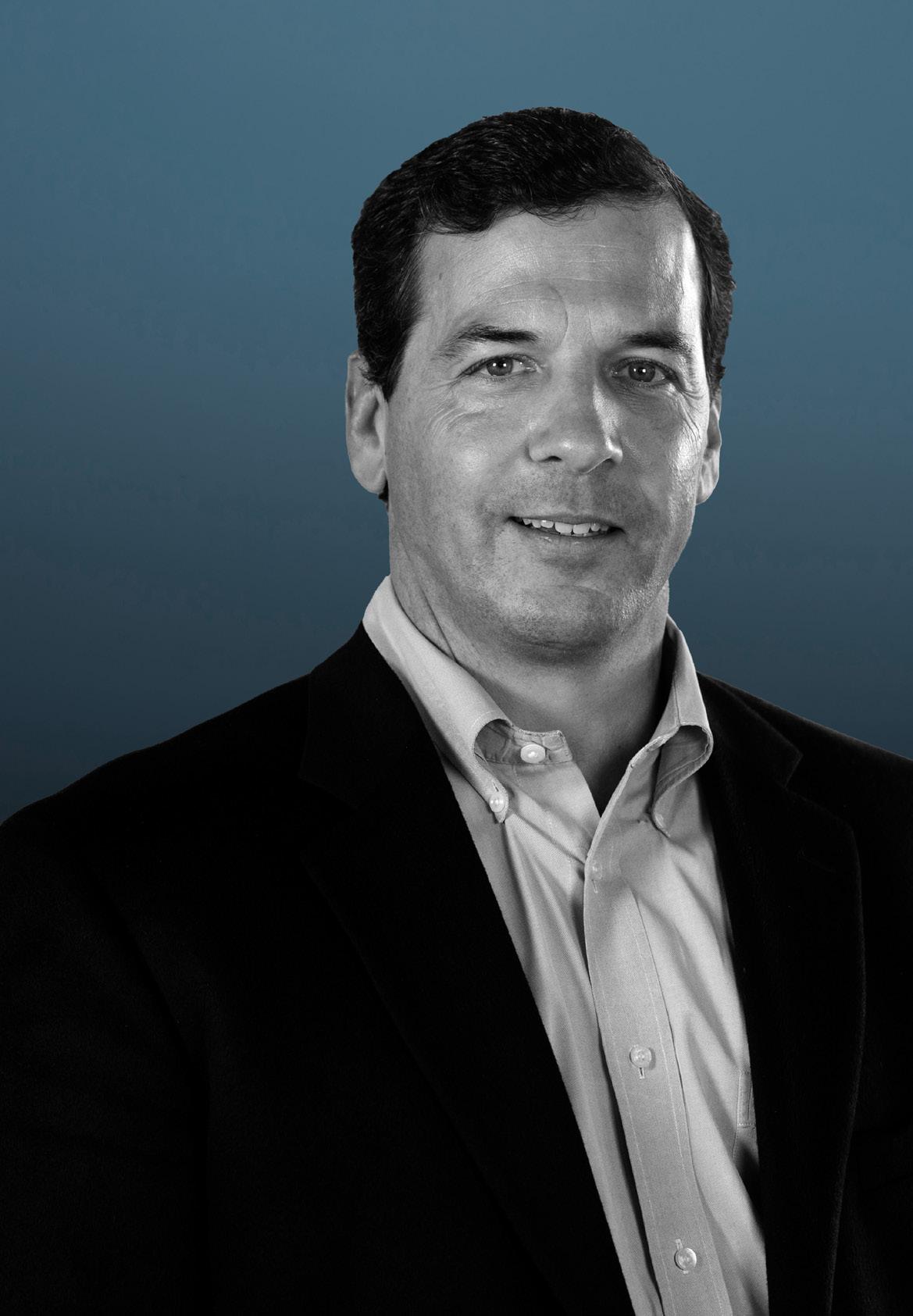
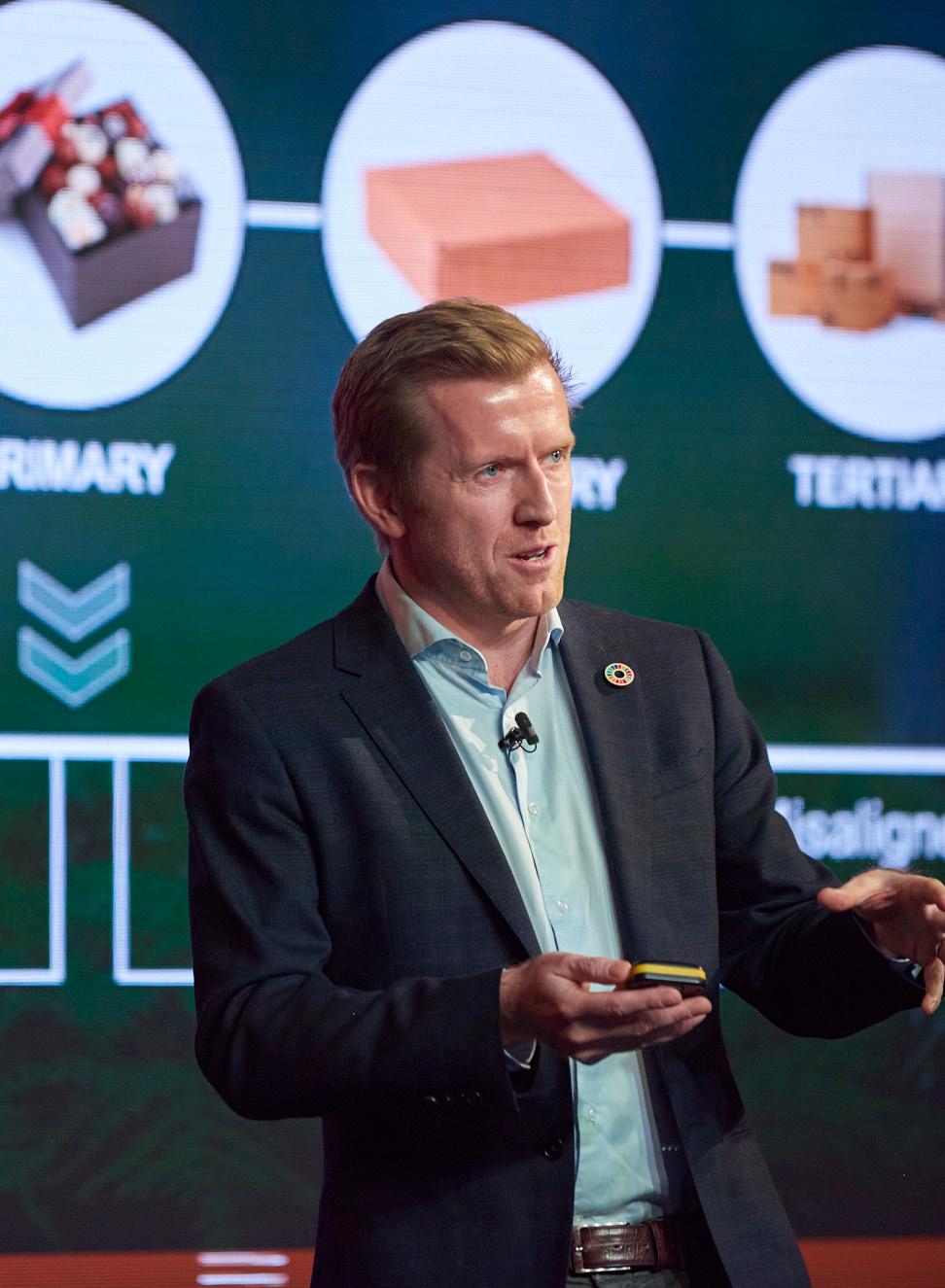

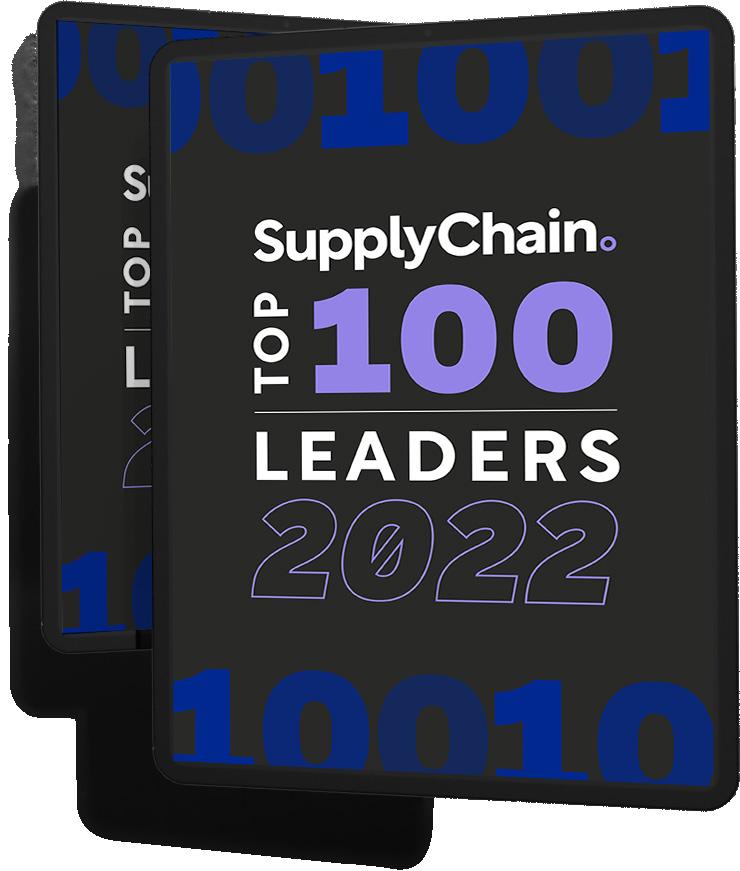

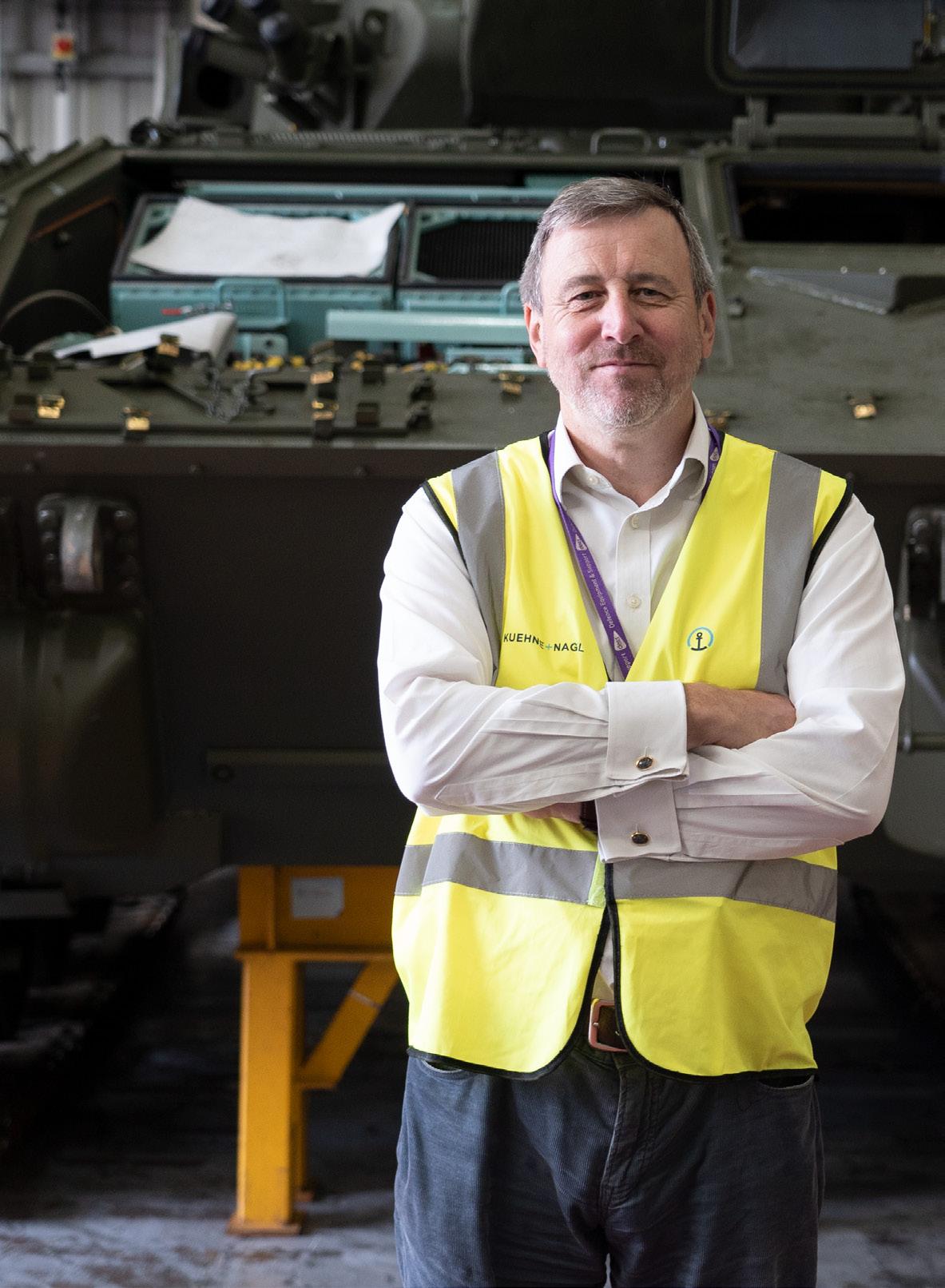



Minnesota, US Thanksgiving is a cherished American institution that began life as a harvest festival. Today it sees families across the US gather on the fourth Thursday of every November to celebrate, and to drink and eat – mainly turkey.
Minnesota has long been the turkey capital of the US and –some would argue – the world. Every year Minnesota turkey farmers raise 40-42 million birds.
Its 600 turkey farms and stakeholders generate an estimated $1bn in economic activity for Minnesota, and provide around 26,000 jobs.




 Source: McKinsey
Source: McKinsey
Plastic has gone from being a revolutionary material that was invented with good intentions to an unsustainable single-use function of consumerism, with global supply chains driving consumption.

In 1869, the first synthetic polymer was created. John Wesley Hyatt responded to a New York firm’s offer of US$10,000 for an alternative to ivory, which at the time meant that around 20,000 elephants each year were being slaughtered.
The birth of fast food – driven by firms such as McDonalds – and the rise of plastics manufacturing in turn gave rise to a takeaway culture that saw people use plastic cutlery on a global scale. It was the start of unsustainable waste that continues to plague the world today.
Like all plastic, plastic bags begin life as fossil fuels and end up as non-decomposable waste in landfills and the ocean. But in the 1970s, supermarket chains bought them in their billions, and only recently introduced ‘bags for life’ as a replacement.

While plastic was developed with good intentions, the case against it increased. In the 90s researchers found that 60-80% of plastic in the ocean would not go away. While it proved more convenient for businesses and consumers, plastic was adversely affecting life under the sea— another problem that can be seen today.
The world begins to see that single-use plastics have no place in the circular economy. Plastics organisations such as the British Plastics Federation begint to work with stakeholder to achieve a circular plastics economy, and reduce leakage of plastic waste into the environment.
From the late 2010s to the present, exciting new alternative packaging concepts begin to emerge, such as biodegradable bottles, liquid packaging solutions, and alternative materials, such as starch-based polymers. The fast-food sector makes the switch to cardboard and paper packaging during the spike in food delivery during COVID-19.
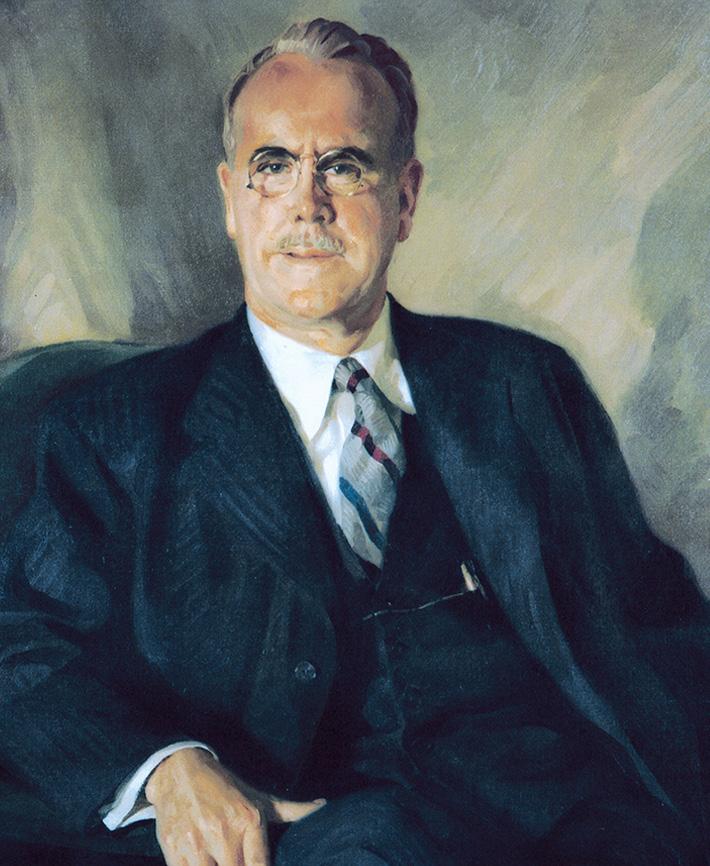
British logistician and business consultant Keith Oliver is a trailblazer in the truest sense of the word, being the very man who first coined the term ‘supply chain’.
Keith Oliver was educated in the UK at Monmouth School and Birmingham University. He was a Methods Analyst at the West Midlands Gas Board before joining consultancy firm Booz Allen Hamilton.
It was while there, in the late 1970s, that Oliver began formulating his revolutionary ideas while working with clients including SKF, Heineken, Hoechst, CadburySchweppes, and Philips.
His key ideas around the subject are said to have gelled during an engagement with Philips, the Dutch consumer electronics manufacturer.
During this time, Oliver first developed his vision for tearing down the functional silos that separated production, marketing, distribution, sales, and finance – to generate a reduction in inventory and a simultaneous improvement in customer service.
Looking for a catchy phrase to describe the concept, Oliver’s colleagues suggested the term ‘integrated inventory management’.
But Oliver was not convinced. On June 4, 1982, he forever changed how we would refer to the business of moving goods around the world. In an interview with Arnold Kransdorff in the Financial Times, Oliver discussed his new business concept, which he dubbed ‘supply chain management’.
He defined it thus: “Supply chain management (SCM) is the process of
planning, implementing, and controlling the operations of the supply chain, with the purpose to satisfy customer requirements as efficiently as possible. It spans all movement and storage of raw materials, work-in-process inventory, and finished goods from point-of-origin to pointof-consumption.”
The term could have easily disappeared into the history of business jargon. Instead, SCM rapidly passed into the public domain – a sure sign the concept resonated with executives wrestling with the endless challenges of procurement, logistics, operations, sales, and marketing activities that fall within its realm.
Oliver went on to serve Booz Allen for 41 years, and, down the decades, undertook boardroom-level assignments across all manner of businesses, focusing on supply chain strategy and management control.
As a consultant, he was able to offer laser-sharp guidance on all aspects of industry supply chains, from material procurement and purchasing through the manufacturing processes, as well as distribution and the marketplace interfaces of demand capture and customer service.
Towards the end of his career, Oliver’s focus turned to how service businesses could find real-world applications for the supply chain.
In an article headline, ‘ When will supply chain management grow up ?’, Tim Laseter – a supply chain professional now with the University of Virginia – explored the origins and evolution of Oliver’s SCM concept.
He wrote: “Both the term and the discipline it describes have evolved considerably during the past two decades. Indeed, by today’s standards, the original scope of SCM appears quite narrow.
“Initially, it applied only within the boundaries of a single company. The challenge was simply getting production, sales, finance, marketing, and distribution operating in concert to focus on the movement and availability of finished goods.
“It’s hard to believe that management’s perspective could have been so limited.”
Laseter added: “SCM began to look outside the company’s four walls and the first place attention alighted, naturally, was on customers.”
But he goes on to point out that, since the late 1990s, many leading companies have placed greater emphasis on cost reduction and innovation at the supplier end of the chain.
“With this evolution, SCM’s scope has expanded well beyond the movement of materials,” Laster writes. “Now, the term ‘supply chain management’ encompasses such concepts as strategic sourcing and supplier involvement in product development.”
The term has, however, evolved and Oliver’s place in the pantheon of noted supply chain figures is secure.
“ON JUNE 4, 1982, OLIVER FOREVER CHANGED HOW WE’D REFER TO THE BUSINESS OF MOVING GOODS AROUND THE WORLD”
» In the late 80s, I got into electronics, and in 1991 I founded Partstat. From there, it’s been an exercise in adapting our company and the services we provide to meet the growing demands of our customers.

In 2012, we identified an opportunity to heighten our value to customers by harnessing and reviewing data from a large scale. This insight guided the development of our big data warehouse that gives us real-time inventory positions of all the major authorised distributors and component manufacturers.
» Intel’s CEO said he felt the chip shortage will go into 2024, but that’s a bit optimistic in my opinion. Rising inflation and interest rates have put constraints on the semiconductor industry as it tries to work through the critical labour shortage and ramp up production.
There are also geopolitical issues at play. Taiwan makes a huge amount of the world’s chips, but if China makes its move it will worsen the chip shortage.
» Any sector that’s electronic and dependent on semiconductors has been hard hit.
On the OEM level, companies that use many different semiconductors but not a high volume of any of them have been severely impacted. In the queue, they’re behind companies requiring high volumes of chips.
» Having experienced similar inventory challenges in the past, we’ve learned that, when there’s a disruption or technology change, OEMs tend to double and triple orders from multiple suppliers. But, when OEMs receive the inventory, they cancel the other supplier orders and this creates issues, including potentially an abundance of inventory in the marketplace.
Manufacturers are aware of this and are carefully measuring how they upscale production, knowing that past forecasting has been an issue. One way OEMs can gain a stronger position with chip manufacturers
are
on computer chips – and
specialist semiconductor storage facility is one solution
is by making a financial commitment to the manufacturer over a specific period of time, for a specific volume of inventory.
» Semiconductors cannot be stored in ambient storage facilities. A high percentage of third-party logistic companies have storage areas that aren’t air-conditioned or humidity controlled. The careful handling of semiconductors is a significant challenge for such companies. For them, it’s primarily about the footprint on the storage facility floor, and shipping inner and outer box quantities.
Semiconductors are delivered inside vacuum-sealed packaging, which means warehousing facilities need a special environment and experienced, trained employees to open the packages, remove the quantities the manufacturer requires, ship them according to their specifications to protect them, and then repackage them for future delivery.
It’s a more sophisticated fulfilment and warehousing environment than what is available in most storage facilities today, so upgrades are needed to handle the chips properly.
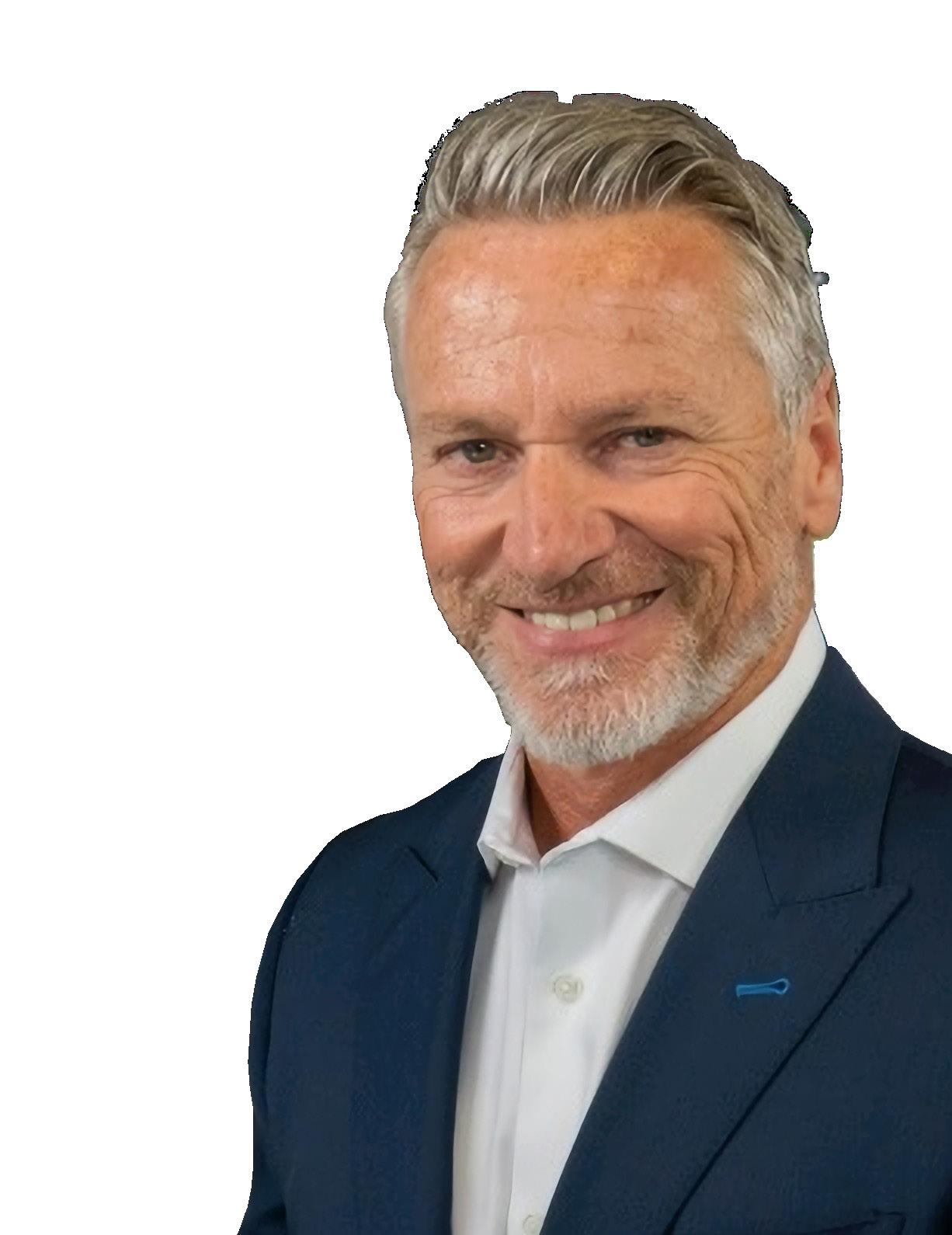
The Partstat environment and warehouse staff are equipped to handle and store semiconductors and electrical components appropriately. Our facility in Florida is airconditioned and it’s a humidity-controlled environment. Plus, we have a semiconductor vault designed for irreplaceable or obsolete components. It has a 1,000lb door, and is fireproof and hurricane proof.
» Semiconductors cannot be stored in ambient storage facilities. A high percentage of third-party
logistic companies have storage areas that aren’t air-conditioned or humidity controlled. The careful handling of semiconductors is a significant challenge for such companies. For them, it’s primarily about the footprint

» SInnovators and disruptors such as Steve Jobs and Elon Musk. We didn’t know we needed the iPhone until it was developed, and now it’s a necessity for many of us.
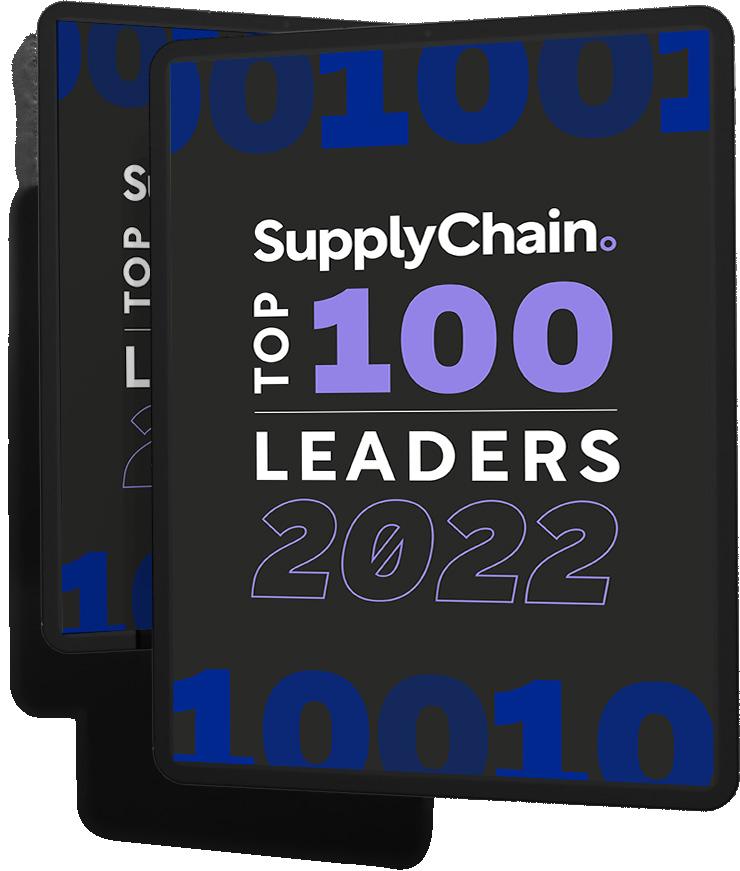

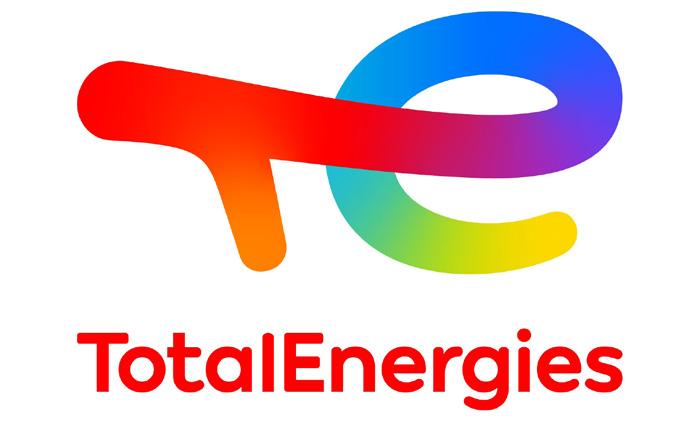
 WRITTEN BY: HELEN ADAMS
PRODUCED BY: CRAIG KILLINGBACK
WRITTEN BY: HELEN ADAMS
PRODUCED BY: CRAIG KILLINGBACK
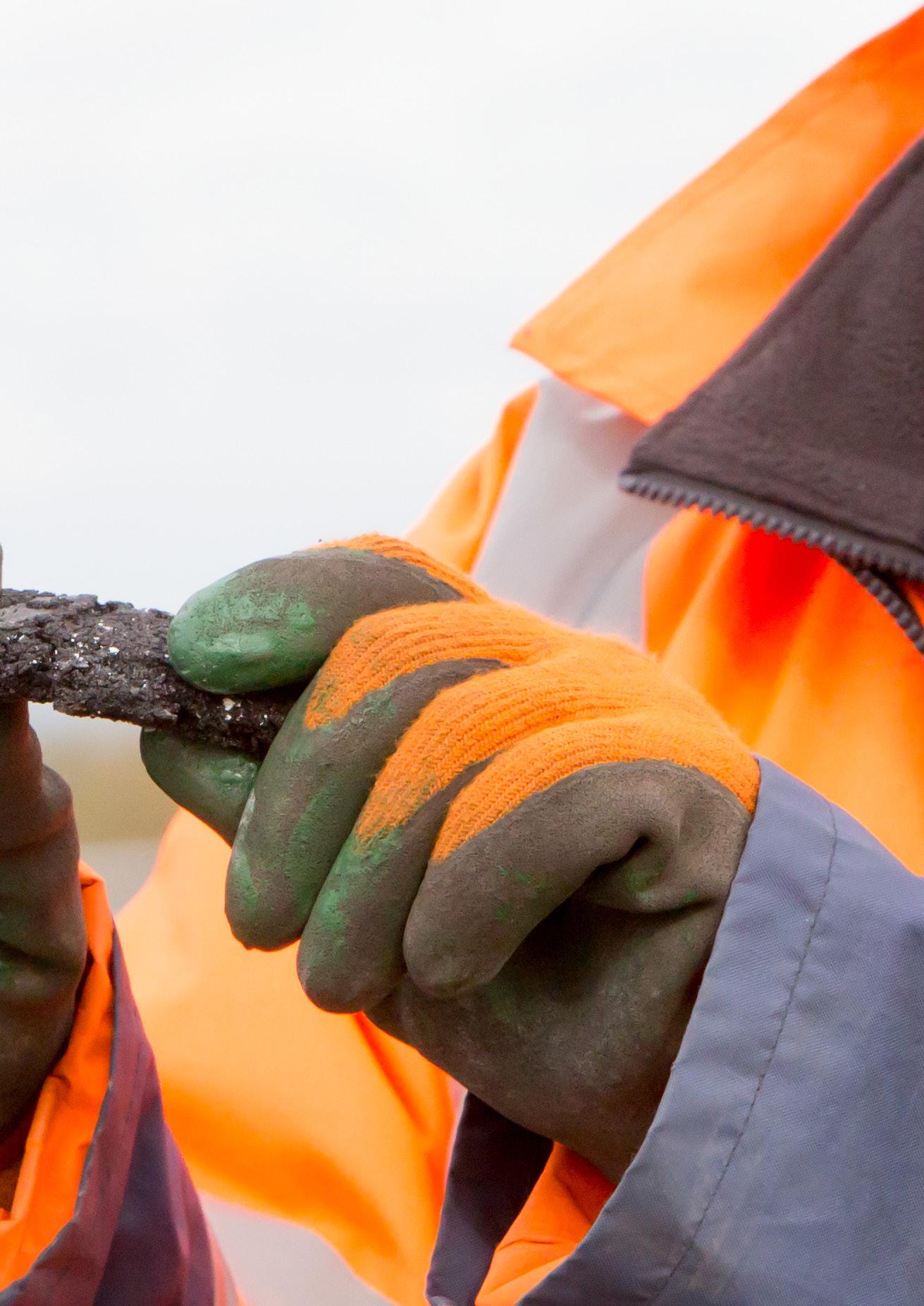


TotalEnergies is a multi-national energy company, founded in 1924 in France. Previously known as Total, in 2021 the Company rebranded as TotalEnergies –in line with its transformation into a broad energy company and a world-class player in the energy transition, including through its own carbon neutrality commitments. TotalEnergies has activities in more than 130 countries worldwide.
TotalEnergies is one of Europe’s largest producers of bitumen and its affiliate, TotalEnergies Marketing UK, has been a market leader in UK bitumen supply for decades, including through the supply of pioneering bitumen products manufactured in its Preston production site. Bitumen is the black viscous substance used to construct roads.

Garr Chau is the Supply Chain Manager for TotalEnergies Marketing UK, a role he landed through a graduate scheme.
“My role involves overseeing a team of planners and the supply of bitumen and additives to our supply locations, imported via ship, rail and road, in addition to road deliveries of bitumen products to our customers from those supply locations.”
TotalEnergies is transforming into a broad energy company and has committed to the Paris Agreement and the United Nations Sustainable Development Goals.
TotalEnergies’ Head of Bitumen Supply Chain Garr Chau , and Market Development Manager, Rick Ashton , talk sustainability solutions
“We have an ambition and that is to help with the world's energy transition, to reinvent the production and use of energy and to reach Net Zero by 2050 together with society,” says Chau.
TotalEnergies has set objectives to reduce its emissions.
The first step is to reduce Scope 1 and 2 CO2 emissions from TotalEnergies’ worldwide operations.
“We've set ourselves measurable short, medium, and long-term goals - so, by the year 2030, we've committed to reducing Scope 1 and 2 emissions at our own facilities by over 40% versus 2015 levels,” explains Chau.
In addition to decarbonisation, the company seeks to achieve this through improving efficiency across all operations, as well as achieving zero routine flaring at refineries, cutting methane emissions leaks in its gas operations and also by investing significantly in carbon capture and storage capacity as well as natural carbon sinks.
TotalEnergies has also set a 2030 target to reduce its global Scope 3 emissions - i.e. those from the energy products used by its customers - to below 2015 levels.
“The way we can influence this is to work with society - our customers, suppliers, partners and public authorities. We have
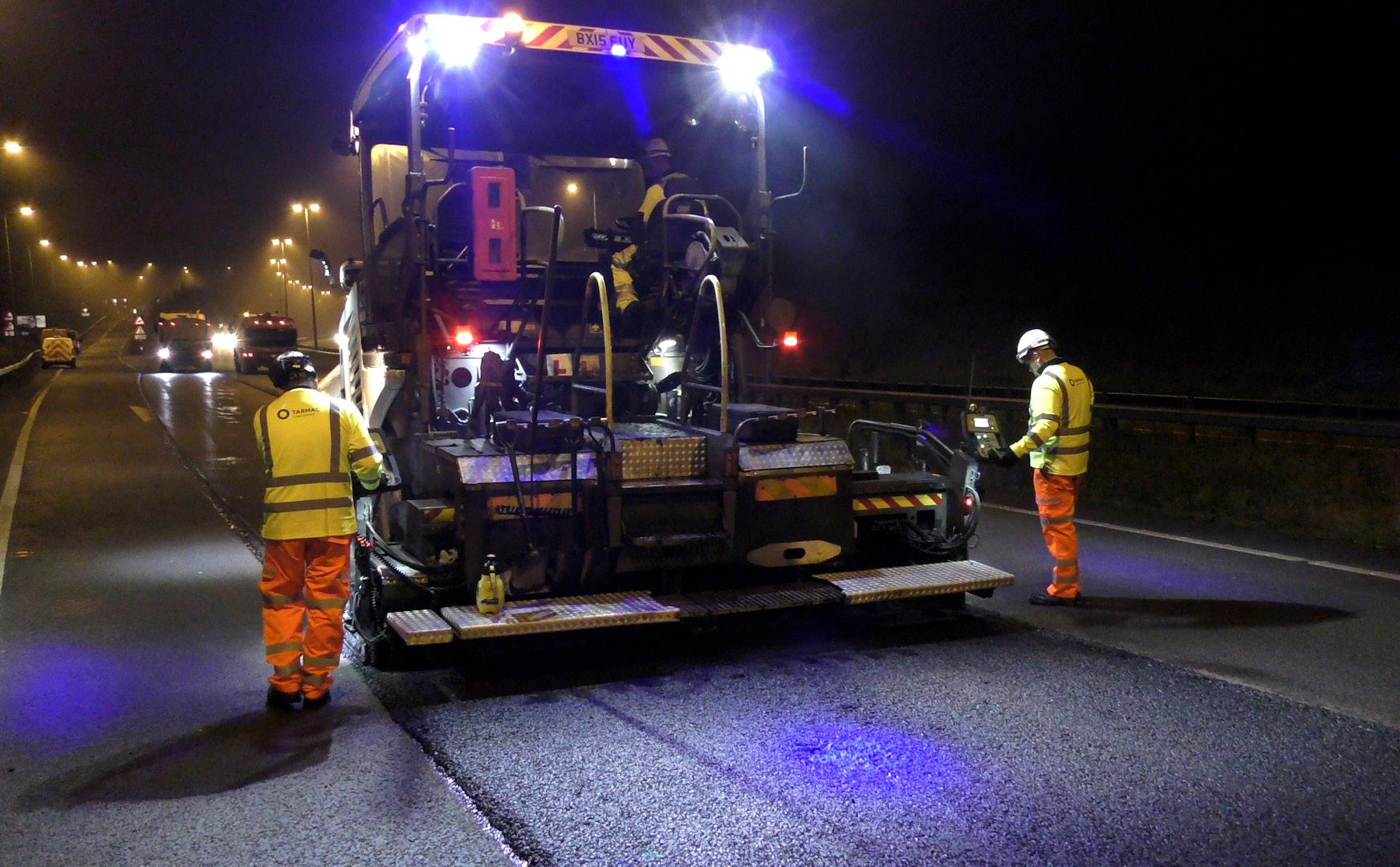
“ The impacts of climate change are irrefutable”
GARR CHAU HEAD OF SUPPLY CHAIN, TOTALENERGIES MARKETING UK LTD.
to transform the way that we all use energy so that we can be sustainable.”
“We are changing our energy mix as a company, hence why we are transforming from being an oil & gas company into an integrated and broad energy company. We are reducing the carbon intensity of petroleum products sold by more than 30%, whilst we also plan to produce and sell 30% more energy products, especially through growth in electricity and liquefied natural gas (LNG). LNG, in particular, is a very important fuel in the transition, as the lowest carbon fossil fuel,” says Chau.
The UK has recently witnessed extreme weather events, first with the heatwaves and then with resulting scenes of flash floodingexamples of how our climate is changing.
“The impacts of climate change are irrefutable,” says Chau. “The general public expects governments and large companies, like TotalEnergies, to act on this. In Europe, around 80% of greenhouse gas emissions come from energy production and consumption, so energy producers have a vital role to play.”
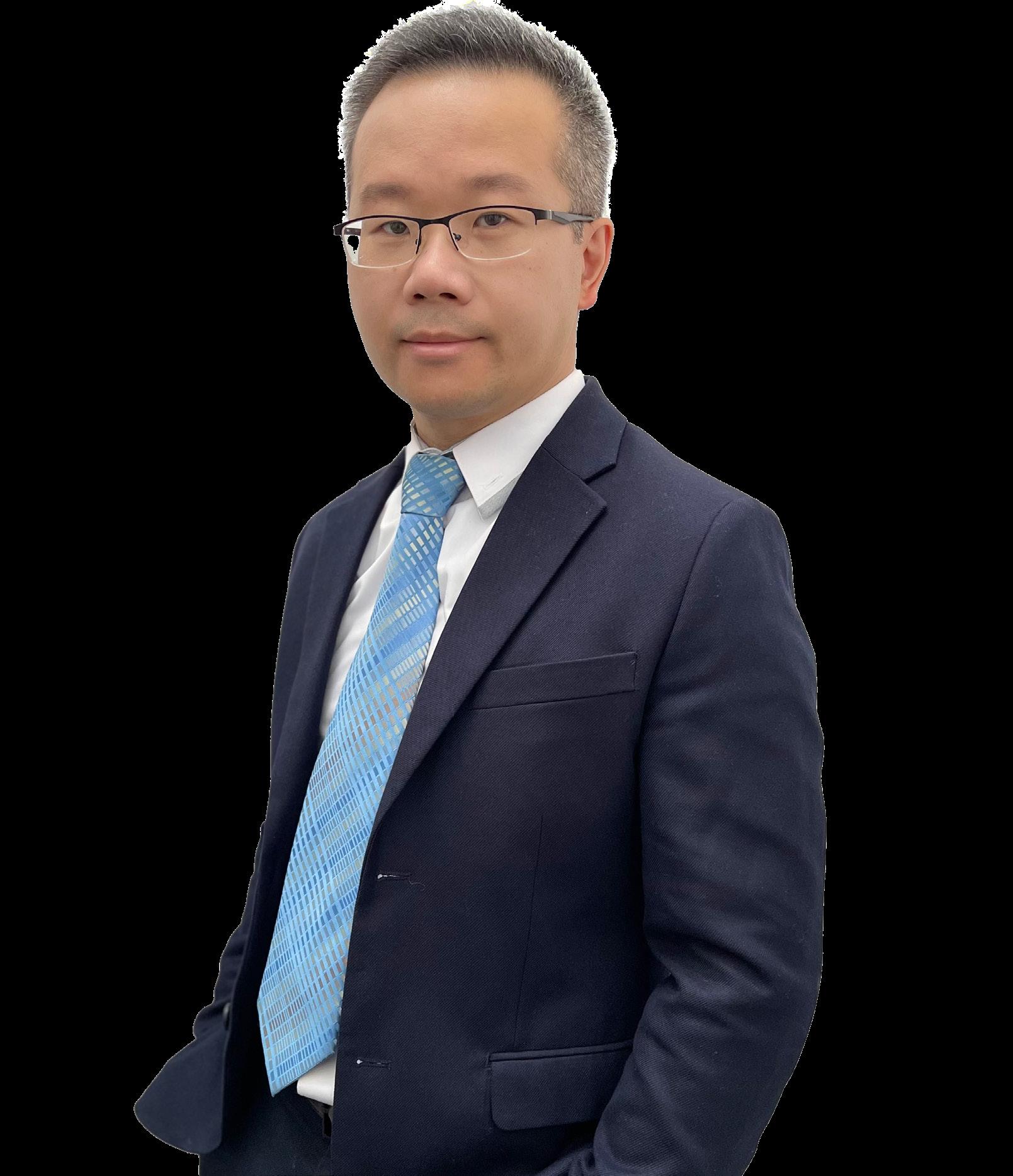
TITLE: HEAD OF SUPPLY CHAIN INDUSTRY: OIL & ENERGY LOCATION: PRESTON, UK
Garr Chau is currently the Head of the Bitumen Supply Chain for TotalEnergies Marketing UK Ltd, where he’s responsible for: primary supply via ship and rail import; stock management and quality control of the 3 terminal locations; and ensuring the safe and cost efficient distribution of finished products to TotalEnergies’ bitumen, PMB and emulsion customers.
Year founded 250+
Number of employees
During his 17-year career at TotalEnergies, Garr has (amongst other roles) served as: a Chemical Engineer at the Lindsey Oil Refinery, responsible for energy optimisation of the combined heat and power (CHP) unit, steam methane reformer (SMR) unit, fired heaters and boilers; Operations Manager of the long distance pipeline and aviation assets; JV Director of the HOSL terminal operation; responsible for safety and mitigating the environmental impact of the bitumen business.
Garr earned both a PhD and MEng in Process Engineering from University College London

Are you looking for an agile, flexible logistics partner with highest quality and safety standards? Do you appreciate expertise that moves you forward? The HOYER Group is one of the world’s leading logistics services providers in handling and transporting liquid products. We are the first point of contact for the chemicals, petroleum products, gas and foodstuffs industries. By road, rail and sea – with our extensive global network we will find the optimum solution for you. We maintain our leading market

position in the petroleum products sector through outstanding safety, environmental and customer service performance. Driving achievement in logistics is part of our DNA. With our sophisticated full-service logistics (from remote stock management to completion of the transport delivery) we make our customers’ business easier and more successful. Together we break new ground in a customised way
MORE
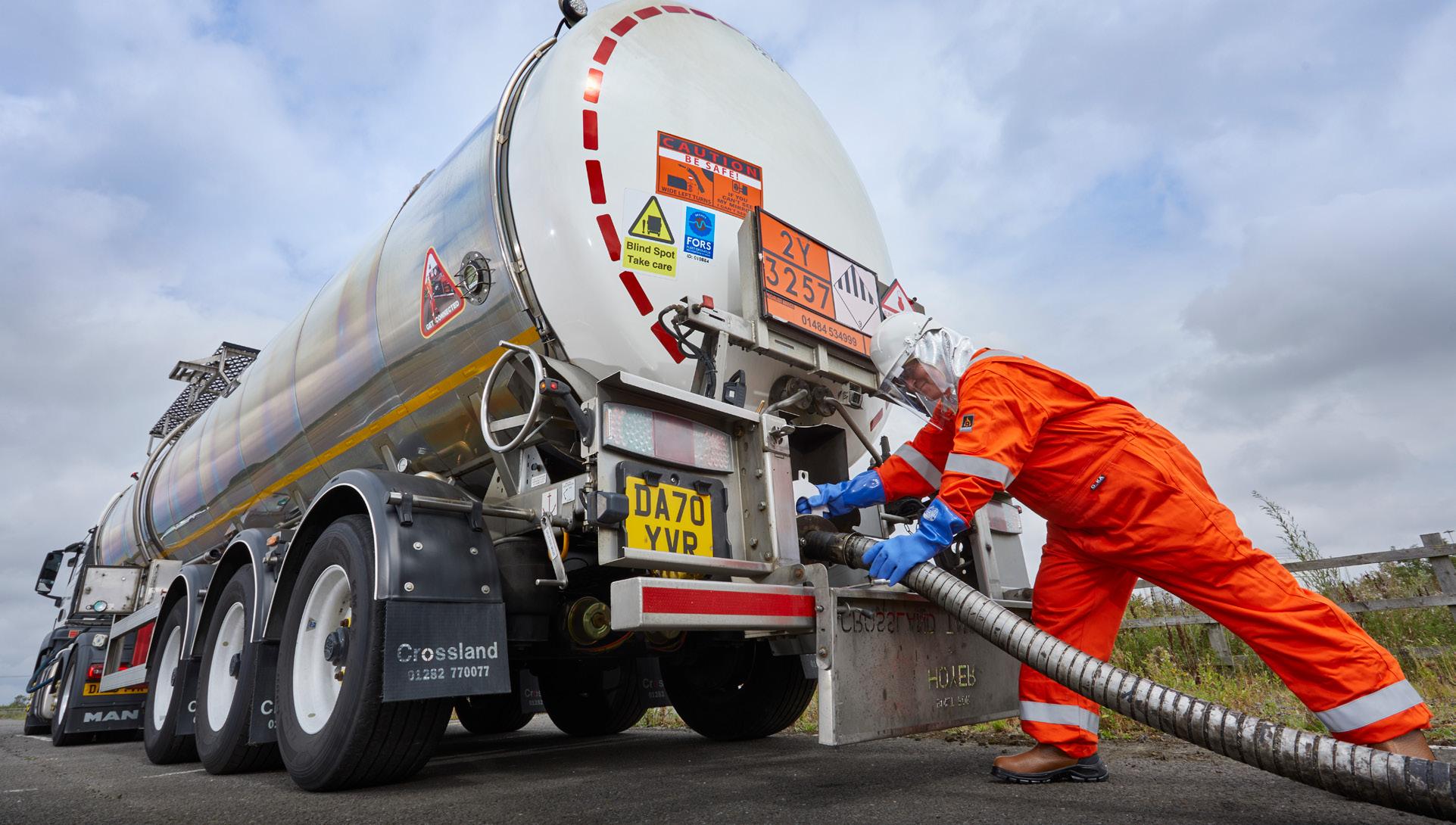
LOCATION: PRESTON, UK
I started in the sector in 1989 in an aggregates and asphalt testing laboratory with Hanson covering quarrying and asphalt operations. I studied construction materials technology with Bath College, then quarrying and asphalt technology with Doncaster College. I joined Aggregate Industries as a Technical Manager, managing on-site asphalt testing, laboratories, and various R&D projects before joining TotalEnergies as Market Development Manager in 2011. My role involves marketing communications, technical liaison, market development and representing TotalEnergies at international conferences and seminars. I’m a member of the Chartered Institute of Highways and Transportation, Institute of Quarrying, and a Branch Chairman of the Institute of Asphalt Technology. Also, the Asphalt Industry Alliance PR Committee liaising with ‘The All-Party Parliamentary Group for Better Roads’ and have assisted BSI working groups in the writing and publication of the current UK Asphalt standards.
Sustainable solutions for customers According to Rick Ashton , Market Development Manager at TotalEnergies Marketing UK, offering customers a range of sustainable solutions is essential in modern

One such solution is the increased adoption of low temperature bitumen that can be used in warm
“The focus at the moment is lowering the temperature of asphalt,” Ashton explains.
“Conventional asphalt is mixed at around 180°C and that takes a lot of energy. If we can lower the manufacturing temperature by chemically

modifying the liquid bitumen, we can reduce the energy demands by up to 30%.”
Representing TotalEnergies, Ashton is also working alongside industry bodies towards net-zero carbon goals and contributing to CO2 reduction in the UK.
“The All-Party Parliamentary Group for Better Roads put together a report for all the local authorities in the country on how to support this.

“The report claims if all asphalt production in Great Britain for 2017 had been switched to warm mix asphalt, it would have saved at least 61,000 tonnes of CO2 – the equivalent of cutting almost 300 million miles of car journeys. (Citation: Working for better roads Warm Mix Asphalt: reducing carbon emissions and improving efficiencies)
“When you mix the materials 30°C lower, it means products are cooler to install. This allows faster roadworks as the asphalt can cool to a point where it won’t be too soft to traffic causing deformation. You use less energy to heat the product, because a big part of the energy used in asphalt production
“ The focus at the moment is lowering the temperature of asphalt”
RICK ASHTON MARKET DEVELOPMENT MANAGER, TOTALENERGIES MARKETING UK LTD.
is to get the product to a workable state. Our low temperature ECO2 bitumen, for example, allows the same workability at 140°C - or 40°C cooler.”
Ashton says that this will support road workers, too. “It's a safer environment for them because they're not walking or driving through steam when there's live traffic going past just on the other side of the traffic cones.”
The TotalEnergies team conducted trials to measure the typical cooling times of asphalt. For a traditional hot mixture, a layer can typically be 100mm thick and it will take
TotalEnergies has committed to reducing its Scope 1 and 2 emissions by over


TotalEnergies is reducing the carbon intensity of petroleum products sold by more than
of greenhouse gas emissions come from energy production and consumption
two hours in normal ambient temperatures before traffic can run on the asphalt. Lowering the temperature by 40°C can halve this cooling time.
“Our customers may only have a five-hour slot where they can get in there and actually do the roadworks on a local urban road,” explains Ashton. “If they can add an hour's surfacing into that slot or get the road open an hour quicker, it's a 20% efficiency benefit.”
National Highways, who manage the motorway and trunk road networks, also estimate that an increase in shift outputs of 20% could be provided by using this technology on its network, saving up to £70mn a year. ( Citation – Report, The AllParty Parliamentary Group on Highways: Working for better roads Warm Mix Asphalt: reducing carbon emissions and improving efficiencies. )
“Society needs to focus on ways to reduce energy consumption and it’s the case with prolonged road works and wasted energy if using conventional hot mix asphalt. We know our low temperature energy saving ECO2 products stop this waste.”
Asphalt is the most recycled material globally and, like its hot mix equivalents, TotalEnergies ECO2 is also 100% recyclable back into asphalts in the future, giving further embodied CO2 reduction benefits, helping to prevent waste and conserving natural resources as less aggregate needs to be quarried.

Styrelf® is one of TotalEnergies’ premium products. The name comes from adding a cross-linked polymer into bitumen, called styrene.
“It’s historically been used in high profile sites like at the Monaco Grand Prix
Circuit and the Mersey Gateway Bridge. We perform a huge amount of research and development, both here in the UK and in Europe, and the last 30 years have seen continuous improvement for these products,” explains Ashton.
A new grade in development, Styrelf® Long Life, aims to delay the onset of roadworks. Historically, highways engineers have to predict how long a road will last before potholes begin to form and a road needs to be repaired.
“It’s oxidation that makes the surface more brittle, and eventually it cracks. As it cracks, water gets into the cracks, they get bigger - then you've got a pothole, which somebody needs to repair. To do that, you’re going to have to cause disruption.”
TotalEnergies is working with local authorities and those responsible for maintaining roads on this matter. To get things moving, Ashton is involved in a number of industry bodies such as being a branch Chairman of The Institute of Asphalt Technology (IAT).
“
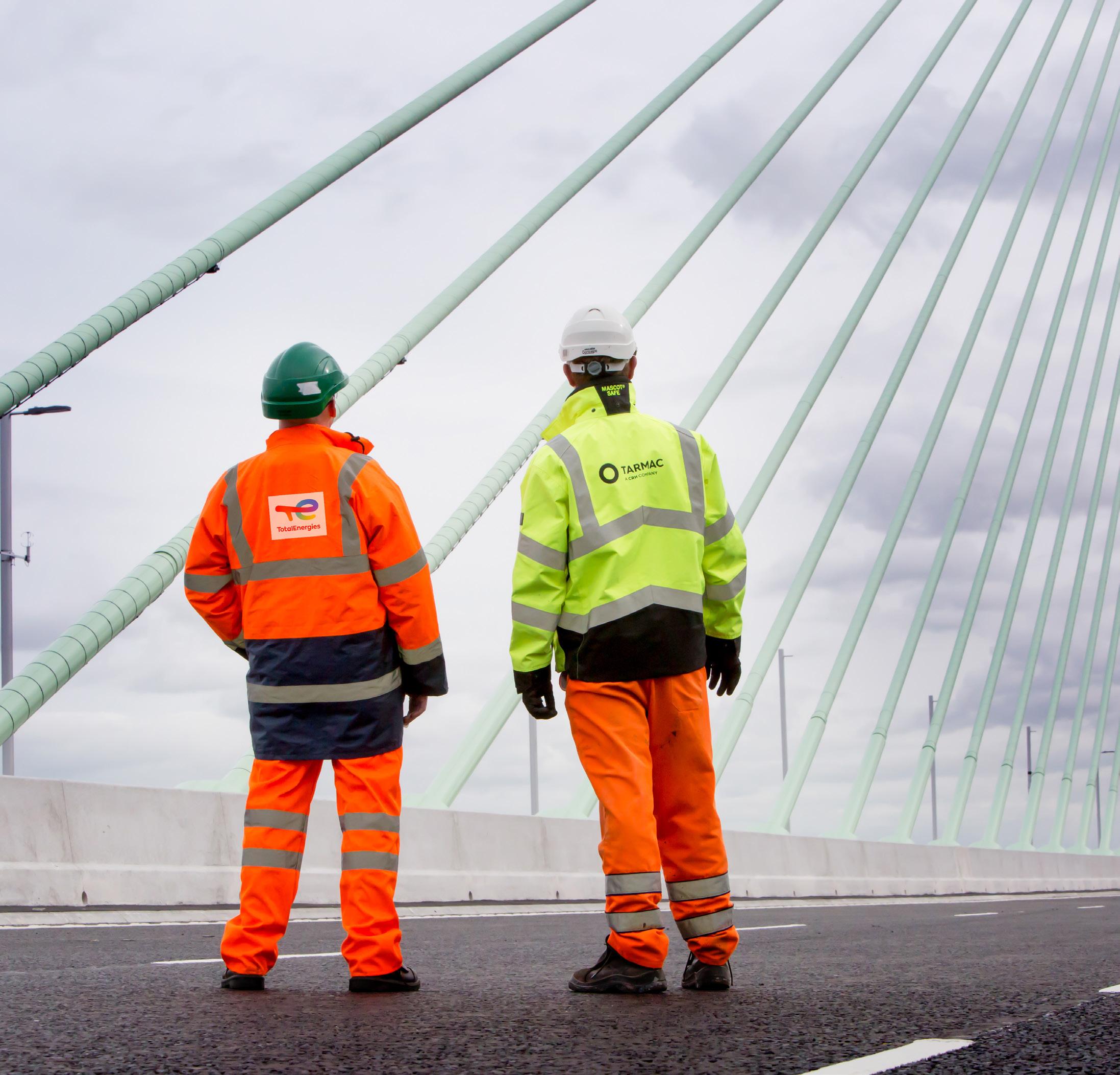
we can lower the manufacturing temperature by chemically modifying the liquid bitumen, we can reduce the energy demands by up to 30%”
RICK ASHTON MARKET DEVELOPMENT MANAGER, TOTALENERGIES MARKETING UK LTD.
Then there’s a group called the Asphalt Industry Alliance (AIA) whose purpose is to promote the benefits of asphalt. This is a joint venture between the Minerals Product Association and Eurobitume UK, the two principal bodies that represent the suppliers of the raw materials used to produce asphalt, as well as asphalt producers and laying contractors. This then feeds into central government via the All-Party Parliamentary Group for Better Roads.
TotalEnergies has a partnership with transportation and supply chain company Hoyer Gas & Petrol Logistics Limited, which provides services to the company in the form of planning, safe loading, road transport and delivery of bitumen products to its UK customers.
“TotalEnergies was Hoyer’s first client for bitumen transportation in the UK,” says Chau.

“I'm proud to say that a lot of expertise, experience and procedures have been developed in collaboration between TotalEnergies and Hoyer.”
Chau states that Hoyer understands the vital ingredients for a successful partnership.
“It's strong and good quality communication that can only come through trust and mutual respect. That communication needs to be strong on all levels of management and day-to-day operations. If that communication breaks down on any one level, then things can quickly go awry”.
The next 12 months will continue to be interesting for the supply of bitumen into the UK.
In the wake of the Russian invasion of Ukraine, the government announced that the UK would sanction crudes and petroleum
products of Russian origin from the end of this year.
“What that means for the bitumen world is quite significant because Russia has been important for bitumen in Europe. So this presents some challenges for the industry and supply chains need to evolve and adapt.”
TotalEnergies is moving with the times and transforming its bitumen supply chain across the UK. In the future, it is expected that more bitumen will need to be imported into the UK, potentially from further afield.
“We're extending our partnership with Navigator Terminals, a very large independent bulk liquids storage provider. We are expanding through a new position in Teesside in addition to an existing facility we have with them in London, for importation of bitumen by sea."
The combined storage of the positions will give TotalEnergies significantly more storage capacity.
In a testament to TotalEnergies’ longterm commitment to its bitumen customers, these assets will ensure TotalEnergies’ bitumen supply into the UK is truly national and resilient.

Today’s world is so riven with uncertainty that it has become part of the ‘new normal’ for businesses.
As such, organisations that want to thrive, not just survive, know how crucial it is that they are plumbed into supplier and partner ecosystems.

Speaking to Supply Chain Digital magazine in March 2022, Maria Rey-Marston – Global Supply Chain Innovation at Accenture – coined the term ‘Demand Response Network’. She said that, far from being linear, supply is now “a network of suppliers, plants, and transportation companies, as well as intelligent locations for placing products”.
Such networks are greater than the sum of the participating businesses. They enable organisations to collaborate with trading partners to streamline processes, create value in real time, and solve problems quickly, as they arise.
Helena Jochberger is Global Lead Manufacturing at CGI, the global IT and business consulting firm. She says that one area in which strong supplier ecosystems can help businesses is by offsetting the effects of inflation caused by supply disruption.
“With increasing uncertainty, the question of real-time scenario planning and multicriteria risk management becomes more relevant. This is the point where data-driven ecosystems can provide significant support.”
Supply ecosystems – networks of suppliers, plants and transportation companies, driven by data visibility – are the future for organisations who seek resilience









Supplier networks can help offset inflation, says CGI But she says that, in order to share data, those in the ecosystem need:
• Clear contractual frameworks with defined rights and duties.
• To have trust in sharing their data
• Data Standards in place.
“With the help of privacy enhancing technologies manufacturers can share data without disclosing intellectual property,” Jochberger says. “If organised in the right way, data driven supplier ecosystems can help mitigate inflation by assuring supply in manufacturers’ value chain.
Another area in which robust supplier networks and ecosystems pay dividends, says Jochberger, is in mitigating disruption.
Data ecosystems mitigate against disruption “Data ecosystems support real-time supply in the manufacturing value chain. If one supplier is unable to deliver a part, they will know because of predictive forecasting, and another supplier will take over,” says Jochberger.
Sustainability is another goal with which collaborative networks can help.

“Sustainability targets have become a business imperative, as financial institutions will no longer finance companies that are not adhering to ESG compliance,” she continues. “Data-driven supplier ecosystems create transparency on emissions and wastage along the value chain, and because of this manufacturers will be able to reduce both.”
Another supply chain professional in no doubt as to the importance of collaborative
“DATA ECOSYSTEMS SUPPORT REAL-TIME SUPPLY IN THE MANUFACTURING VALUE CHAIN”HELENA JOCHBERGER GLOBAL LEAD MANUFACTURING, CGI
supply ecosystems is Tony Harris, Senior VP and Head of Marketing & Solutions with SAP Business Network, which enables organisations to collaborate with supply chain trading partners, including suppliers, logistics and services providers, asset operators, and maintenance contractors.
Supplier ecosystems can reduce business costs
“We’ve seen the effect of recent disruptions on supply chains, exposing their fragility. Because a business network can provide visibility across the supply chain, companies can anticipate issues that may arise,” explains Harris. “This allows them to adapt and react quickly, avoiding unnecessary

costs due, for example, to shipment delays.” Harris echoes Jochberger’s point about business networks enhancing resilience through greater visibility. “Companies can reduce costs through their ability to identify and work with the most efficient and lowcost logistics supplier for order fulfilment. This enables businesses to reroute shipments through a logistics business network, ensuring deliveries are handled quickly to meet customer expectations.
“Such networks make a company visible to new suppliers, and this larger supply base can lead to new relationships, which helps drive down purchase prices – further enhancing profitability and bringing new customer channels to light.”
“SUPPLIER ECOSYSTEMS CREATE TRANSPARENCY ON EMISSIONS AND WASTAGE ALONG THE VALUE CHAIN”

Here, Helena Jochberger, Global Lead
Manufacturing at CGI, outlines ways technology underpins supplier ecosystems.
Empowered by the IoT and underlying networks (5G, IoT, WiFi), this is the first and most important aspect of becoming data-driven in the supply chain. Without the capture and provision of data and the downstream storage in the respective data lakes, transparency is not possible.
Once the data has been collected, cleared, and contextualised, the deep analytical work can begin: designing and training the right algorithms in place.
In recent years, large hyperscale platform suppliers have significantly democratised the way predictions can be made. This means that a lot of use cases are already available out of selfservice and enable manufacturers on their path to become data-driven.
Paper-based processes hinder the supplier system, dampening responsiveness.
Embracing automation processes creates frictionless ways of operating across the supply chain, helping ensure a company remains a partner that people enjoy doing business with.
In times of increased convergence between information and operational technology, it is of utmost importance to secure both the shopfloor and the supply value chains. If not secured properly, the damage caused by a security breach again can disrupt supply demands significantly. Manufacturers can develop cyber strategies that go beyond their boundaries and support safe interactions with the entire supply chain.Factory cloud
Factory clouds coming from the global hyperscaler platform providers helps assure continuity, resilience and scalability f or businesses.
Factory clouds coming from the global hyperscaler platform providers helps assure continuity, resilience and scalability for businesses.
Harris identifies other ways in which such networks can help:
• Boosting customer satisfaction – “One of the most important elements of running a successful business is having happy, referenceable customers,” he says. “When organisations collaborate in real time and work in parallel, the customer benefits. Customer service is enhanced because
the customer receives the value as the businesses in the network focus on their needs. This allows them to understand and satisfy customers' needs, solve fulfilment challenges in real time, and over-deliver on expectations.
• Choosing aligned suppliers – On this, Harris says: “A business network provides transparency that allows companies to

“EVERY TRANSACTION HAS TWO SIDES, WHICH IS WHY NETWORKS CAN QUICKLY EXPAND”
TONY HARRIS SENIOR VP AND HEAD OF MARKETING & SOLUTIONS, SAP BUSINESS NETWORK
choose suppliers who best align to the company’s values, processes, and their customers’ expectations. For example, from a logistical perspective, it may be more beneficial and less risky to work with a local raw material supplier. Also, selecting suppliers who prioritise sustainability can help businesses achieve their environmental, social, and governmental (ESG) goals.

• Increasing revenue – “Relying on a business network can help a company move beyond its local market to become part of a global network that continues to grow as more companies join,” he says. “Business networks are multipliers for buyers, sellers, shippers, carriers, and even asset utilisation and maintenance. “This helps companies expand into new global markets, find new customers, uncover new opportunities, and secure the suppliers needed to support these new business models. And with a global network of suppliers, businesses can be assured of supply during times of disruption, reducing stock-outs and revenue loss.”
• Increased connections – Harris states that “every transaction has two sides, whether this is the buyer and seller or shipper and carrier”. This, he explains, is why networks can quickly expand: “When a buyer uses a carrier, that carrier becomes known to the seller, which can then become a new source for both businesses. As these two businesses transact more with others, the carrier may work for even more of their connections. This network effect is an excellent means for companies to broaden their customer base and trading partnerships.”
• Predicting risks and identifying opportunitie s – “Which of us wouldn’t like to predict their own future to prepare for whatever comes our way?” he asks. He adds that, in the context of business continuity and resilience, this ability should be no pipe dream. “The ability to address risk across the supply chain is mission critical,” he points out.



BY: MIKE SADR &
BY: NEIL PERRY
 Scott Schwartz: Chief Procurement Officer & Head of Sustaining Engineering, Royal Philips
Scott Schwartz: Chief Procurement Officer & Head of Sustaining Engineering, Royal Philips
There can be few better opportunities to learn about your products and your customers than seeing them in action in the hospital or clinic. Scott Schwartz from Philips recently had that opportunity at a hospital appointment, where he saw the global health technology company’s ultrasound systems being used first hand. As Chief Procurement Officer and Head of Sustaining Engineering at Royal Philips, he knows all too well how important their products are to people all over the world.
“The beauty of what we do here is that we make products and solutions which have a direct connection to our family and friends. Our products help them and other people around the globe improve or save their lives. That’s really inspiring and has motivated me throughout my career in medtech,” says Scott, who has been recently appointed
as Chief Procurement Officer at Philips, in addition to his Sustaining Engineering Lead responsibility. “We help improve the workflows in hospitals, lower the cost of care and have a direct impact on society. That greatly contributes to my job satisfaction: it's all about helping people and improving their life and wellbeing. At some point of our life, we are exposed to our own products either ourselves or our family members, friends or colleagues are. That makes our task very real and puts a face to it.”
This purpose-driven motivation is what Scott also likes to drive into his own team. He was able to build a purpose-driven, high-performance team that understands the impact Philips’ products and solutions have on the end user. Driving strategic ideation into a strong rigour in execution is a valuable mantra for success.
“The key here is that, first, you have really talented, creative people that are always curious to dig deeper, to dig for more – and I think that's the culture that we are trying to create here, that rigour, that depth, that curiosity to find more,” he says. “That is the foundation of trying to find these improvement ideas.”

As Chief Procurement Officer and Head of Sustaining Engineering at Philips, Scott Schwartz highlights how an end-to-end approach to strategic ideation and drive into execution together with strategic partners helps Philips to fulfil its purpose: to improve people’s health and wellbeing through meaningful innovation, to lower the cost of care and improve the patient/customer experience.
Scott is very clear on the importance of talent in his own team, but for him, the team doesn’t end at the walls of Philips. He recognised in past company experiences how important it is to team up with strategic partners in the value chain to do things first time right and avoid higher costs in later product lifecycle stages. It is therefore important for Philips to share their purpose as well with their strategic suppliers and connect them to the outcomes desired for the customers and patients.
“I think it's really valuable to hear different users talk about your products,” he says. “A lot of times, what you believe they're going to say is not actually what they end up saying. For me, it was really insightful to talk to the technician because you are thinking they are going to talk a lot about the actual diagnostics, the clarity of the imagery and the quickness of the machine, which are things we are driving
at the company. But instead, a lot of times you end up hearing about the basic ergonomics and usability of the machine. It's important to see that there is more to the overall satisfaction of the customer than just the traditional features you are driving.”
Scott explains that having the customer’s point-of-view helps in ensuring that they are providing market-leading technology that makes a tangible difference to the lives of both patients as well as the healthcare professionals using the equipment.
“We're making these products to help people; real people and real faces are using our products. So that purpose, that responsibility, is constantly reinforced in the organisation and I'm trying to continually implement this outside-in view in the organisation. We want everybody thinking outside-in. What does this product do, and as I understand what it does, how do I improve that?”

Scott Schwartz
Scott Schwartz is currently the Chief Procurement Officer and Head of Sustaining Engineering. He is responsible for the execution of the E2E Procurement & Supplier Management strategies from New Product Development to Life Cycle Management to support key business strategies across all business groups of Royal Philips. The Procurement & Engineering team have a strong engagement in Advanced Development & New Product Development connecting the supplier ecosystem to drive innovation, productivity and quality. In addition, he is responsible for the sustaining engineering team for the Supply Chain & Operations group driving continuous improvement on the marketed products. The Procurement & Engineering team links the Commodity Strategies to the Business Strategies creating local impact and global leverage. Scott joined Philips in 2014 as the Head of Procurement Engineering for the Philips Healthcare businesses.
Prior to Philips, Scott worked for Boston Scientific for 18 years where he held leadership roles in Product Development, Process Development, General Management and Procurement. Prior to Boston Scientific, Scott started his career at 3M Company as a product/ process development engineer.
Scott has a BS in Mechanical Engineering from MIT, a MS in Mechanical Engineering (Statistics Minor) from University of Minnesota, and a MBA from the Carlson School at the University of Minnesota.

We understand medical customers. Since 1999, Kimball Electronics has served the medical market, manufacturing millions of medical devices, medical electronic assemblies, and complex full medical devices. By leveraging our focused medical core competencies, decades of experience, and customer-aligned global footprint, we’re ‘Creating Quality for Life’.
Learn more about how Kimball Electronics is ‘Creating Quality for Life’ for our medical industry customers. Learn more


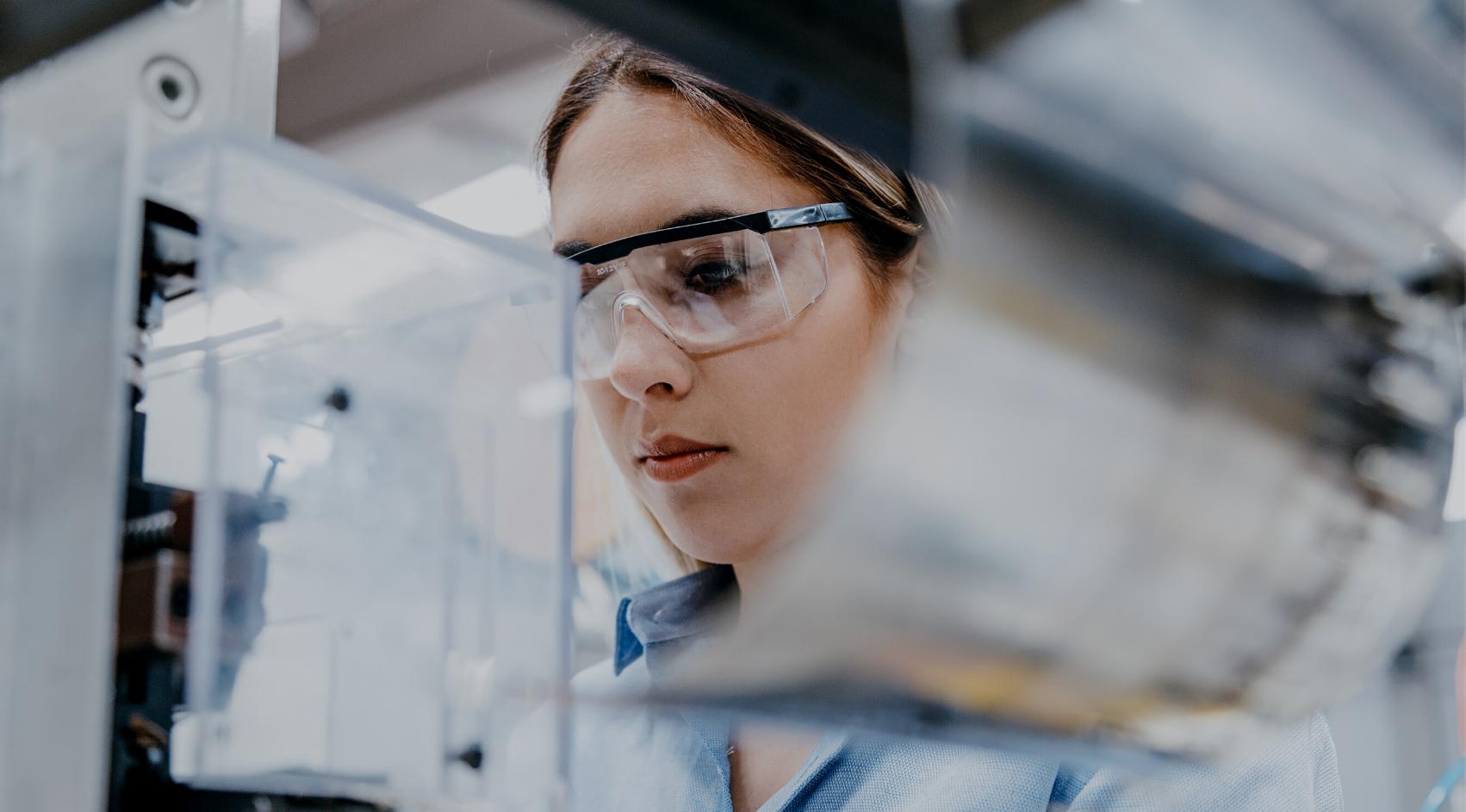

Kimball Electronics used the pandemic to bring its global facilities closer together to build life-saving equipment around the world for the new normal.
The electronics manufacturing company, Kimball Electronics, is expanding, despite the global supply chain crisis, and the new normal. Steve Korn, the President of Global EMS Operations, is ready.
“I’m responsible for all the manufacturing of those facilities, as well as our global supply chain and an IT team, as well as a finance team that supports those operations.”

There are a lot of people reporting to Korn and he knows each of them is a vital employee. “Our people are critical to us and that’s what separates us from our competitors,” says Korn. “We spend time making sure that we have the best work environment we can have.”
Kimball Electronics manufactures electronics for products across several markets, including automotive, industrial, medical, and public safety.


“It’s really exciting working across those different industries,” says Korn. “The number one thing for us is in each one of those industries, we manufacture very reliable products. If you’re going to a
hospital and you have an AED device or a monitoring device or a ventilator, the last thing you would want is for it not to work.”
As Kimball Electronics manufactures for the medical and public safety markets, the company has adapted over the pandemic.
“I think a couple things changed us, such as supporting our medical customers,” says Korn. “We did a lot of work for Phillips in building ventilators and building BIPAP equipment, it really helped us focus more into the medical space and public safety.”
Over the pandemic, Korn has had the time to develop professional skills. “I have continued to improve my communication skills — for how to develop communicating virtually and in writing.” Virtually or officebased, Kimball Electronics is ready for the new normal.
The sector comes with a degree of public responsibility, and, as someone who has worked in medtech for the vast majority of their career, Scott says it is something with which you foster a deep connection.
“I wouldn't go anywhere else or to any other sector because the beauty of what we do here is that we make products and solutions which have a direct connection to our family and friends.” Scott’s route to Philips has taken him across different business roles since completing a mechanical engineering degree at MIT. The first career step was to 3M Company
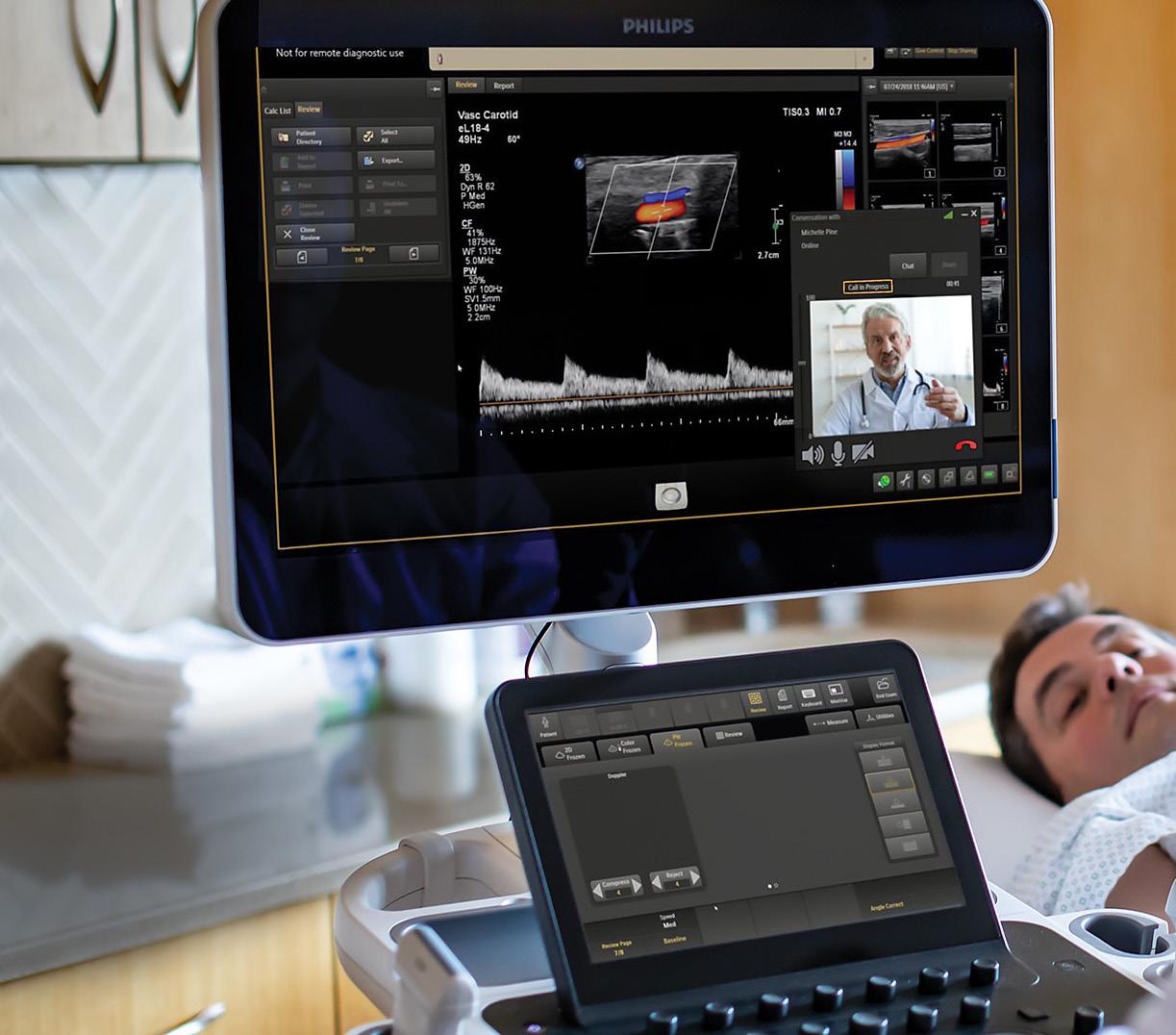
“We want everybody thinking outside-in. What does this product do, and, as I understand what it does, how do I improve that?”
after graduating. He completed a Master’s degree in mechanical engineering and an MBA at the University of Minnesota. Scott says that his goal was always to be a leader of technical people, so he needed to be sure his technical capability was strong to have credibility in an engineering environment, but also having the MBA to bring a broader business view to the table. He then spent eighteen years at Boston Scientific working across product development and supplier engineering, providing him a wide scope of experience to manage products from endto-end during their development.
Scott believes the structure at Philips
Procurement and Sustaining Engineering is one of their key strengths, as it allows them to have more of an end-to-end overview of products, from inception to delivery. As well as the traditional procurement responsibilities that fall under his responsibility, there is also an engineering arm connected directly to procurement, which allows them to drive the overall strategy through partnerships with their supplier base.
“It’s a unique combination compared to most other procurement organisations that you would typically see,” he says. “We are also heavily involved in new product



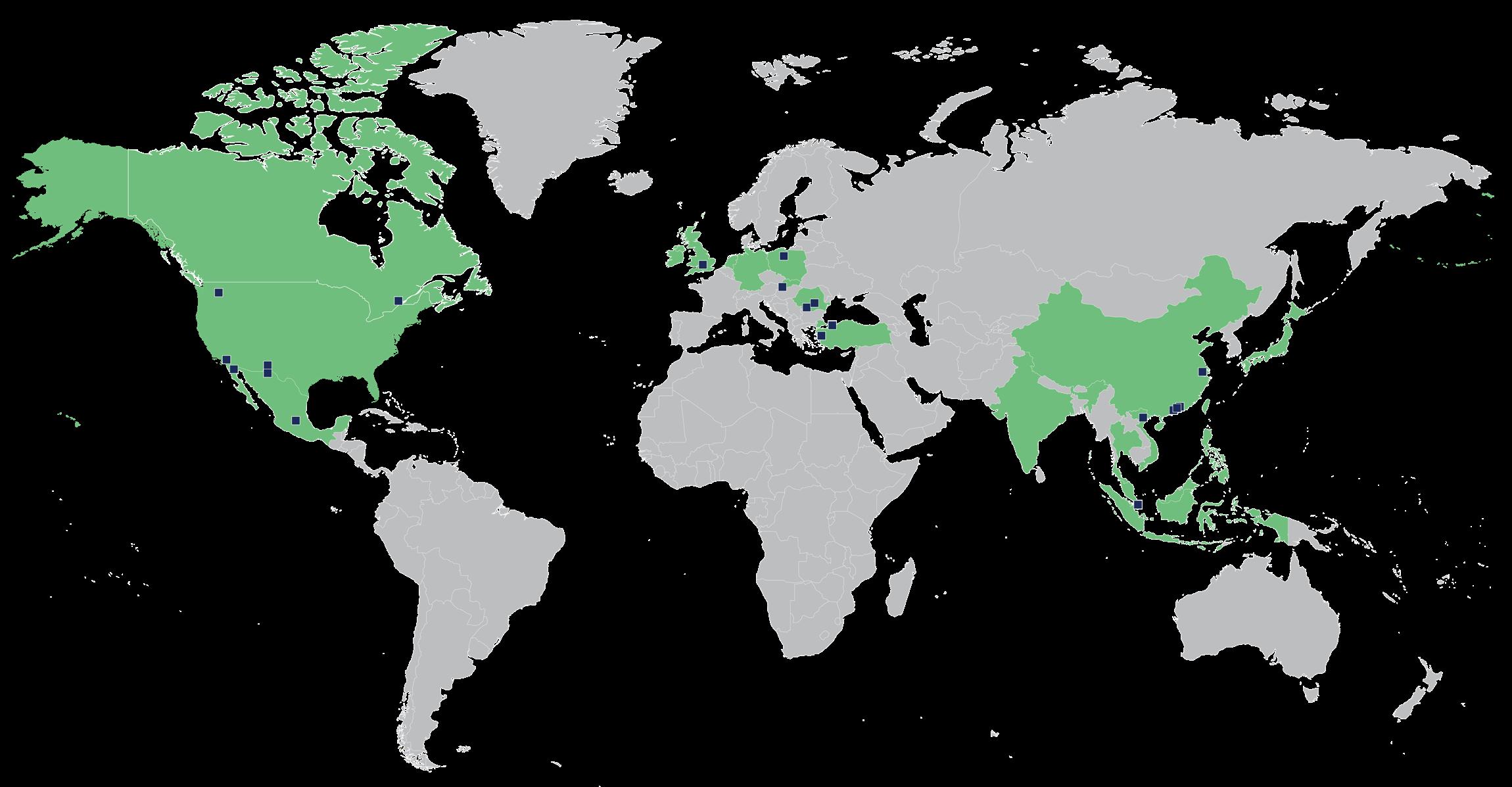






















Made up of 8,000 people, in 19 factories, across three continents, “Volex’s global footprint is unparalleled in our industry,” says Paul Bullock, COO Europe, Volex.

Since 2004, Volex has been supplying Philips with its services. “We started providing cables for their defibrillator products,” says Bullock. “Over the last 18 years, that relationship has grown to be a global strategic partnership, underpinned by three pillars: exceptional quality, global footprint, and scale.”
“We have seven factories right now that are approved to the ISO 13485 medical standard, and recently, with Philips’ promotion and support, our Tijuana, Mexico factory was able to achieve MedAccred accreditation, becoming the first cable and wire harness accredited supplier in the whole of Mexico, which was a fantastic achievement,” says Bullock.
Committed to reducing lead times, increasing their market reach, and getting closer to the end customer, local supply and regionalisation of supply chains is becoming increasingly important for Philips.
“Soon we will be supplying Philips from eight locations, with the addition of India.
Volex will be investing in a new factory in the Pune region, close to Philips, supporting the company’s localisation efforts for their supply chain and facilitating their growth plans for the region,” says Bullock.
The scale of Volex affords its customers like Philips to have the confidence that they are working with a global supplier with a worldwide partner ecosystem and global experience. “Volex currently supplies Philips with over 2,200 part numbers, that contain 6,000 raw materials into 20 different Philips locations, which is a huge portfolio of parts with a huge amount of complexity,” says Bullock.
“We manage that expansive portfolio by engaging closely with Philips at a local, regional, and global level through our factory teams, and the executive team, to give Philips the confidence in the quality delivery and service that they’re getting at multiple touch points.” adds Bullock.
“As Philips continues to develop its lifesaving products, Volex will be there as a trusted global integrated manufacturing partner,” concluded Bullock.
development – which I think is common with other procurement organisations – but we are doing it at an even more technical level, partnering with the R&D organisation and getting involved very early in that new product innovation cycle.”

This set up allows Philips to accelerate the strategic execution and drive strategic initiatives from the Procurement perspective, whether that is supply base mobilisation, innovation, cost down and quality up activities. Projects focused on quality, productivity, resilience, or innovation can be driven with great speed in partnership with the supply base. This makes supplier performance management truly end to
SCOTT SCHWARTZ CHIEF PROCUREMENT OFFICER & HEAD OF SUSTAINING ENGINEERING, ROYAL PHILIPSend. It is much faster and more efficient to have the needed resources in one team. By having the internal team joining forces with strategic suppliers, Scott aims to foster a culture of collaborative disruption to drive into fast, customer-oriented outcomes.
Scott has been at Philips through a time of transformation, as it pivoted further into a health technology company, which now is one of the world’s largest health technology companies. It has been a long journey for a company that started in 1891 with its namesake, Frederik Philips and his son Gerard, producing electrical lighting products in an Eindhoven factory before diversifying into home appliances.
“It is key to have these smaller sets of suppliers that are more strategic as we interact with them”







At USI, we deliver global projects within local supports. We bring up the possibility of miniaturiza�on and provide diverse solu�ons from wireless communica�on to medical devices. Most importantly, we share the same values with you.



“When I first arrived at Philips, it was basically a conglomerate with a healthcare technology business, the heritage lighting business, personal health and a domestic appliances business. Over those eight years, we've actually transformed pretty impressively in such a short time into a truly health technology company – so, spinning off our lighting business, divesting our domestic appliance business and then creating one of the largest health technology companies in the world.”
“The industry needs to transform from working on hardware alone to driving cost reductions, simplicity in workflow, and improved outcomes for patients. To achieve those ambitious goals, you have to bundle technologies, bring hardware and software together to create solutions that truly solve problems. This requires the procurement organisation to transform as well. It is not about hardware alone anymore. It is about bringing in suppliers that help with the innovation on those solutions which is easier to say but not so easy to be done. Driving innovation on hardware is a little bit more concrete than driving ideation on a solution
that is not easy to conceptualise and requires a lot of pieces to be put together, and that is the challenge we face: how do you bundle solutions that truly improve outcomes, reduce costs and improve the workflow in clinics and hospitals?”
A vital part of that transformation has been the relationship Philips has with their partners and suppliers, which Scott and his colleagues are leveraging to deliver more solutions that improve outcomes, reduce costs, and optimise workflows in clinics and hospitals.
 SCOTT SCHWARTZ CHIEF PROCUREMENT OFFICER & HEAD OF SUSTAINING ENGINEERING, ROYAL PHILIPS
SCOTT SCHWARTZ CHIEF PROCUREMENT OFFICER & HEAD OF SUSTAINING ENGINEERING, ROYAL PHILIPS
“Having a strong partnership with our suppliers is crucial, allowing us to connect the suppliers to our problems, thus connecting the supplier innovation capabilities to our problems, to actually leverage a much broader ecosystem to identify these step-up improvements.”
“The culture that we are trying to create here is that rigour, that depth, that curiosity to find more”
By using an early engagement approach with their suppliers, Scott believes it gives them the best possible chance of delivering solutions and step-up improvements to their products, and, with his role having a larger overview of development, it can bring the best out of those partnerships.
“Everybody thinks that every procurement leader says, ‘We are going to leverage the supplier ecosystem and bring the suppliers closer to our activity’. It’s easy to talk about the concept, but it's very hard to do in practice. We have done some of the structural things, like consolidating our supply base to strategic suppliers that have strategies and visions lined up with Philips’
strategy and vision. I think that it is key to have these smaller sets of suppliers that are more strategic as we interact with them.”
It is this culture of trusted collaborations embedded in these partnerships that allows a stronger bond between the two for the benefit of both parties, and, ultimately, for the customers and patients who use the technology. Scott is confident that the company’s top strategic partners feel listened to and empowered to play an active role in the process of product development.
“That's the key – that it’s a two-way street,” he says. “They are partners and so we have confidence in them, but it's also our responsibility to treat them like strategic

“What is really inspiring about this whole industry is that we are helping people”
partners and give them benefits for being our strategic partners. Whether that is access to our new product development opportunities or focusing on other creative innovations that we are working on, we want them to feel part of Philips.”
Scott also says that they strive to make sure there is a flow of communication and innovation coming from their suppliers for productivity, quality, performance, and resilience. That is the benefit of connecting a strong procurement organisation with a sustaining engineering capability to drive execution.
All those ideas permeate through product development cycle to the consulting
rooms, clinics and wards of hospitals and clinics around the world. It was following his appointment that Scott got to witness the benefits of that approach first hand and see staff interacting with their innovations.
‘It was just very insightful to talk to the technician and ask him about Philips and our products – that is what it's all about. Not only the connectivity to the personal experience you have with our products, but also seeing that our products are perceived as delivering on their high-quality premise. And that's satisfying as well.”

In a world of increasing risk and uncertainty, the expertise of 3PLs is increasingly important to organisations, as is their transformation savvy
In the past few years, businesses have been rocked by unforeseen supply chain disruptions, across industries ranging from pharmaceuticals and consumer goods to electronics and automotive. The global pandemic has cost the world economy an estimated $11 trillion, and in 2021, a giant container ship ran aground in the Suez Canal, blocking the world’s busiest trade corridor for six days and disrupting
$40bn of trade. And now, of course, we have war in Ukraine, along with the disruption to trade and spiralling fuel inflation that has caused.
Supply chains often have to navigate chaos, confusion and disruption on a global scale, and the ways they are seeking to do so include new and innovative approaches. One is using third- and fourth-party logistics providers to help them.
Third-party logistics (3PL) companies provide services and expertise across the supply chain as a whole, including monitoring, communications and customs formalities; fourth-party logistics (4PL) companies offer digital integration solutions over and above the resources offered by 3PLs.

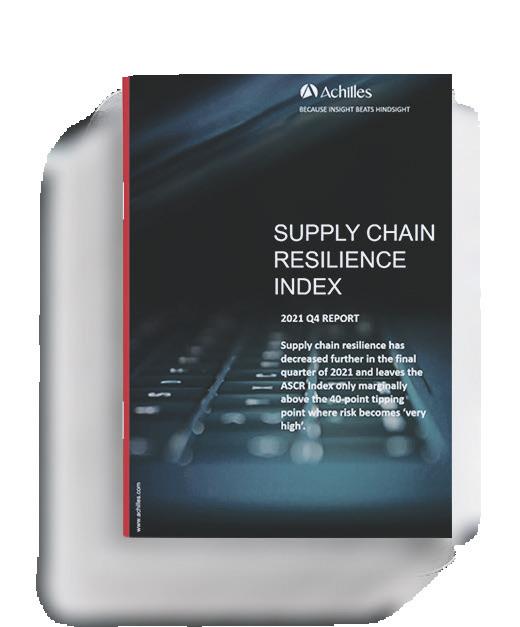 Because
Because
One person who thinks such companies have a major role in helping businesses navigate disruption and uncertainty is Ashley Naughton, who is Group Director of Logistics with McLaren Automotive.
3PLs ‘have crucial role to play in future supply chains’
We spoke with Naughton at Procurement & Supply Chain LIVE earlier in the year, when he was UK Director of Supply Chain Transformation with Capgemini,
a role in which he helped some of the most prestigious brands in the UK on their transformation journey towards a sustainable supply chain.
At the time, Naughton said: “I think thirdand fourth-party logistics providers have a critical role to play, because they are often able to see disruptions early, particularly with regards to logistics routes.
“A lot of disruption that we've seen over the past couple of years has come through logistics issues. The Suez canal issue, for example, is a classic example of where transportation was severely affected. 3PLs and 4PLs are often best placed to analyse how such disruptive events might impact a company’s ability to deliver product and goods on time. In turn, this enables an organisation to assess how that impacts their own customers.
“LOGISTICS COMPANIES ARE AN IMPORTANT RESOURCE BECAUSE THEY’RE UNDERGOING THEIR OWN DIGITAL TRANSFORMATIONS”ASHLEY NAUGHTON GROUP DIRECTOR, LOGISTICS, MCLAREN AUTOMOTIVE
“So availability and access to logisticsroutes data is really an area where I see they can add a lot of value.”
Of course, for the outsourced logistics providers, having been forewarned also means being forearmed – with the technology that makes supply chain visibility possible. This is expertise that Naughton believes businesses would do well to tap into.
“Logistics organisations are of course a key part of the value chain,” he says now, “and, as such, I think organisations need to work more carefully on collaboration.”
Naughton adds: “Many logistics companies are an important resource because they are undergoing their own digital transformations, and businesses need to work with them to understand how their digital transformations can add value to their own organisation. Only through collaboration will we see such benefits coming through.
“But not only do organisations need to collaborate with logistics companies, the logistics companies also need to collaborate with one another.”
3PL collaboration ‘more important going forward’
Collaboration among logistics providers is an emerging area but it is one Naughton feels will become more prominent going forward, particularly regarding sharing capacity.
“A good example is the delivery of goods and services,” he says. “Traditionally, logistics will measure delivery ‘fill’ and yet it doesn't necessarily always measure and monitor its return fill. This is why, often, returning vehicles don’t contain any products. This is called empty running and
The 2022 global third-party logistics market is estimated to be worth over US$1tn and is projected to be worth $2,144tn by 2032, according to market research.
The report – The State of the ThirdParty Industry Report – says the rise of globalisation has contributed to the establishment of a global network of manufacturing activity, and that the demand for 3PL services is projected to rise in order to keep it running smoothly.
The 3PL market is expected to be driven by an increase in demand for shipping cost reduction and a focus on timely delivery management, as well as a reduction in company assets, the ability to focus on core business, and an advantage in managing seasonal variations. The report also said that manufacturers' lack of control over logistic services and delivery processes may have a negative impact on the sector “in the near future”.
it’s a big sustainability issue for the logistics industry.”
He adds: “So there is definitely an opportunity for logistics companies to consider sharing capacity to make the entire network more efficient.
“With the drive towards sustainability becoming more and more important, reducing the amount of inefficient transport moving around is definitely something logistics providers will seek to tackle.”
But for every logistics provider who has succeeded in digitally transforming its operations, there is another one that either hasn’t begun the process or has stalled. McKinsey research suggests that as many as 30% of all digital transformation programmes either fail or do not have the desired results. Putting people first is one of the keys to a successful transformation, “CHANGE IS A PEOPLE SPORT; PEOPLE CHANGE
according to Ben Godfrey, Raw Materials and Forming Procurement VP with Rolls Royce, who heads up the company’s civil procurement of raw material, castings and forgings.
People are the heart of supply chain transformation Speaking on the same panel as Naughton at Procurement & Supply Chain LIVE, Godfrey said: “I think change is a people sport; it's only ever people that change things, while capital and technology provide huge leverage.”
Godfrey feels that technology is now allowing logistics providers and others across the supply chain to “leverage ideas on a scale you've never been able to do before”.
He says: “You can reach anybody in the world effectively. The challenge is connecting those dots in an effective and efficient way for your enterprise.
WHILE
AND TECHNOLOGY
THE LEVERAGE”
“You've got a huge competing infrastructure on digitalisation, and as a manufacturer, it's quite challenging to pick the digital and technology providers that are going to be here for the long haul. Then you’re left wondering what the future standard is going to be, because there are a huge number of competing infrastructures, and not all of them are going to be successful. I can understand why there is nervousness.”
Although Naughton agrees people have to be at the heart of any transformation, he points out that skill and expertise are barriers to change.
“It’s something that firms really need to be focused on. This is especially true right now because of labour constraints in the supply chain network due to the Great Resignation.”
Another obstacle to the digital transformation of supply chains is developing a business case for it, Naughton notes. “Lots of businesses still tend to focus on the top- and bottom-line, which is understandable because that's how we're all measured. But, if organisations are to start moving things forward, they will have to migrate towards more of a valuedriven proposition.
Naughton says this is particularly true of those with limited investment capabilities, and also points out that different sectors face slightly different challenges, and that decisions need to be made between investment from both a financial perspective and a resource perspective, because “that will be needed to decide what you actually want to focus on within your supply chain.”
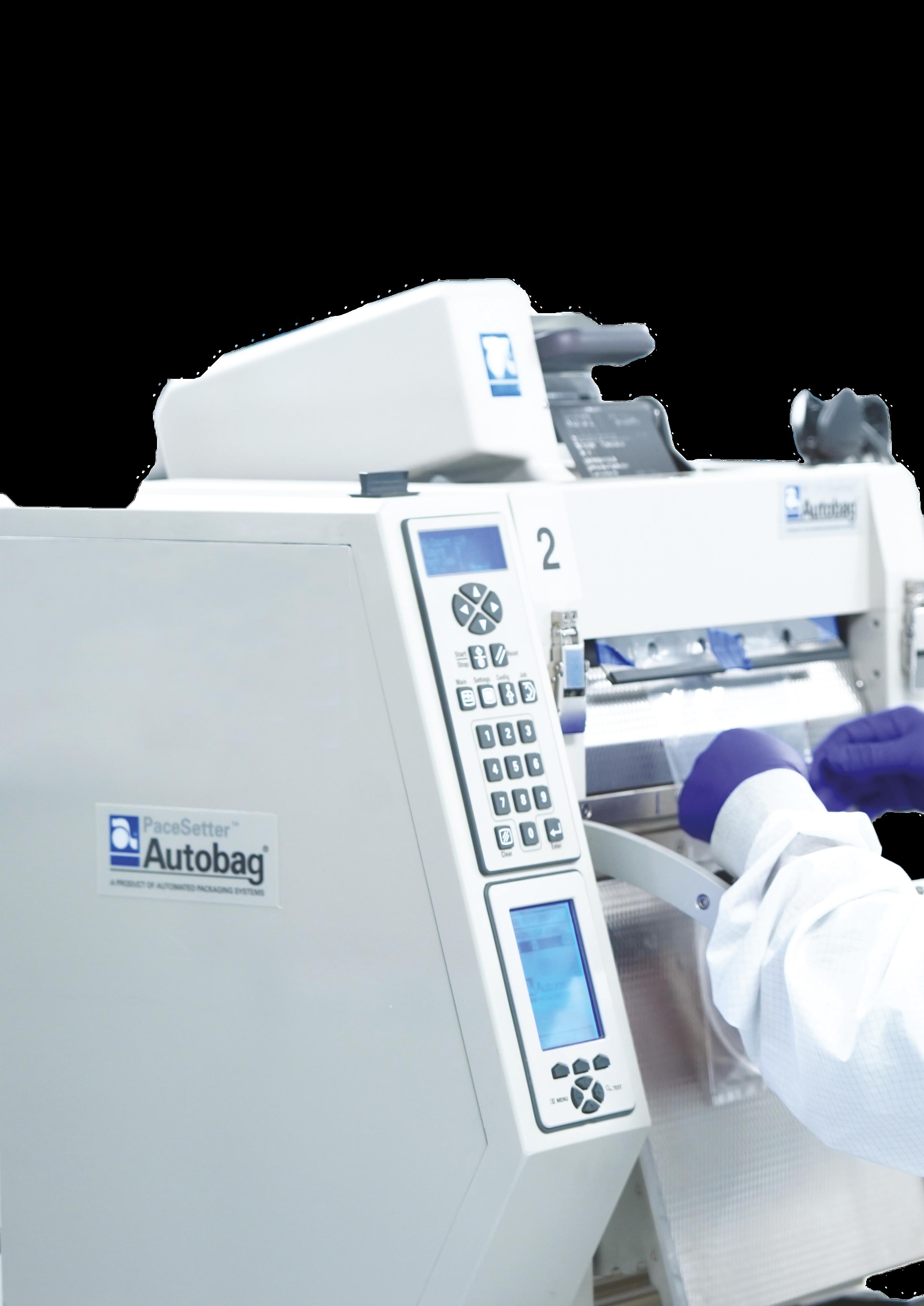 PRODUCED BY: MIKE SADR
PRODUCED BY: MIKE SADR

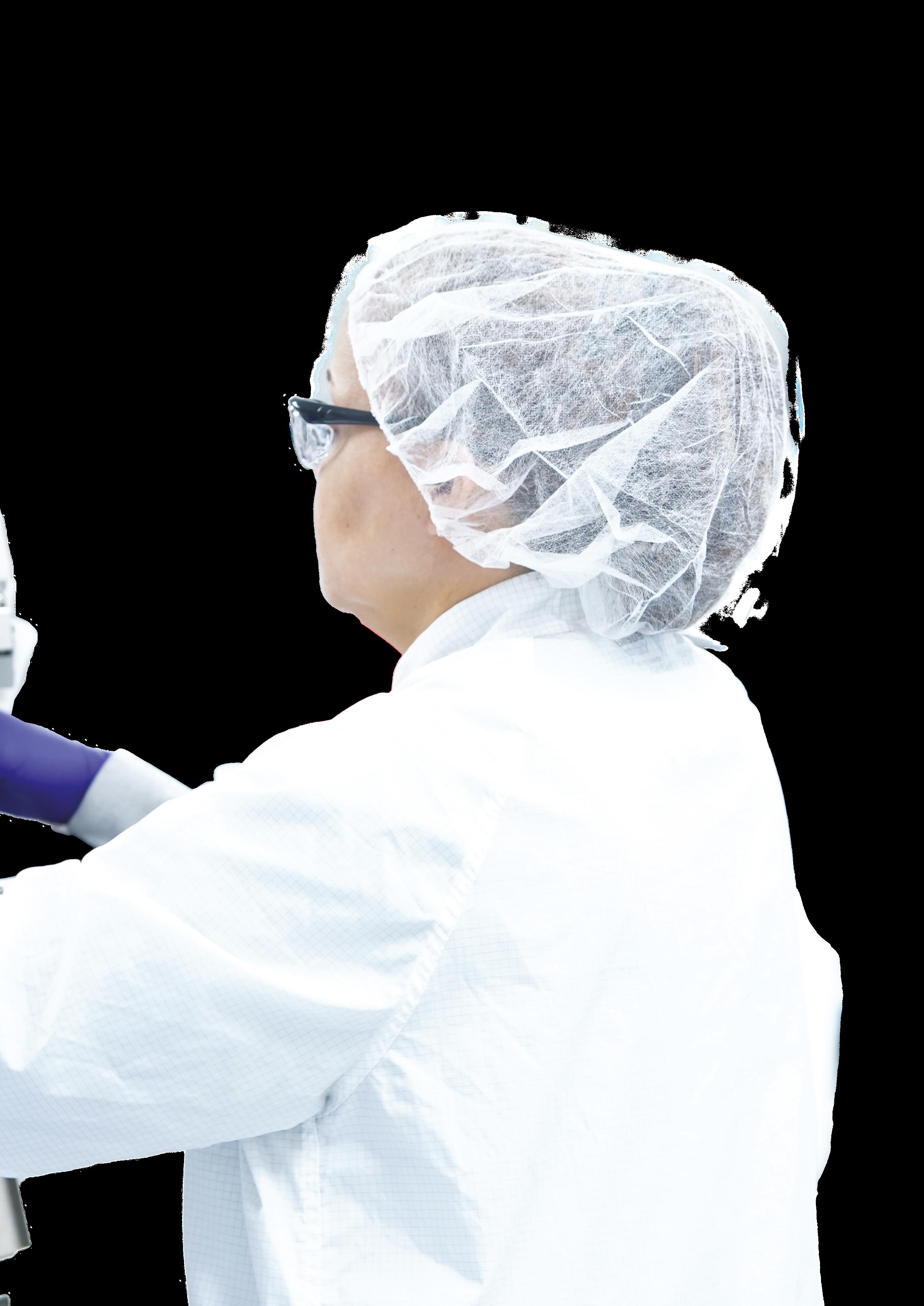
There’s an old saying which, in a world awash with ‘Big Data’, has taken on greater meaning: ‘All models are wrong; some models are useful.’
But forward-thinking companies are working on how to tame overwhelming amounts of data, with machine learning (ML) and artificial intelligence (AI) to speed up processes, save on spending and find new opportunities for business growth.
These industry leaders include Las Vegas, NV-headquartered Westfall Technik. The growth trajectory of Westfall Technik has proven to be compelling for customers and the markets alike. Accelerated by the significant platform built through the acquisition of 15-20 companies over an approximately 4-year timespan, the company has seen continued solid organic growth from their customers in their target markets of healthcare and consumer packaged goods and continues on their new customer acquisition journey.
Westfall’s corporate methodologies, backed by their “Stacked Integration Model”, certainly deliver as these relate to their value proposition supported by correlative moulding processes and effective Industry 4.0 concepts.
Westfall’s portfolio of healthcarerelated products features medical devices, pharmaceutical delivery systems, diagnostic tools, consumer health products, and

Westfall Technik’s David Schultz and Arkestro’s Edmund Zagorin explain how machine learning and game theory can benefit supply chains across industries
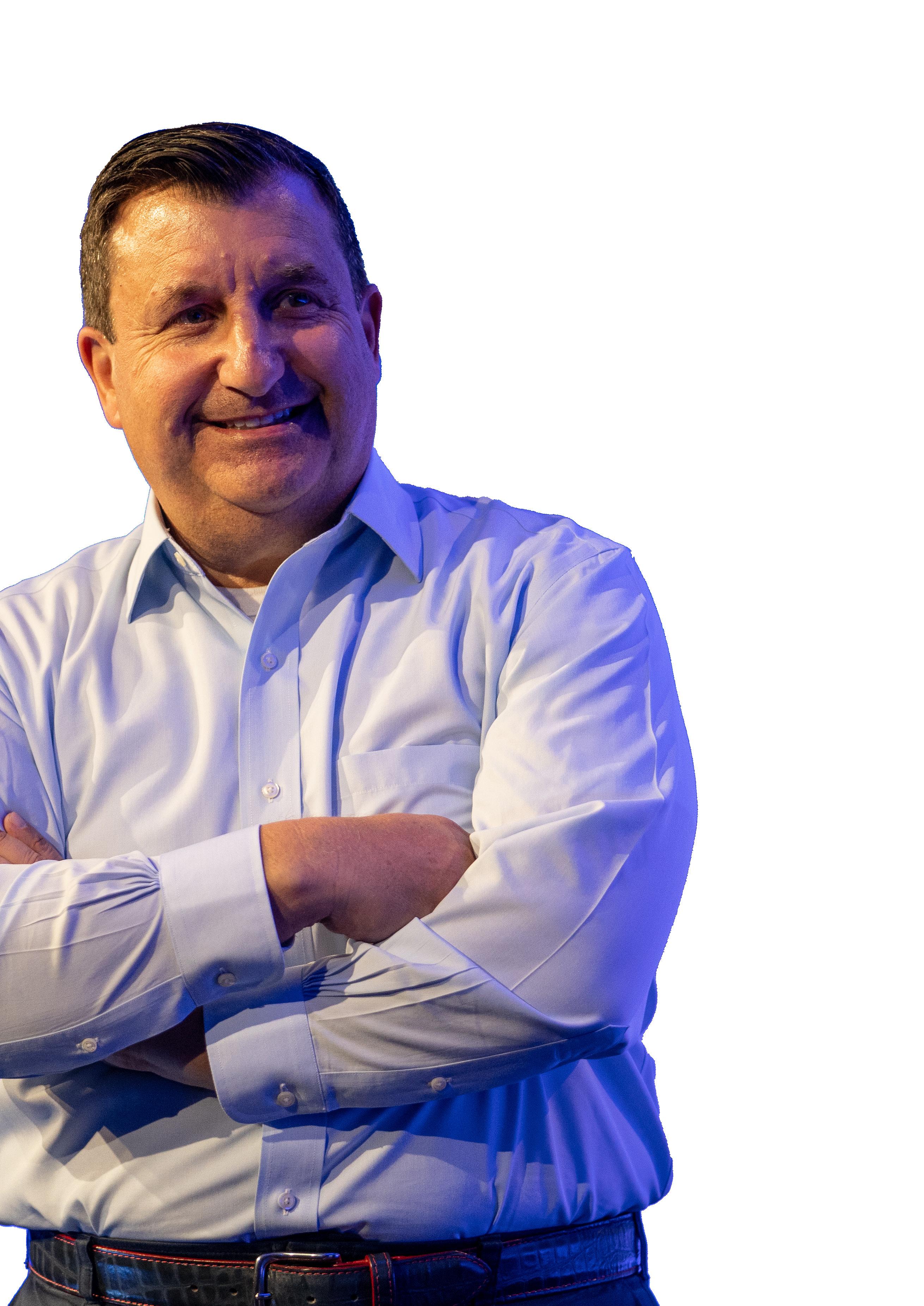
a range of services that also includes the moulding of plastic parts used in COVID-19 diagnostic rapid testing for both home and clinical use.
VP and Chief Supply Chain Executive David Schultz joined Westfall in February this year. He is responsible for the global supply chain across the entire enterprise, covering a broad range of critical responsibilities, including all areas of procurement and supply chain functions.
“Westfall is a company that's made over 15 acquisitions in the last four-and-a-half
years. This activity, along with significant organic growth, has resulted in explosive expansion, with hundreds of millions of dollars in revenue,” explains Schultz. “And, as all those companies were brought together, I was approached by Mark Gomulka, the CEO of the organisation, who said, ‘We need somebody to come in and put this all together, make this all work as a cohesive unit’. And that’s now my major goal: to bring all those operating units together and build teams of people who leverage use the right intelligence.”
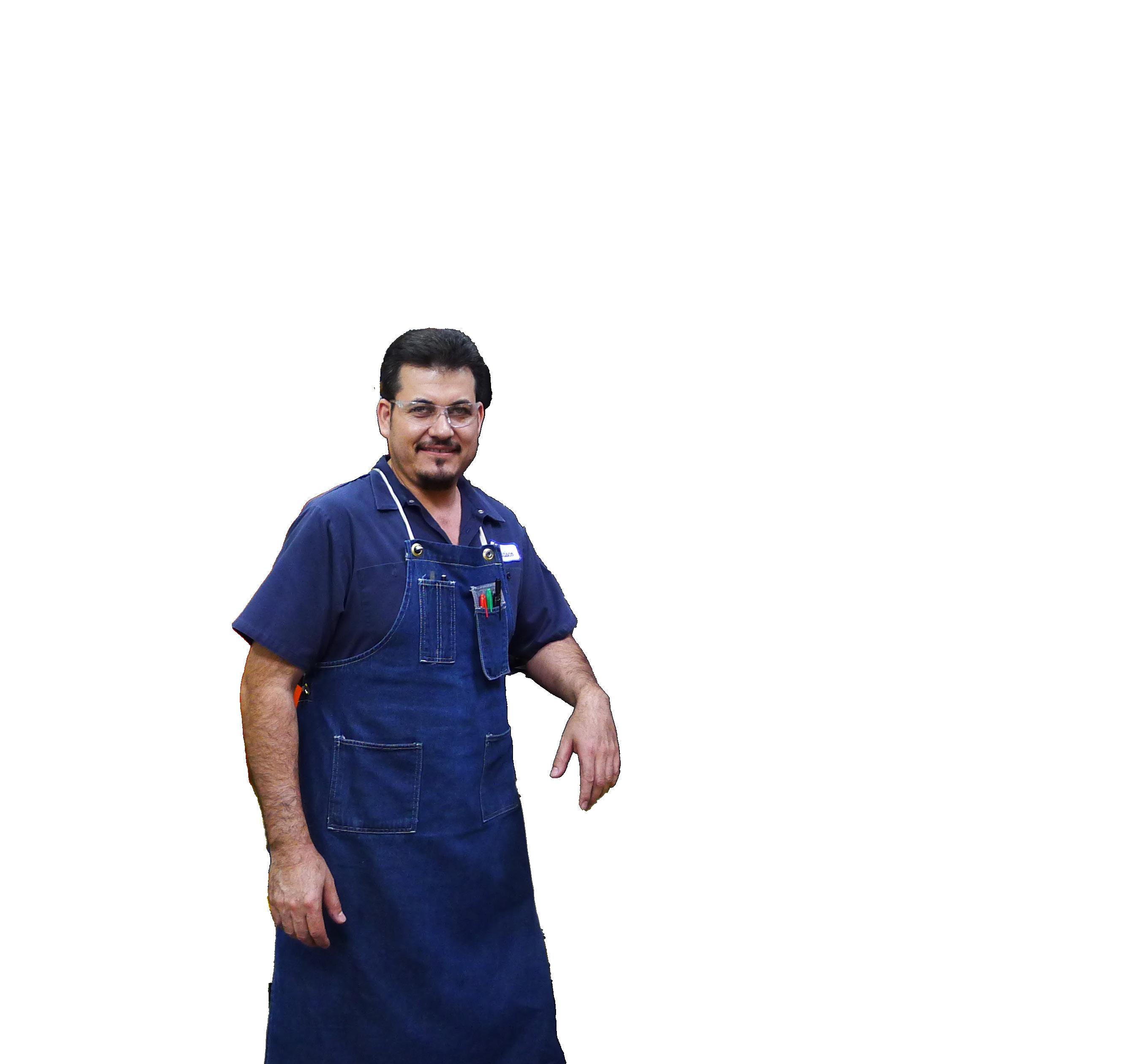
Among Schultz’s early business decisions was the introduction of a Predictive Procurement Orchestration solution provided by San Franciscobased Arkestro for use across the entire Westfall enterprise.
“I first met David at a Chief Procurement Officer event, where he was chairing the conference and giving a talk about the state of the market and some of the changes that he was seeing,” says Arkestro Founder and CEO Edmund Zagorin. “I saw that we had alignment in terms of how we perceived the market landscape. One of those key points of alignment was that there's so much volatility and complexity that it can be really challenging to deliver business impact fast using any digital solution that requires widespread user adoption to be successful. That's something that we take really seriously, so David and I got to talking, ultimately finding that we had vision lock.”
Zagorin has a background in quantitative network analysis and strategic sourcing consulting. He and his team launched Arkestro to help large enterprise procurement teams solve tough supply chain problems, drive continuous process improvement, and – in his own words –be their supplier's best customer.
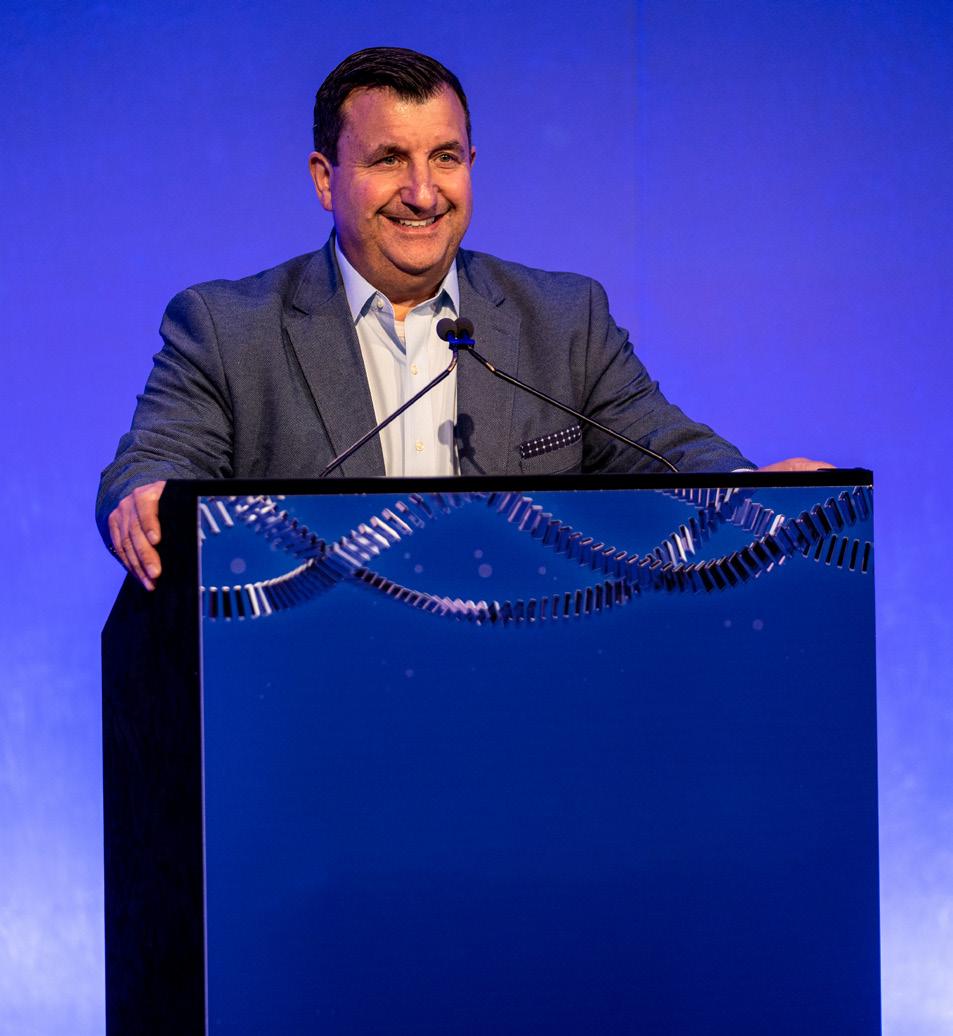
Westfall is also an Arkestro Corporate Alliance Partner and will advise on the functionality of new Arkestro products and capabilities. Westfall recently joined the Association of Plastic Recyclers’ Demand Champions Program and the Ellen MacArthur Foundation's Global Commitment for a New Plastics Economy.
The Arkestro platform embeds preferred outcomes into any organisation's system or process, which practically means
TITLE: CHIEF SUPPLY CHAIN EXECUTIVE COMPANY: WESTFALL TECHNIK
INDUSTRY: SUPPLY CHAIN
LOCATION: SOUTH CAROLINA, US
David is a senior management executive whose broad business experience and data-driven approach enables organisations to dramatically reduce costs in extremely competitive markets.
He is an imaginative dealmaker passionate about building trusting relationships and highly skilled at managing several billion dollars of spend resulting in significant dividends and speed-to-margin.
Prior to joining Westfall, David served as VP CSCO/Chief Procurement Officer for several public and privately held companies.
He thrives in organisations that promote and support the acquisition of new skills, technologies, and transformative thinking.

LOCATION: SAN FRANCISCO, US
Edmund Zagorin is a procurement thought leader obsessed with the power of recommendations to fix broken processes and supply chains. Prior to founding Arkestro, Edmund worked as a consultant focused on datadriven supplier negotiations for large healthcare providers, contract manufacturers and multi-campus retail brands.
Edmund is widely recognised as an expert on the emerging role of machine learning and artificial intelligence in procurement and has presented executive briefings on this topic to leadership teams.

pre-populating validated data about the supplier, the pricing and commercial terms of a transaction. It accomplishes this using an AI model that simulates a procurement cycle before it happens and then sends recommendations on quotes to the suppliers. Arkestro also routes more purchases to preferred suppliers (including suppliers that align more with ESG and risk objectives) and the price recommendation functionality saves significant time and resources.
Environmental, social and governance (ESG) criteria are vitally important, so Westfall Technik also leverages the Arkestro platform
to ensure they are working with suppliers that meet their environmental goals, while improving the effectiveness and productivity of the internal supply chain team.
"Westfall Technik's decision to work with Arkestro validates the value that we bring to managing supplier relationships, while also highlighting an important and innovative use case for us," says Zagorin.
Investing in technology means investing in people Schultz says he had a very specific challenge he wanted to address at Westfall and was initially drawn to the platform’s predictive

“Westfall Technik's decision to work with Arkestro validates the value that we bring to managing supplier relationship”
EDMUND ZAGORIN FOUNDER & CEO, ARKESTRO
 DAVID SCHULTZ CHIEF SUPPLY CHAIN EXECUTIVE, WESTFALL TECHNIK
DAVID SCHULTZ CHIEF SUPPLY CHAIN EXECUTIVE, WESTFALL TECHNIK
pricing feature, which he felt was unique and well-suited to offer transparency and credibility with the supplier base. Once he took a closer look at the platform, he realised it was the most practical solution to provide the best value possible in the least amount of time.
“David came to me shortly after joining the organisation and suggested multiple options to accelerate the transformation to one operating system and mindset,” says Westfall Technik CEO Mark Gomulka. “It was vitally important that our supplier and customer partners fully understood the power of One Westfall and the competitive advantages for their respective businesses. The Arkestro platform has been a key part of our strategy to attain this vision on the supply side of the equation.”
Schultz found that the team of people
“It's not just technology, it's people, and the pedigree of Edmund’s background and experience, as well as his vision for the company, was very reassuring to us”
behind the platform were also eager to support his own business operations, as well as the vast ecosystem of suppliers he deals with on a daily basis.
“We invest in people,” explains Schultz. “It's not just technology, it's people, and the pedigree of Edmund’s background and experience as well as his vision for the company – this was all very reassuring to us. In particular, we need the suppliers to want to participate, cooperate, and know they have taken part in a fair process.
“We can never forget that, no matter how much technology can be an enabler, it all starts and ends with people,” says Schultz. “There’s certainly a tremendous amount of information out there about AI and ML, which is very important, but I often remind myself that it’s the intersection of artificial intelligence with human intelligence that really makes it all work.”
parts. This might include suppliers working with manual spreadsheets, having to copy and paste prices and pitches, dealing with procurement teams on a case-by-case basis, and a wealth of additional measures, each created from scratch by individual companies and teams.

percentage of companies that experienced more disruptions to their supply chain in 2021 than in previous years, according to the Hubs Supply Chain Resilience Report 2021
Arkestro is at the forefront of costmodelling by ML and behavioural science, says Zagorin, following the groundwork on dynamic pricing laid by Expedia and Uber.
“Predictive pricing is a concept that fundamentally simplifies a transaction,” says Zagorin. “It’s not necessarily better for one side or the other; the advantage is it's so much faster to settle the terms of the transaction, enabling both parties to move on to building great supplier relationships.
The Arkestro platform is designed to cut through the disparate collection of workflows and workarounds that a typical company has to deal with today in order to source pricing for everything from materials to spare
“And, in many cases when it comes to long-held supplier relationships, personal knowledge of the companies is important when making supplier decisions,” says Zagorin. “Traditionally, the entire process can take, conservatively speaking, weeks, but frequently, months and sometimes years depending on the complexity. When we looked at this, we knew that if we simulated the process at the start where requests are pre-filled with validated datadriven recommendations, Arkestro could make it so much easier and faster for suppliers to conduct business.”

“Data-driven solutions are the ultimate goal – we should all do our best to ignore any opinions masquerading as fact”
Arkestro’s data and behavioural economics research backs this up, demonstrating how the platform is better in financial terms for the procuring organisation, particularly for those companies looking to scale operations across more spend without necessarily having additional procurement headcount available.
“That's really Arkestro’s mission: to amplify the impact of procurement’s influence,” says Zagorin. “And that's where we see the power of embedding ML recommendations on price and supplier terms into processes wherever they are – be that email, spreadsheets or other systems the company might already be using.”
Westfall’s work with Arkestro has allowed Zagorin’s team to learn from a large company working with thousands of suppliers. Zagorin himself has said that David’s input has been something of an inspiration, particularly his drive to get teams working with data to see what benefits can be generated.

“David got his team to ‘kick the tyres’ and challenge us really early on when we came together,” says Zagorin. “I’m always a student of our clients, and David has a great ability to get people in a room to say, ‘We’re going to see how this works, so let’s analyse the

data and use it carefully and strategically to make the proper decisions’. David has referenced on several occasions that, in the business world, we all need to be cautious of ‘opinion masquerading as fact’. It's been really powerful and a big part of what's made the partnership so great.”

Schultz says that he and his team have been impressed with the Arkestro platform’s ability to bring order to traditional networks of suppliers, contacts and contracts, which inevitably produce a cascading flow of actionable data at every turn.
“It's been awesome to see what our extended team at Westfall has done with the platform,” says Schultz. “Most procurement and supply chain leaders
DAVID SCHULTZ CHIEF SUPPLY CHAIN EXECUTIVE, WESTFALL TECHNIK“It's the intersection of artificial intelligence with human intelligence that really makes it all work”
will tell you every industry's a little bit different, every category of spend is a little bit different, that there are unique dynamics with a supplier relationship based on how much money you spend with them. Or perhaps it’s a case of ‘Do we have a contract with them? How often is that potentially going to change? Is the contract being used as a kind of ad hoc purchase?’ All of these questions create a tremendous amount of complexity –and complexity can often mean more work. That’s why having model-driven recommendations can help cut through the noise.
“It’s that old expression,” he says. “‘All models are wrong; some models are
useful’ – we would say that all models are wrong, some models are useful, but the Arkestro model – used in partnership with our suppliers – is the best way to get a tangible business impact.”
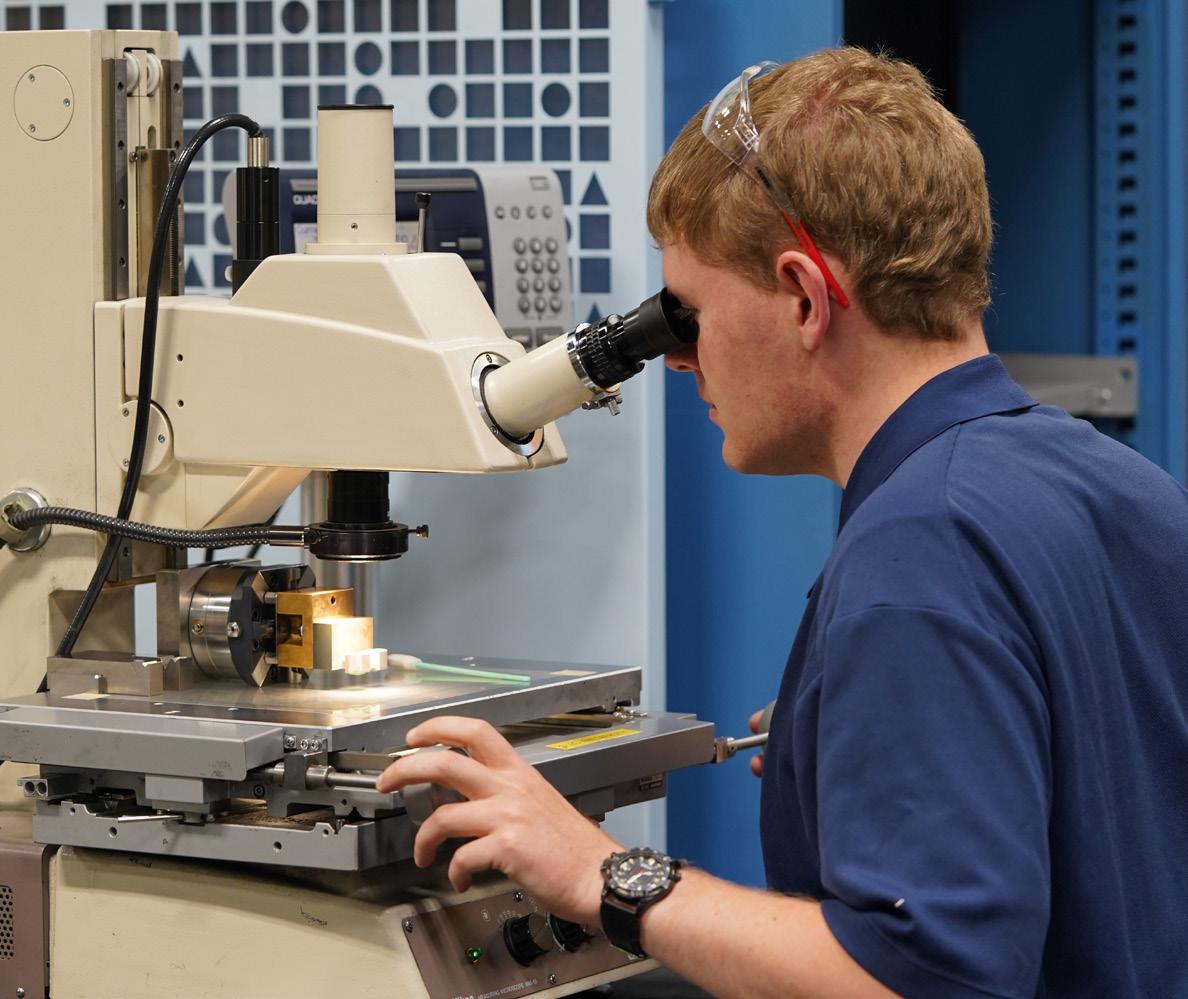
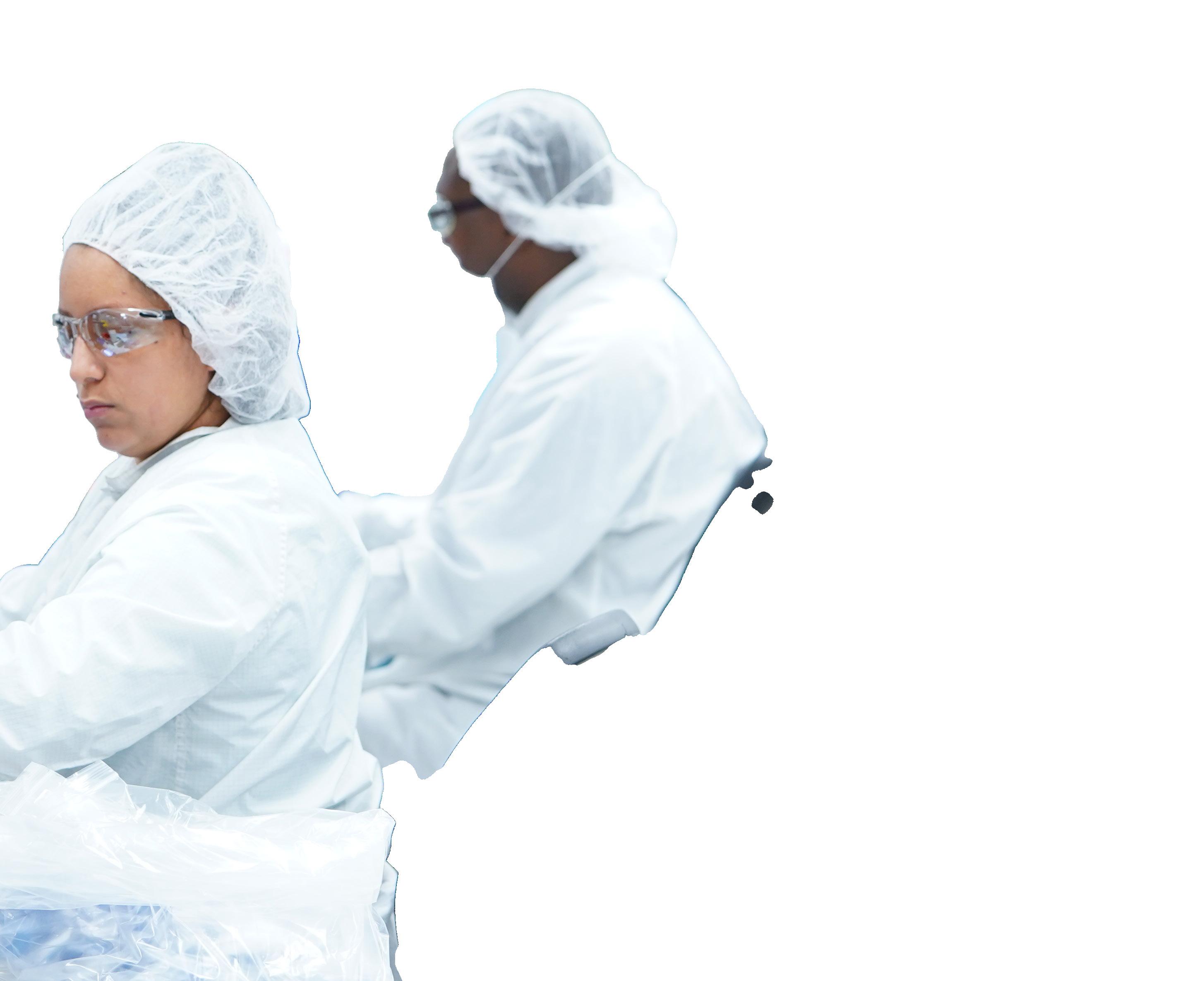
The move away from wasteful and carbon-heavy linear supply chains to circular models is happening, albeit very slowly & with huge challenges ahead
Currently, just 8.6% of the world’s economy is circular, which means around 91 billion tonnes of material each year is being left to its fate in the natural environment. Research conducted by SAP alongside the World Economic Forum shows that 61% of the world's population (4.9 billion people) lacks access to infrastructure around waste management or recycling. The numbers around sustainability – or rather, those showing how far we still have to go – are mind-boggling.
Speaking at BizClik Media’s Sustainability
LIVE event in April this year, Stephen Jamieson – Global Head of Circular Economy Solutions at SAP – addressed the significant sustainability challenges that lie ahead.
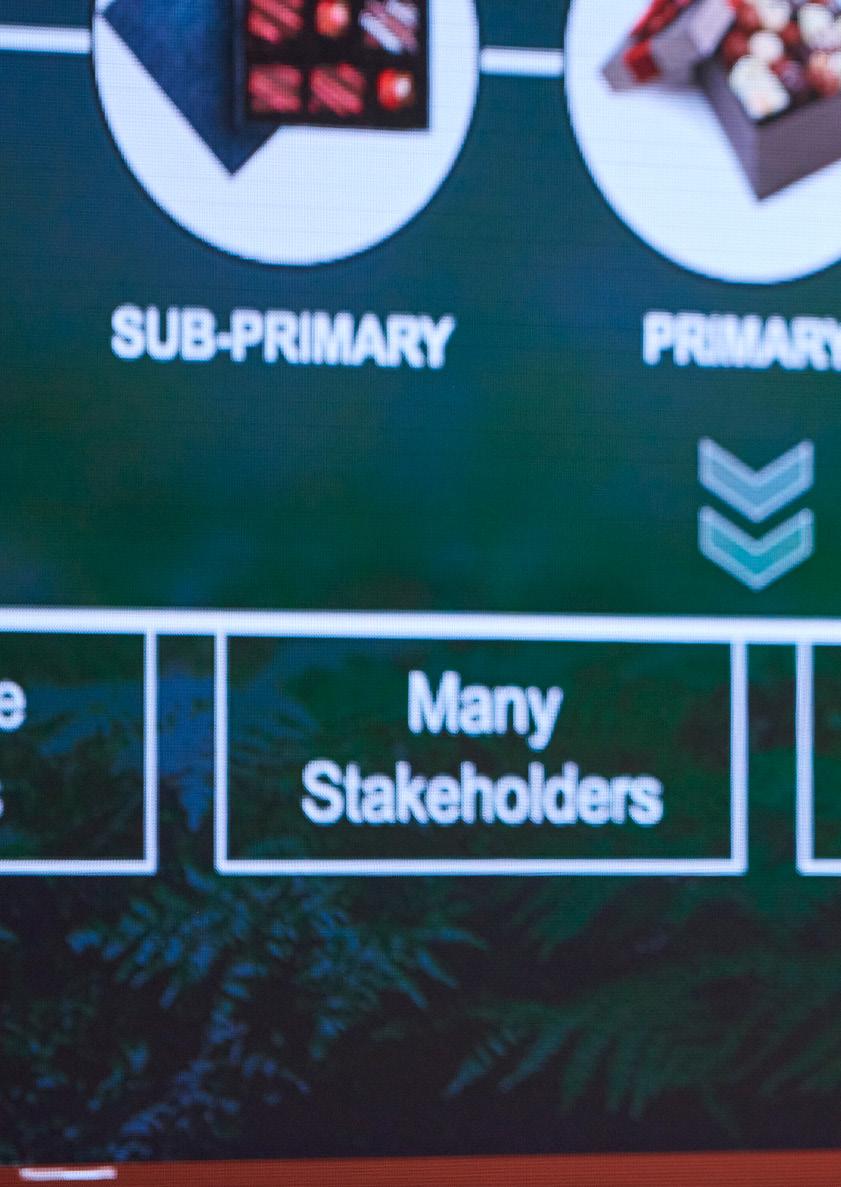
“We're using more resources than the planet can sustainably provide, and half of total global emissions comes from the way we use materials,” he told his live and virtual audience. “Shifting to a circular economy means a change in how we design not only products and new materials to eliminate waste, but also new policies, infrastructure and business ecosystems.”
Circular supply chains are operationally vital Sustainability has never been higher on the agenda for businesses, both politically and operationally. In today’s world, organisations
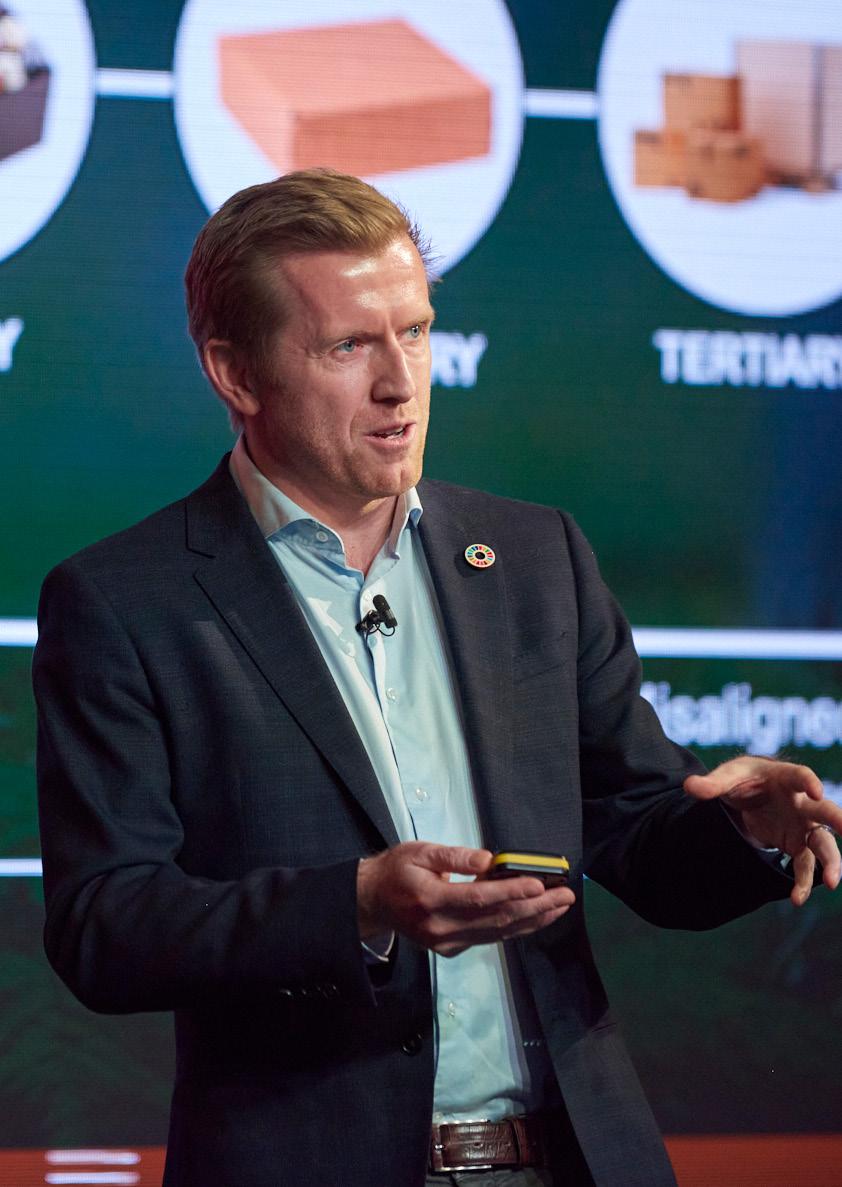 Stephen Jamieson Global Head of Circular Economy Solutions at SAP
Stephen Jamieson Global Head of Circular Economy Solutions at SAP

The e2open connected supply chain platform provides the end-to-end visibility and collaboration you need to tackle unpredictability. Build trust and confidence with your channel, supply, logistics, and global trade partners. Take control of supply constraints through direct procurement and meet customer commitments in the face of disruptions and scarcity.
The connected supply chain. Moving as one™. www.e2open.com
E2open and the e2open logo are registered trademarks of e2open, LLC, or its affiliates.
STEPHEN JAMIESON GLOBAL HEAD OF CIRCULAR ECONOMY SOLUTIONS, SAP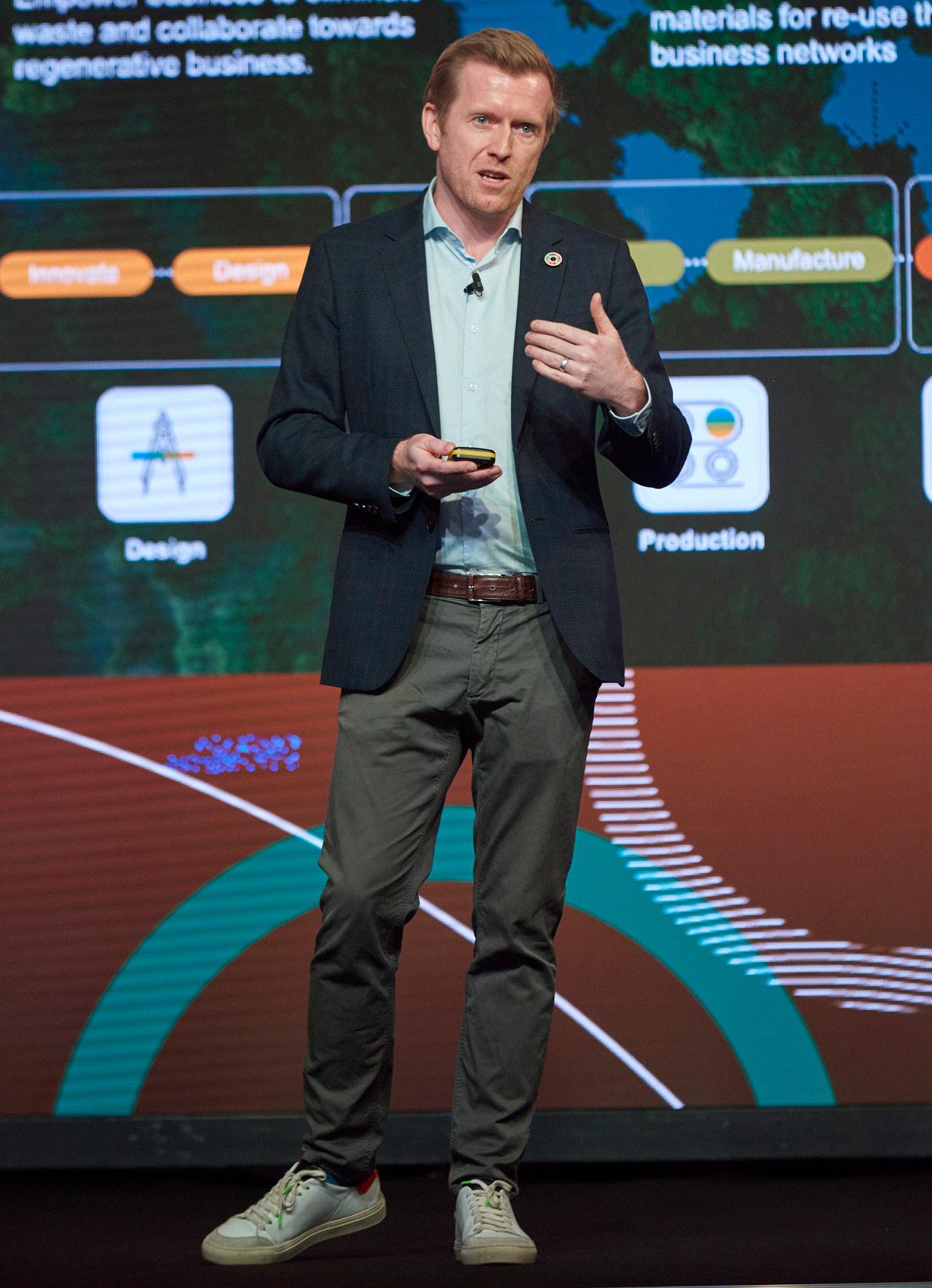
must make net-zero practices an integral part of their strategic thinking.
This means sustainability must be embedded in end-to-end operations, from design to consumption. Only this way will we be able to escape the ‘take, make, use and dump’ linear supply chain model, relying instead on a circular model built on reuse and recyclability.
Working closely with its customers, SAP helps deliver environmental, social,
and economic impact, and its enterprise solutions are designed to enable a future with zero emissions, zero waste, and zero inequality.
As Jamieson points out, product consumption accounts for around 45% of global greenhouse gas emissions.
“SAP's role in the world over the past 50 years has been to enable the end-to-end process of business,” Jamieson said. “The key steps are how we design, source, market, produce and deliver.”
Data collection is barrier to the circular economy
But he says there are significant barriers to shifting to a circular economy, chief among which is “understanding at the design stage the environmental impact of the decisions that we make”.
Jamieson stresses that to drive solutions “we need critical interventions”, and says that, to this end, SAP is focusing on three areas:
• Eliminating waste to prevent destruction of nature.
• Circulating materials and products to keep them in use as long as possible.
• Having end-to-end insight to drive regenerative business, so decisions made by consumers link all the way through to ultimate land-use impact.
He says that, to achieve these things, policymakers, NGOs, investors, producers, designers, businesses, innovators and entrepreneurs must be able to unlock new-technology solutions.
“To deliver a circular economy, we first need to measure it,” he says. “We need to understand the recycled content in materials and in products. We need to understand whether those things are
“WE NEED TO HELP CONSUMERS PLAY THEIR ROLE IN DELIVERING A WASTE-FREE FUTURE”
Sustainable product design has helped 67% of organisations reduce carbon emissions, yet 41% of currently have no plans to implement sustainable product design, or do not plan to do so at all, new research from Capgemini reveals.
The study explores the importance of thinking beyond isolated design problems, and instead looking at the early stages of product design through to the selection of materials and end-of-life management.
Sustainable design is often held to be too expensive, but Capgemini’s study found that 23% of businesses have seen a decrease in costs since implementing new sustainable strategies, while 37% of organisations found that costs remained the same.
Other key findings include:
• Regulatory pressure overrides sustainability goals, with 61% of organisations fearing regulatory non-compliance.
• Businesses don’t understand sustainability strategies. Just 16% of product designers say they have an accurate understanding of the useful life of their products.
• Sustainable design practices provide a multitude of long-term benefits: organisations have experienced increased revenue growth (73%), improved customer satisfaction (70%), and improved employee engagement (79%) alongside carbon emissions reduction (67%).
reusable, compostable, whether they’re sourced from fossil-based sources, and what the CO2 content is.”
Complex packing poses problem for circular economy
Packaging, he says, is notoriously complex when it comes to sourcing, interpreting and acting upon the data required to measure environmental impact.

“Take a chocolate box,” he says. “You have the tray containing the chocolate that sits within the primary packaging and then the secondary packaging around that. Then there’s the tertiary packaging, used for transportation.
“Being able to understand what materials are used at what point in time in the production of your products is an unbelievably complicated task, and the
NEARLY HALF OF BUSINESSES‘ ARE NOT DESIGNING SUSTAINABLE PRODUCTS’
reality is that the data needed is often in disparate systems.”
He adds: “Sometimes, it might be in a SAP system, but oftentimes not. It could be across many different stakeholder groups within your organisation and across third parties, such as suppliers and packaging providers. Then the data might be in the form of an Excel worksheet or in a more formal system.”
This is why SAP is working with Nestlé on ways to access such data.
“We want to solve the data problem to provide a view of the renewables in chocolate-box packaging. What's its recyclability? How compostable is it? What's the thickness? What's the weight?
“Once we understand such things, we can then start to aggregate analytics at a

“SHIFTING TO A CIRCULAR ECONOMY MEANS CHANGING HOW WE DESIGN NEW PRODUCTS AND MATERIALS TO ELIMINATE WASTE”
STEPHEN JAMIESON GLOBAL HEAD OF CIRCULAR ECONOMY SOLUTIONS, SAP

global level and help sustainability managers understand how they're performing against commitments.”
Of course, circularity isn’t just a challenge facing multinationals; small to medium-sized businesses must also toe the line. But how can SMEs adopt a circular approach when they lack the funding or technology of their larger rivals?
“If I were an SME right now,” says Jamieson, “I’d concentrate on scalable principles. You don't need to be a big enterprise to foster change. It’s all about embedding sustainable practices that can be scaled as you grow.”.
Regulatory complexity on sustainability is ever-increasing Another challenge to circularity is regulatory complexity, which continues to evolve and change. At the last count, there were approximately 400 extended producer responsibility schemes worldwide, and this takes no account of the new and changing laws and regulations being introduced on a country-by-country basis.
“This is the world into which we launched SAP Responsible Design and Production

at the end of 2021,” says Jamieson. “It’s all about addressing the key sustainability challenges, solving the data challenge, and unpicking complex packaging scenarios with a view to drive action.”
According to Jamieson, the company is looking to leverage its network-based solutions like SAP Ariba and SAP Business Network for Logistics.
“We’re currently working with 3.5 million businesses around the world and are starting to make connections between the people that have the materials, with the people that need those materials,” he explains.
“As we move forward in 2023, it's about innovating business-specific and industryspecific solutions that address the final mile, so we can help consumers play their role in delivering a waste-free future.
“We're also being very selective in terms of the materials we are focusing on. At the moment we have a real focus on plastics and packaging, but this will rapidly expand into textiles, batteries, food, building materials, electronic components, as further regulations come online and existing regulations change.”
“UNDERSTANDING WHAT MATERIALS ARE USED IN THE PRODUCTION OF PRODUCTS IS AN UNBELIEVABLY COMPLICATED TASK”
STEPHEN JAMIESON GLOBAL HEAD OF CIRCULAR ECONOMY SOLUTIONS, SAP





Describing itself as the force behind the Armed Forces in the UK, Defence Equipment & Support (DE&S) is responsible for sourcing and delivering equipment through life support services for the Royal Navy, the Army, and the Royal Air Force. That’s everything from boots on feet to helicopters on aircraft carriers and tracks on tanks. It’s a £10bn (US$12bn) a year operation handled by a combination of military personnel, civil servants and contractors, and a highly specialised part of the Ministry of Defence (MOD).
Supporting military activity and procuring everything from food to fighter jets is a logistical challenge at the best of times – made monumental during times of war in Europe.
Roger West is the Logistics and Support Director at DE&S and even though he has 40 years of experience to draw on, it’s fair to say these are unprecedented times – when supply chain resilience is paramount.
“It's absolutely fundamental that we have resilience in our supply chain,” says West. “We've been tested in recent years by COVID-19, by Evergiven, and now in the support of Ukraine. We are giving considerable thought to how we need to re-calibrate our supply chains to give us the resilience that we need, because we can't afford to go out half-cocked into a demanding environment where people's lives are at risk.”


The scale of the operation is evident, yet hard to fully comprehend, on our visit to MOD Donnington, near Telford in the UK – a former base with a rich history dating back to 1936. During the Second World War,
it was recognised as a potential ‘safe’ site for storing ordnance and other equipment rather than Woolwich in London.
The site grew over the decades and remains the main logistics hub (alongside Bicester) for the MOD, bolstered by a landmark contract award in 2015 that saw the development of its £90m state-of-theart Defence Fulfilment Centre (DFC). The impressive DFC was constructed by McLaren Construction under contract by Kuehne + Nagel, and covers an area of around 10 football pitches. Importantly for West, it brings the DE&S operations bang up to date with industry best practice.
The MOD signed a 13-year logistics contract with Leidos in 2015 which, in addition to building the DFC, sees them both run and improve procurement of commodities, stock control, storage and distribution.
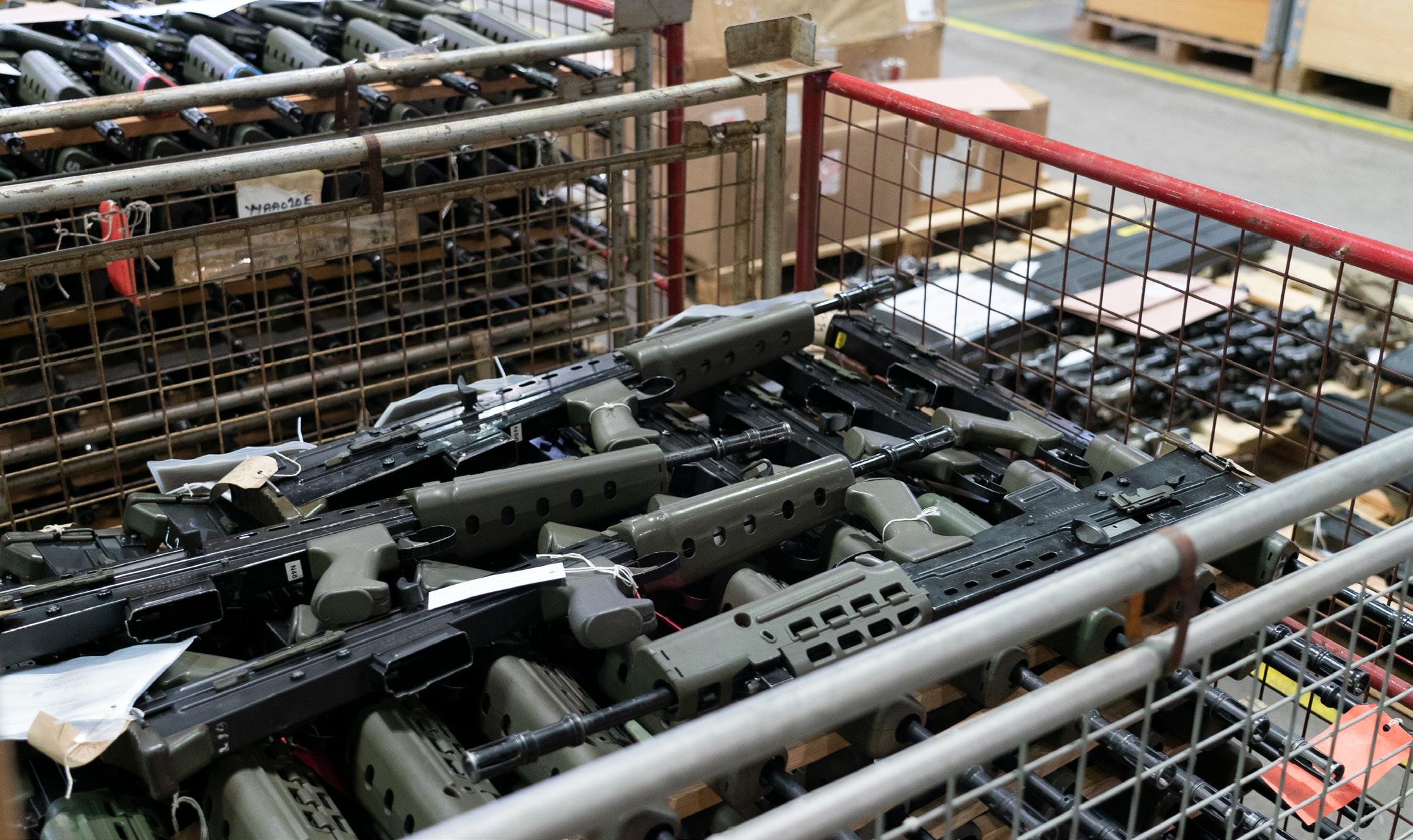



Simon Fovargue, MBE, is the Chief Executive for Leidos UK and Europe - a global Fortune 500 company employing 44,000 people across 137 countries.
He says, “Leidos specialises in developing and supporting large-scale and innovative technology transformation programmes designed to deliver business improvement and efficiency. Our ability to deliver digital solutions for the public sector is unmatched from secure cloud migration, business process optimisation and business intelligence capabilities.”

As a strategic supplier to the UK Government, Leidos has an essential role in diverse customer deliverables and projects. Over the past year, it has played an active role in the Platinum Jubilee and, more recently, in the logistics operations surrounding Her Late Majesty Queen Elizabeth II’s funeral.
Leidos also supported the Ministry Of Defence (MOD) in the UK’s battle against Covid-19 by
assisting with the receipt, integration, storage and distribution of life-saving ventilators, PPE and vaccines at the height of the pandemic.
In 2015, Leidos was awarded the Logistics Services Transformation contract from MOD. The 13-year, £6.7bn contract is transforming the UK’s Defence supply chain and Leidos and its subcontractors service the needs of nearly 200,000 personnel in 600 locations around the globe.
“The UK Armed Forces is now able to leverage best-in-class technology solutions that rival those deployed by leading companies in the private sector. The MOD don’t think of us as a logistics company; they think of us as a technology integration company,” Fovargue explains.
A future in technology and diversity
Leidos is a strategic supplier across all sectors, providing digital transformation for customers in sectors such as Defence, National Security and Devolved Governments, to name a few. Fovargue adds, “We have partnership schemes to ensure we tap into growing companies. We want to integrate technologies to enable better outcomes for the Customer.”
The contract breadth is much broader than many realise, says West, and is delivering a significant increase in IT capability, global reach, resilience, and performance over the old set up, with the contract expected to deliver benefits of £300m.
“We're absolutely dependent on our key partnerships, whether it's in the acquisition or support environment,” says West. “As you know, we don't build military equipment. We do that through the supply chain. So, the way we manage and develop those relationships is absolutely critical.

know, we don't build military equipment. We do that through the supply chain
ROGER WEST LOGISTICS AND SUPPORT DIRECTOR, DEFENCE, EQUIPMENT & SUPPORT
One of our key partnerships is with Team Leidos, and their team members TVS Supply Chain Solutions, Agility, and Kuehne + Nagel. They are all fundamental to what we do.”
Babcock is another key partner with a high-visibility presence at Donnington –not least because they are handling the repair and maintenance of some of the larger items of equipment passing through the site. From tanks to armoured personnel carriers and supply trucks, Babcock’s crack mechanics and technicians strip down these machines often to the bare metal and build them back better, ready for the theatre of operations.
“We run the contract that we outsourced to Leidos, which is essentially all of our storage and distribution activities across the UK, but it’s much more than just that,” says West, noting that it is about delivering an uplift in capability to defence with a laser-like focus on meeting the needs of the war-fighter. “We have to remember that there are brave men and women working in often remote, hostile, and harsh environments who depend on what we do to get through the day.
“Team Leidos provide our commodity procurement, so they buy all our uniforms, medical supplies, general supplies.


They store all of our non-explosive stock. So, at the moment that's about £6.5bn pounds worth. They also move all of our stuff within the UK, including explosives. It’s a massive undertaking. I think it was probably the largest outsourcing in Europe at that time.”
That huge logistics contract with Leidos is just one aspect of West’s responsibility. A recent addition to his team’s remit is managing storage at Faslane naval base in Scotland and in Portsmouth. That brings their storage responsibilities to more than £8bn worth of stock and provides the means to ensure stores are located and supplied in the most efficient and effective way when combined with the Team Leidos contract.
Another team handles the British Forces post office, while another is responsible for fuel acquisition and packed fuel.
“We also have the Defence Equipment Sales Authority (DESA), which basically sells all the things that the MOD no longer requires,” explains West. “Be that C-130 aircraft [Hercules], ships, armoured vehicles, sleeping bags – all of that can be sold on a governmentto-government basis. We sold HMS Ocean a few years ago to the Brazilians, for example."

We've been tested in recent years by COVID-19, by Evergiven, now by Ukraine
" "
As a ‘Gold’ Armed Forces Covenant holder, we’re committed to supporting the Armed Forces and Defence communities. We believe in bringing people and goods closer together by innovative and sustainable business solutions, across sea, air, road and contract logistics.

“There's always an awful lot of interesting things going on,” says West. “We've got the largest privately owned railway in the UK –if you went to Bicester, there are miles of sidings and track built as part of its crucial role in WW2. It handled 292,000 wagons in one year as part of the D-Day preparations.
West outlines the various teams and departments that account for the 13,000 talented civil servants, military personnel and private contractors under the DE&S umbrella, spread across more than 150 locations globally. Donnington is one of the key UK sites that provide some 1300 acres of storage facilities in the UK alone.
“And then we've got a project that we are just in the process of rolling out, which is another new building for storage which is going to be in Longtown, near Carlisle. That's going to be about the size of 12 football pitches and will again help us provide storage for a lot of our big, lumpy things such as ship propeller shafts, engines and gun barrels. We call it block storage, and it will also help us de-risk some of our storage at other sites.”
Remember the end scene from Raiders Of The Lost Ark, when a wooden crate is wheeled into a seemingly endless warehouse?

ROGER WEST LOGISTICS AND SUPPORT DIRECTOR, DEFENCE, EQUIPMENT & SUPPORT
The storage facilities we saw at Donnington had that same sense of awe-inspiring, bewildering scale, but were a masterclass in automation. And some of these buildings were fitted out more than 30 years ago, with what must have been cutting-edge warehousing racks and robots at that time.
“Donnington was a key site for the Second World War. A lot of the investment that took place happened around that time, so there are some fairly mature buildings on site and there are other buildings which were developed in the 70s and 80s. What you will have seen though, is a more recent investment in the DFC,” says West. “The Defence Fulfilment Centre marks a fundamental change in the philosophy of Defence – from storing things to being able to fulfil demands and therefore being able to understand what those demands are and then making sure we're responsive to them.”
“We conduct around 90% of our fulfilment through that single building, whereas previously we would have been picking stores from right across all of our sites. This wasn’t very efficient, and we’ve been able to reduce our estate footprint by about a third through this new approach. We've also been able to reduce our manning quite considerably whilst improving flexibility and
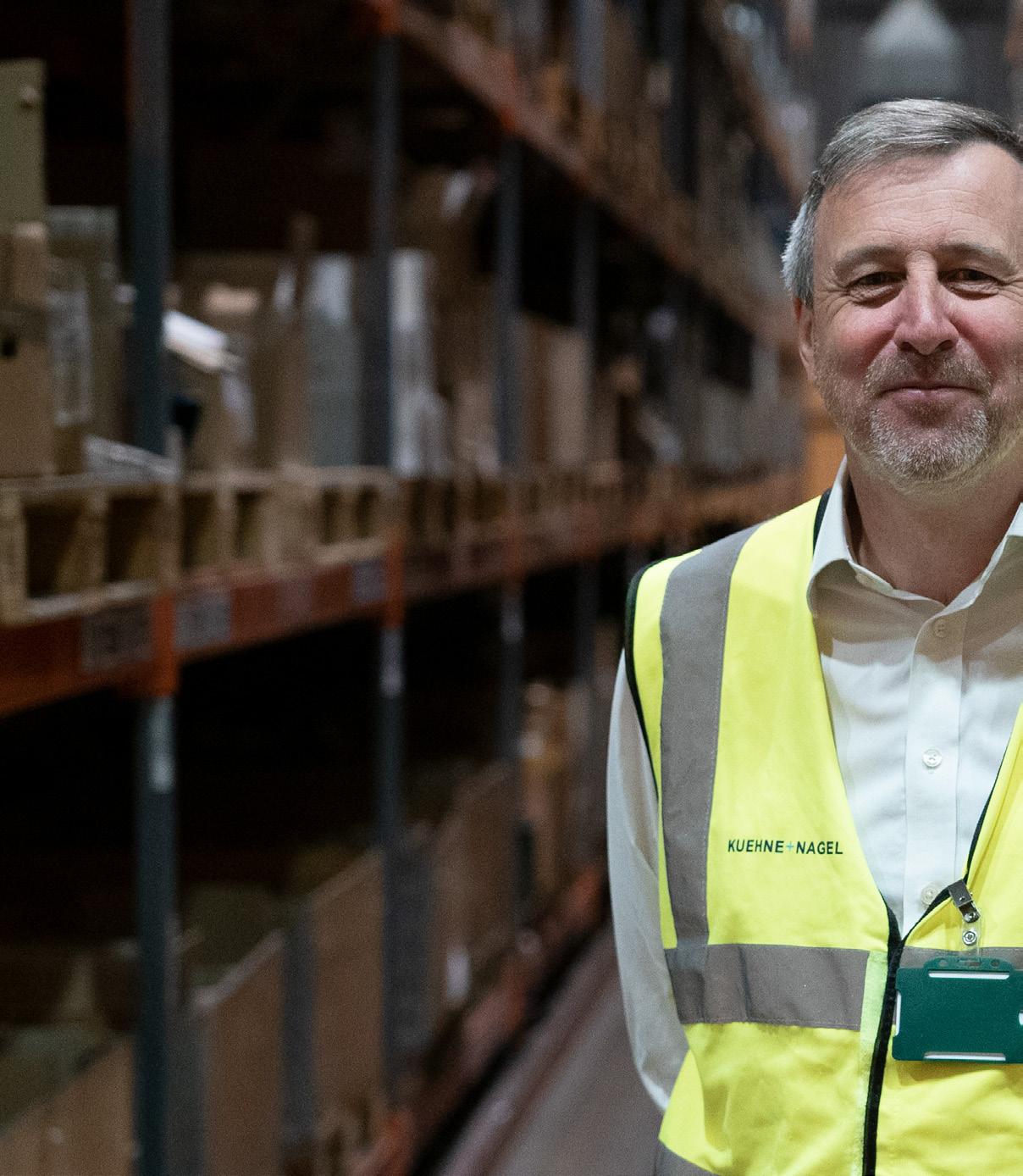

Countries we operate in
members in
responsiveness. It's not fully automated, because that's not appropriate for our business, but it takes us a long way down the road of being very efficient, but also having the agility to deliver when needed.”
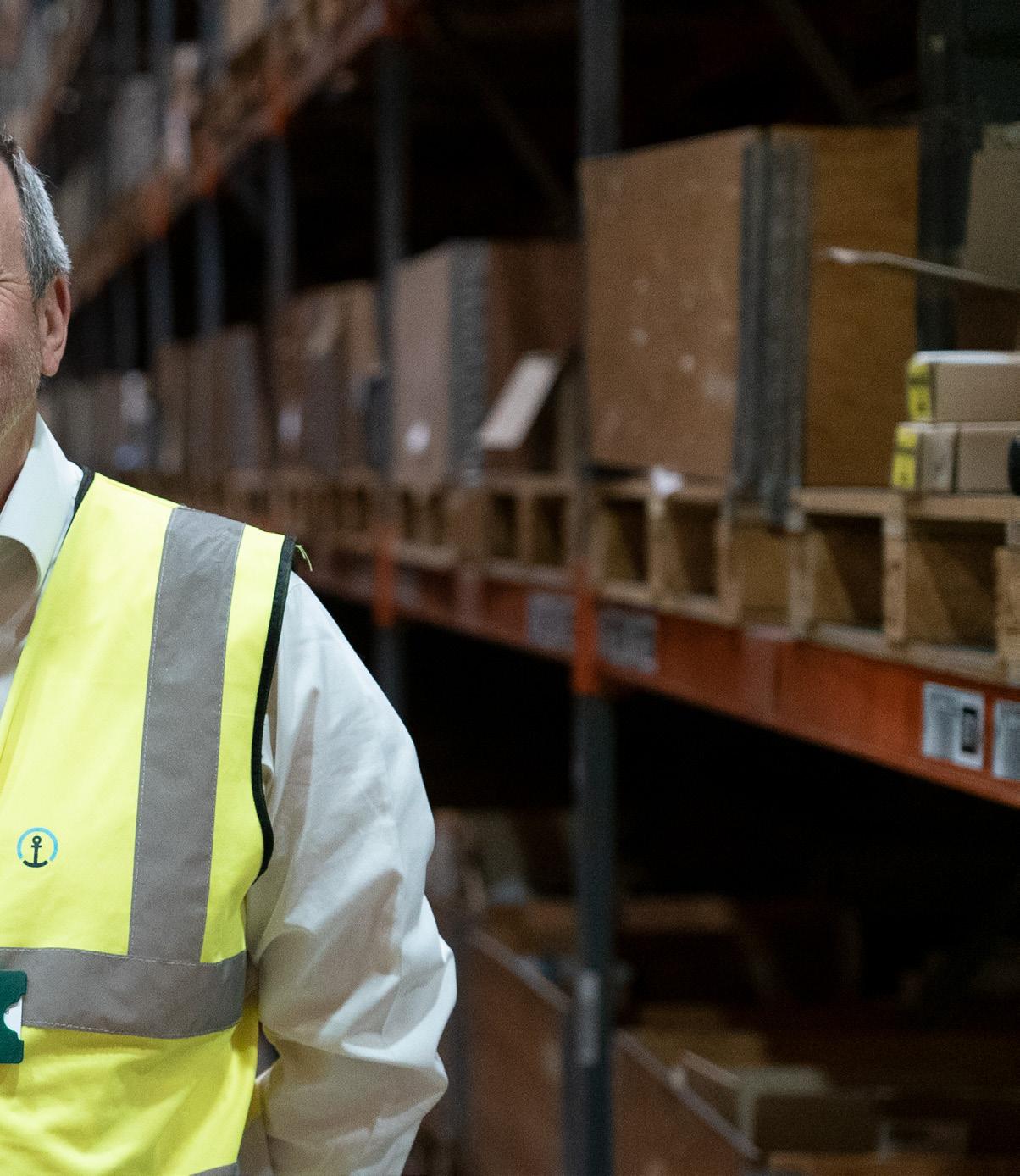

As soon as you see a site of such scale and buildings of cathedral magnitude, thoughts inevitably turn to sustainability. We are glad to report that on our site visit, there was as much wildlife on display as warcraft. On our tour, we saw everything from rabbits to squirrels and (less expected) a green woodpecker.
“Sustainability is really important to us, and as you've seen on the sites here, we are blessed with very green environments and wonderful wildlife diversity as well as having a lot of buildings,” says West. “On some sites we've been developing bee meadows, others are Sites of Special Scientific Interest (SSSI), and we certainly make sure we look

after the wildlife on sites and try and create an environment that is both pleasant, functional and sustainable.
“One of the things I'm pushing in our new build project at Longtown is that we will install solar PV on the roof. What I'm aiming for is that we generate sufficient electricity for that building and, hopefully, for the whole site. I think that's an area where we should do much more across all our sites.
Looking to the future, West believes firmly in having a vision and a goal and principles that his team should deliver through the supply chain, but it has to be real. He says you have to make it practical, setting achievable clearly-defined goals along the journey.
“One of the things I think has been my stock-in-trade throughout my career is about getting stuff done,” says West. “I'm not really interested in a vision and strategy for its own sake. I'm not very interested in lots of PowerPoint or long, written reports, or talking about things. I want to get on and do things. We do run the risk sometimes of spending too much time talking about what to do and then find the moment or opportunity has passed. I realised from my retail days that even if we do something and it turns out not to be quite right, you can always stop doing it and then do something else. Better to do that, in my book, than sit contemplating and never actually changing anything at all.
In terms of demonstrable action with real results, West says his first goal is completion of the new storage facility at Longtown. In parallel, he wants to bring Project Lifecycle Management (PLM) into equipment support. West says DE&S has invested in its business systems, but it’s the turn of through life support to get some attention that will provide foundations for
many of the new things emerging such as autonomous last mile logistics, digital twins, and the role that 3D printing could play in the Defence environment.
“We really need to be looking at how we bring PLM into play so that we're delivering the backbone of support systems that allows our people to be much more effective, much more controlled, and much more consistently repeatable in the way we deliver support,” says West.
West joined DE&S on an 11-month contract in 2013 and is still there, nearly 10 years later. So, is that a sign of unfinished business, or simply relishing the challenge?
“This has been the best job in my career so far,” says West. “It has been a huge amount of fun and an opportunity to get on and do things. I found that working for NHS Supply Chain gave me a strong sense of service to the state and this role has built on that. I’ve also really enjoyed working with a brilliant group of people over the years and have loved to see people flourish and develop. It’s probably time to hand the reigns onto someone new to continue the journey, and I’ll be thinking about what I should be doing next.’’
“What we've done on the Defence Fulfilment Centre, what we're doing in Support Improvement and even our new facility at Longtown, are all part of that journey about to modernise the way defence delivers logistics and support. I’d like to think that we are already more advanced in terms of that logistics capability than perhaps any other country, which is a good feeling, but I’m realistic and know that there’s still much more we can do.”
Working conditions and customs have changed more in the past two years than in the previous 20 put together, with hybrid and remote working becoming a permanent feature across most sectors.
But it’s not only where people are working that has changed, but also how. Zoom calls instead of face-to-face meetings is an obvious example, but more fundamental than this is an ongoing change to how decisions are made.
Digitised decision-making technology is often part of digital transformation


programmes, but what does this mean for the supply chain workforces of the future? What problems does it solve? Why is it needed, even?
One man well-equipped to answer these and other questions around digital workforces is Fred Fontes, Head of Growth with Aera Technology, a cloud-based solution that facilitates better business decision making. Asked if digital decision making can make hybrid supply chain workforces more efficient, Fontes points out that, even before the pandemic, many teams “relied on phone calls, emails, and spreadsheets to make dayto-day decisions”.



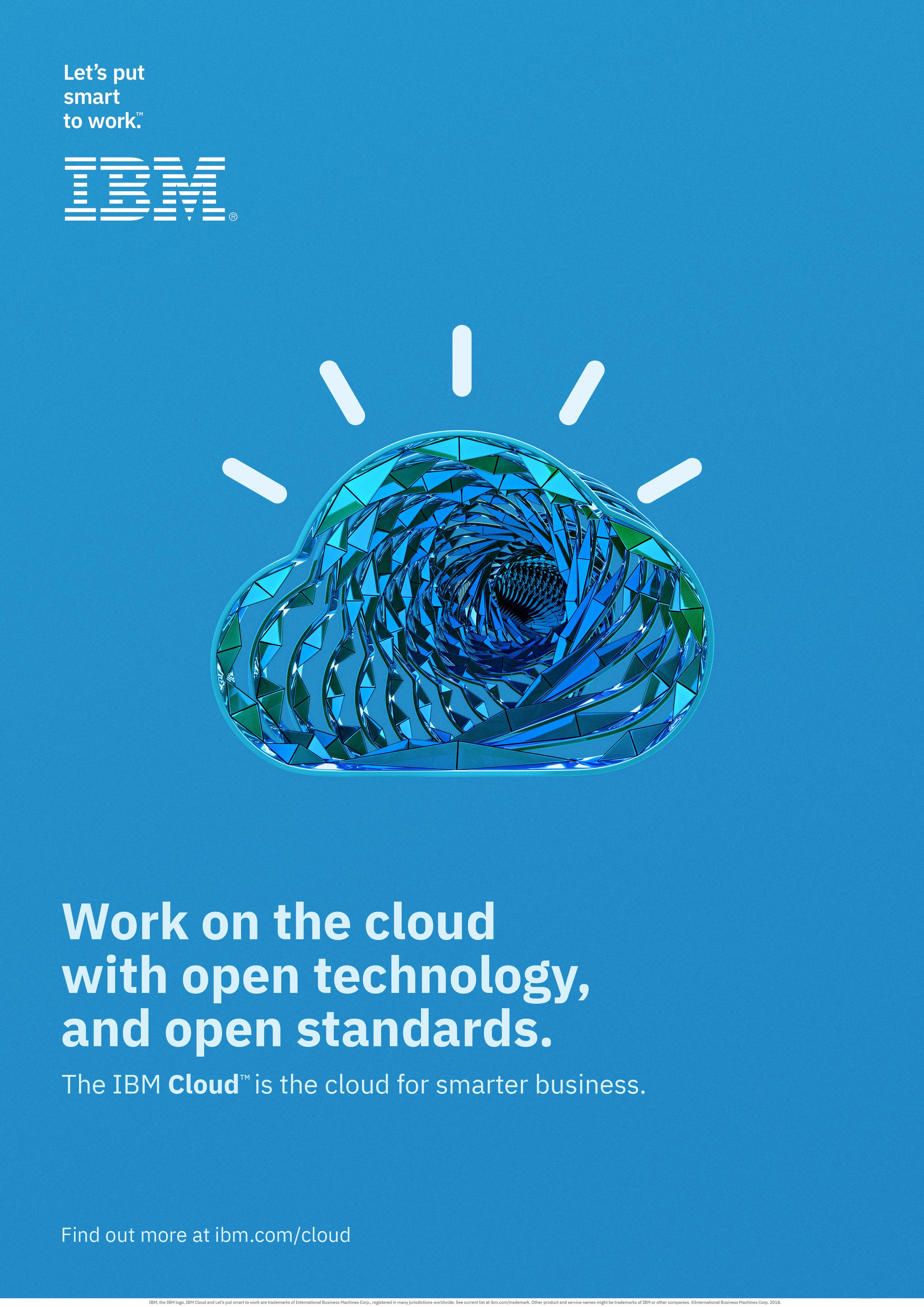


From Fontes' perspective, hybrid work brings more layers of communication – such as chat apps, video conferencing, collaboration tools. These, he says, add both complexity and delay, and as such, organisations are struggling to keep up with the number of decisions they must make daily.
“Yet, when a company digitises decision making, the context for a decision is captured, as well as its outcome,” he says. “Transactional systems are updated automatically, and each decision becomes part of the data model used for future recommendations.”
“So by removing manual steps and recording the context of decisions, digitisation helps teams work more efficiently, regardless of whether they’re in-office or remote.”
When it comes to putting digitised decision-making solutions in place, Fontes reveals that companies’ approaches vary. Many supply chain teams will “start by evaluating the challenges they face and identifying where processes and actions can be streamlined or automated”; others “start by addressing one area of complexity in their business where decision making is requiring a lot of time”, such as with processes, data models, and spreadsheets – all areas that lend themselves to automation.
He says a good guideline is to “prioritise specific areas with high strategic impact and less complexity, and then build a roadmap to address the other challenges”.
Digitising decisions ‘doesn’t mean replacing existing technology Fontes continues: “It’s important to note that digitising decisions for a specific supply chain process does not always require replacing existing technology, or choosing an alternative business intelligence or planning system.” He points out that data quality, data access and other integration issues “won’t delay decision intelligence projects”.
FRED FONTES HEAD OF GROWTH, AERA TECHNOLOGY“WHEN A COMPANY DIGITISES DECISION MAKING, THE CONTEXT FOR A DECISION IS CAPTURED, AS WELL AS ITS OUTCOME”
Fontes stresses that decision intelligence platforms are designed to complement existing enterprise resource planning and other core systems, without impact to data.
“Deployment,” he says “can focus on one challenging area, after which companies can gauge the results, then evaluate the next priority on their digital decision roadmap”.
“Digitising and automating decision making can have a broad, transformative impact. My best advice is simply get started.
Don’t get left behind as these innovative technologies continue to evolve and deliver impactful results for supply chains.”
One of the big problems for any business these days – especially one looking to digitally transform itself – is the Great Resignation, closely linked to the newly-discussed phenomenon of ‘quiet quitting’, both of which have seen people leave jobs and switch careers at an unprecedented level.

Are digital tools able to help prevent the

pressures on supply chain teams,” says Fontes, a former Associate Partner at McKinsey & Company. “The demand for fast, accurate decisions is beyond the ability of the smaller pool of experienced decision makers at most companies, and that was the case even before those disruptions. This is creating an urgent need for supply chains to find alternative solutions to manage their business.”
He says that, as workers retire or move on to new roles, their knowledge and decisionmaking experience is lost.
Fred Fontes, Head of Growth with Aera Technology, cites two examples of large companies who are using digital decision making to good effect.
“There’s a large pharmaceutical organisation that’s using decision intelligence to deliver near-realtime order updates and proactive communication to customers in the medical devices space.


“Prior to this, the customer-facing side of the organisation did not have visibility into the complex supply chain for these products, so availability information was not accurate.”

He gives another case study of a global steel manufacturer that is automating its decision-making processes to manage orders from the point of creation all the way through its supply chain and distribution network.
“The company is automatically identifying, assessing, and resolving any potential issues with customer delivery, and gaining the ability to inform the customer with as much lead time as possible that their order may or will be late,” Fontes says. “These are just a few workplace benefits of decision intelligence, and they’re set to transform how we make supply chain decisions.”
“TECH THAT DIGITISES DECISION MAKING RETAINS KNOWLEDGE FROM RETIREES AND OTHERS WHO HAVE LEFT”
FRED FONTES
HEAD OF GROWTH, AERA TECHNOLOGY



logic, and either execute automatically or present recommendations to a human operator.

“As those team members interact with the recommendations their knowledge of the business is captured, so that it can be used for future decisions, creating a cycle of continuous improvement,” he explains.
“With digitisation, decision making is no longer constrained by people. By automating the decision-making process, you can make 10,000 decisions a day if you need to. Team members can be in the loop for the highvalue, strategic decisions – which typically account for roughly 20% of those that need to be made.”
Lost knowledge is a big problem for businesses
Protecting against knowledge loss in the face of departing staff is one challenge of the Great Resignation and ‘quiet quitting’. Another
knowledge from retirees or other decision makers who’ve departed, they also deliver employee empowerment and retention in a competitive labour market.”
He adds: “By optimising, orchestrating, and accelerating decision making, companies can enable more decisions made by fewer people. Employees also gain an increased sense of doing their jobs successfully as they spend less time on repetitive and transactional activities that are better suited to machines. Instead, they’re able to focus on thinking creatively, beyond the data. They can build better strategies and stronger business relationships.”
Fontes believes, too, that the evolution of digital decision making has the power to change talent recruitment and acquisition. “As decision intelligence becomes the norm, people will want to work for companies that are adopting these technologies.”
And it is technology he says can be applied with equal effectiveness to every

“BY OPTIMISING DECISION MAKING, COMPANIES CAN ENABLE MORE DECISIONS TO BE MADE BY FEWER PEOPLE”
FRED FONTES HEAD OF GROWTH, AERA TECHNOLOGY
 WRITTEN BY: GEORGE HOPKIN
PRODUCED BY: KRIS PALMER
WRITTEN BY: GEORGE HOPKIN
PRODUCED BY: KRIS PALMER


With well over a quarter of a billion residents and a capital city housing more people than London, Indonesia is a market primed for rideshare startups. These new arrivals are, however, overshadowed by one company that’s been instrumental to the nation’s development, synonymous with both taxicabs and technology.
Jakarta-based Bluebird Group celebrates 50 years in business this year. Beginning life as a startup in 1972, founder Mutiara Djokosoetono had a specific vision from the outset: to generate a culture that would fully embrace technology.
The company can point to a number of historic firsts – in the 1970s, Bluebird Group was the first transport provider with a call centre in Jakarta. And, making use of one of the earliest mobile tech platforms, the Group worked with BlackBerry’s parent company, Research in Motion, in 1997 to allow people to call for transport using the handset as a data device, rather than simply phoning in the call.
Today in 2022, the company is continuing this technological journey and heading off competition from more recent startup rideshare companies.
“We are a provider of taxi services, above all, so we make sure the clients receive a privileged service,” explains Andoko Wicaksono, CIO of Bluebird Group. “This starts with the ease of ordering a taxi, the promptness and cleanliness of the car, the courtesy of the drivers when they greet the customer, and more.
“In Indonesia, we are very famous on that front – for clean, honest and high-level service.”

Bluebird Group, explains how 50 years of technology built a world-class business

Bluebird Group puts people first with technology Wicaksono explains that Bluebird's modernisation plans place people firmly at the forefront. With more than 20,000 vehicles and drivers working for the company – in addition to millions of customers – people are an important part of its continued success.

“We are also committed to being secure by design; we’re always thinking about security, how it’s done, and how it works with policies and controls,” says Wicaksono. “Furthermore, we’re agile and committed to continuous improvement. We need to maintain the investment in our people, and the team has to embrace the job.”
Placing trust and reliability at the centre of Bluebird Group’s transformational plans, though, presents a challenge: finding the right balance between customer integrity and providing the best possible services.
“People should be able to trust us to handle their data in a secure manner,” says Wicaksono. “For example, when you submit data on our website or in our apps, we should handle the data correctly and not share it; if we move the data from different environments, we have to be secure.”
Bluebird Group already utilises cloud platforms for data storage, but it also has 40 physical sites across Indonesia that must be networked into the company in a secure manner.
“As you can imagine, there are a lot of challenges in managing communications between the sites – particularly the remote sites where communications' systems might not be as advanced as in Java,” explains Wicaksono. “So the priority is still security, even though we may sacrifice, for example, speed. But that isn’t that much of a sacrifice, as the infrastructure is improving.”
A passion for programming drives technology ambitions Wicaksono hails from a technology background – he co-founded London-based Switchlab, which focused on the R&D aspect of telecom technology, then went on to take a range of influential CIO
“All our taxis are equipped with IoT devices which, for example, monitor the fatigue of the driver”
ANDOKO WICAKSONO CIO, BLUEBIRD GROUP

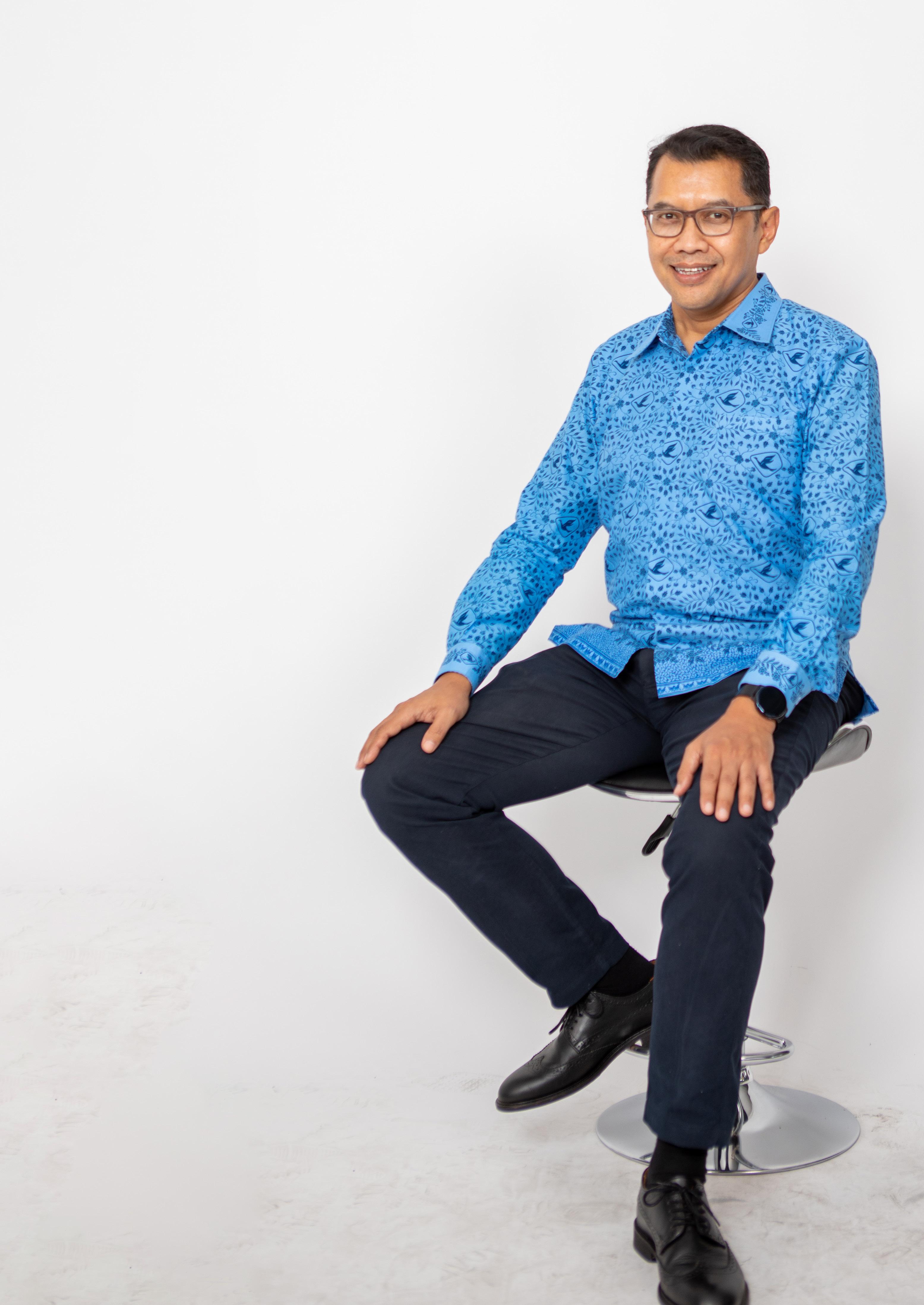
LOCATION: INDONESIA
PT Bluebird Tbk. (IDX: “BIRD”) is a public company in the field of passenger transportation and land transportation services which has 17 subsidiaries spread across 18 locations in Indonesia (Jadetabek, Cilegon, Medan, Manado, Bandung, Palembang, Padang, Pangkalpinang, Batam, Bali, Lombok , Semarang, Surabaya, Pekanbaru, Makassar, Balikpapan, Solo and Yogyakarta).
Bluebird is committed to providing safe, reliable and comfortable land transportation services with easy access for customers. The company's extensive distribution network includes more than 600 exclusive points in hotels, malls, central hubs, as well as a bold range of reservation channels. The expansion of accessibility is increasing with the presence of the MyBluebird application, which now has 20 new features and various transaction methods to support the ease and convenience of mobility.
Bluebird's business spans across several main pillars including regular taxi services (under the “Bluebird” and “Pusaka” brands); executive taxi service (under the “Silver Bird” brand); limousine and car rental services (under the “Golden Bird” brand); bus rental services (under the “Big Bird” brand); logistics services (under the brand “Bluebird Kirim”); shuttle service (under the brand “CitiTrans”) PT Bluebird Tbk. has been listed on the Indonesia Stock Exchange since November 5, 2014.

and CTO roles in telecom companies and startups, before joining Bluebird Group in June 2022.
And his love for technology extends beyond the office, as Wicaksono has built his very own home IT lab to test hardware and software, while having fun at the same time.
“I have a passion for robotics, so I have a number of small robots at home,” grins Wicaksono. “I also have a passion for programming on Python, so I have some Raspberry Pis to help with home automation.”
While the home lab initially grew out of Wicaksono’s curiosity about tech hardware and software, he found that it also helped to effortlessly maintain his excitement for programming and coding, despite the considerable demands on his time from other business areas.
“But family and friends don’t go in my lab,” says Wicaksono with another smile. “It’s my den.”
During a storied career, he’s faced his fair share of challenges – but one of the most significant came when he was compelled to understand a great deal more about the business processes required to keep a company on the road to growth.
“It’s always changing, always evolving,” says Wicaksono. “I’ve watched the process of seeing simple ideas grow into a sustainable business. Every day is different, and it’s a constant adventure.”
Wicaksono describes his leadership style as direct, leading by example; so, while he confidently delegates tasks for greater corporate efficiency, he still takes the time to lead projects in a hands-on way to inspire his team.
“For example, we had an emergency situation where our taxi dispatch system went down at three in the morning,” explains Wicaksono. “I quickly jumped on a conference call with the senior management team to discover the progress, then passed on the

ANDOKO WICAKSONO CIO, BLUEBIRD GROUP
“In Indonesia, we are very famous on that front – for clean, honest and high-level service”
information to stakeholders and customers. When my team saw me working hard to fix this, it made them realise the importance of working hard on all of these issues.”
The challenges of taking tech into the boardroom
While Wicaksono may spend a lot more time in the boardroom than he did previously, he remains excited about technology and strongly believes it offers the solutions required by businesses looking to compete, survive and thrive.

“AI and automation are liberating employees to perform higher-value tasks than before, which means a company can become more strategic, more creative and identify more ways to meet business goals,” explains Wicaksono.
“If you have some tasks that are freed up by using AI, people can be more creative via increased strategic tasks, rather than the routine tasks that will have been replaced by AI.”
But it’s not just employees who need to learn to love technology, says Wicaksono, considering it a worthy goal to ensure C-suite executives also know the important details of complex technologies.
“The ability to demystify technology is, I think, crucial for a CIO,” he states. “I must demystify the subject for other leaders to make sure that the business becomes a catalyst for tech adoption.”
This is important because more IT decisions are being made by business executives, rather than the IT department that may have had that responsibility in
ANDOKO WICAKSONO CIO, BLUEBIRD GROUP
“We are also committed to being secure by design; we’re always thinking about security”
the past. It’s right that IT purchases are made with business goals in mind, but these executives need to understand the technologies to be able to apply this to the right tasks and business processes.
“For example, a decision to have a CRM is not made by the IT team but, more often, by the marketing team,” says Wicaksono. “And I think this is a very good thing – now, we understand more about our customers. The employee at the front of the business is a leader of the business in their department and is unlikely to be part of the IT team.”
points of vulnerability, cybersecurity is a fundamental part of the company’s daily operations. Such measures have become a critical part of the business, preventing infiltration and data stealing from bad actors.
Other disruptive technologies – including artificial intelligence and edge computing – are being integrated into the company as and when required, according to Wicaksono.
“The exception is for the Internet of Things (IoT), which we implemented years ago,” he explains. “All our taxis are equipped with IoT devices that, for example, monitor the fatigue of the driver; if a driver shows fatigue, we can see that to then alert both the driver and the system itself, allowing action to be taken.”
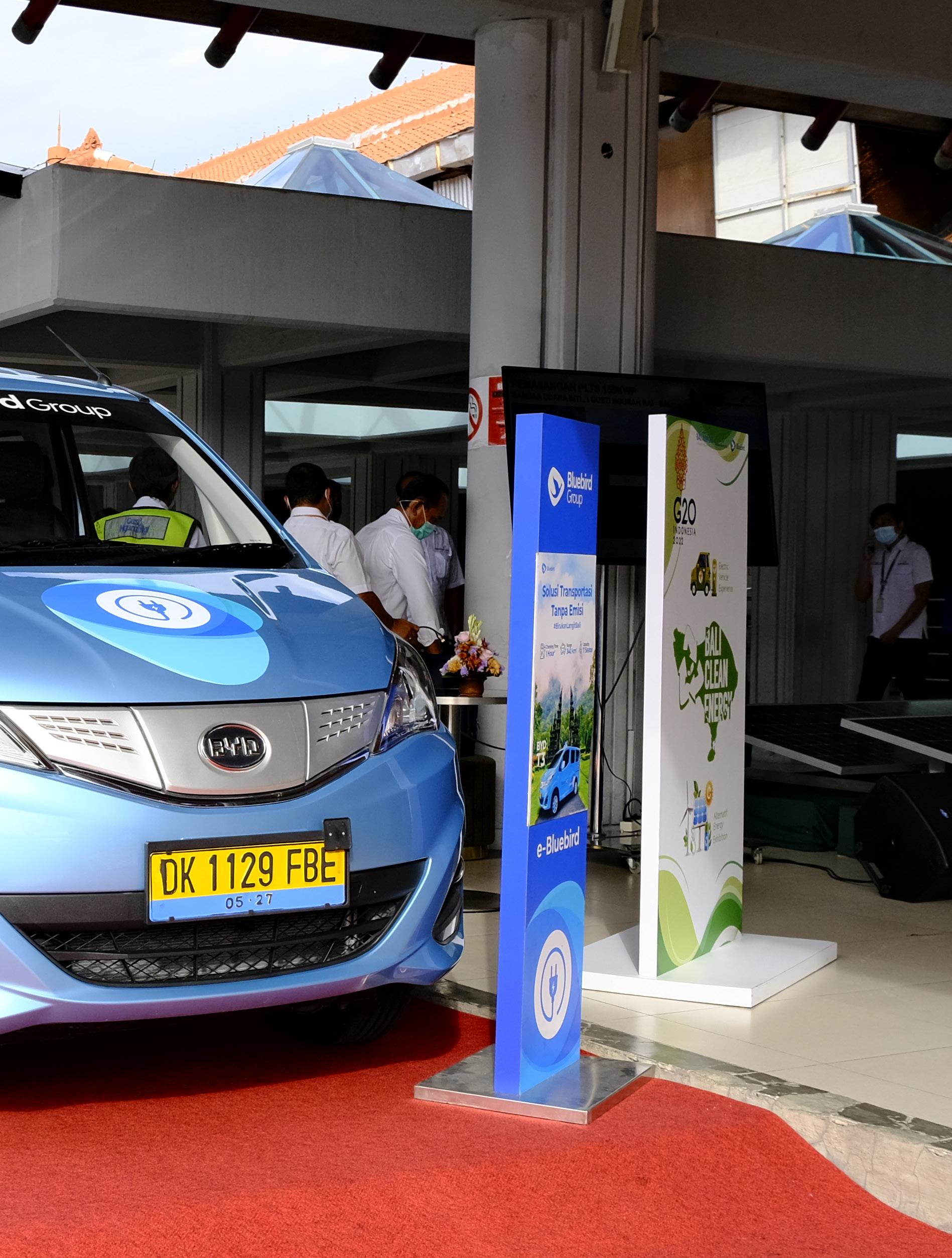
Customer expectation has never been higher in the transport and taxi sector. People are looking for personalised services alongside the ability to make bookings without speaking to a human support worker.
“One of the clearest advantages of digitisation that we’ve been able to implement are robust digital tools and strategies – and this will lead directly to increased customer satisfaction,” explains Wicaksono.
Bluebird Group engages with a range of partners in marketing, distribution and technology to aid in its mission. Technology transformation presents a new challenge: combining these multiple elements and the unavoidable complexity that results.
“It’s the end of the ‘one-stop shop’,” says Wicaksono. “One of the most important trends is to have specialties. Our preference is for partners that have a speciality in their own domain.”

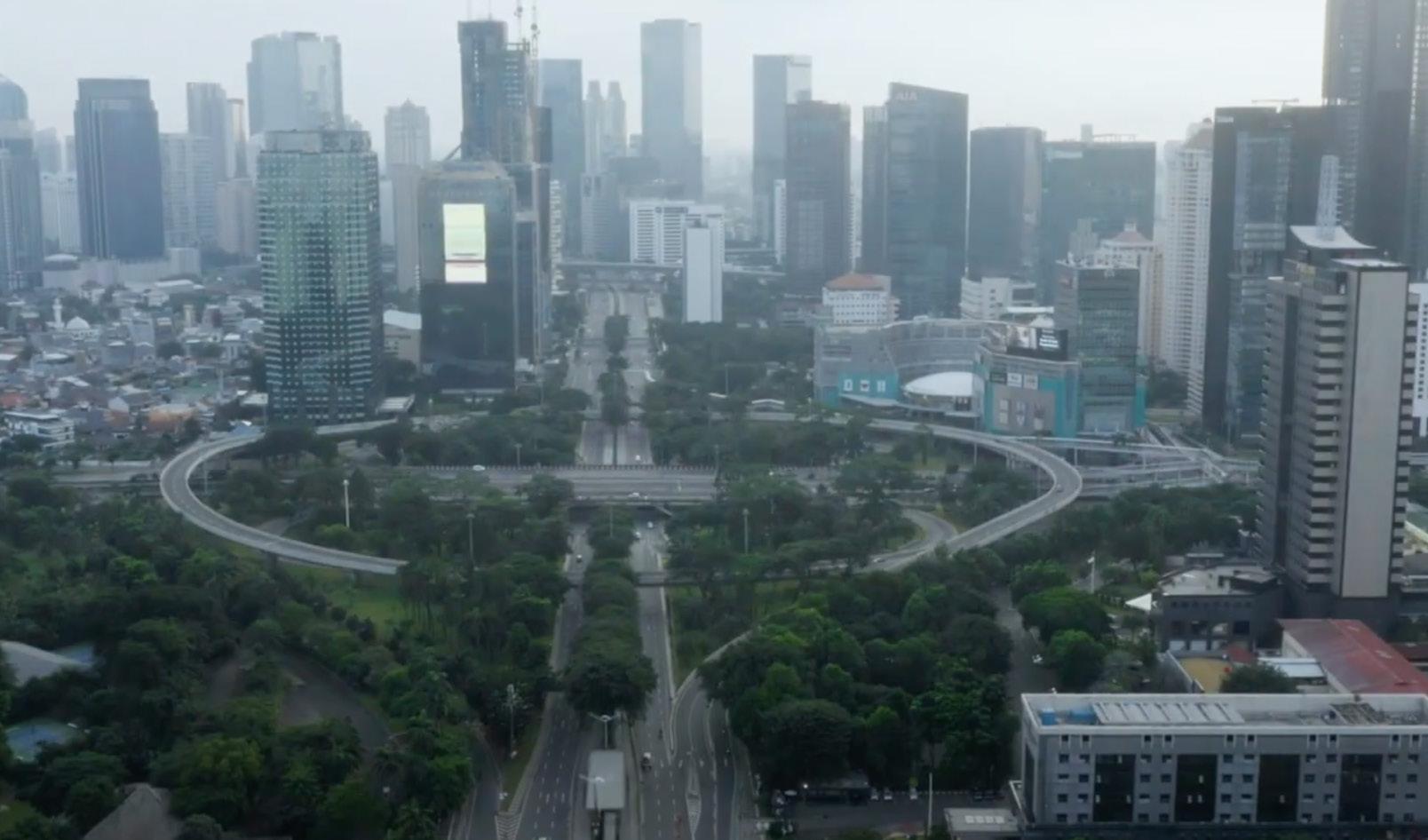 ANDOKO WICAKSONO CIO, BLUEBIRD GROUP
ANDOKO WICAKSONO CIO, BLUEBIRD GROUP
“I’ve watched the process of seeing simple ideas grow into a sustainable business. Every day is different”
Andoko Wicaksono, CIO of Bluebird Group, on transport technology
BlackBerry’s AI software keeps malware at bay Bluebird Group knows the leading-edge security features in BlackBerrys’ mobile platform from the time they implemented Indonesia’s first taxi reservation BlackBerry app in 2011. Bluebird Group has continued this relationship, working with the Canadabased technology provider to combat cyber threats. “We are leveraging BlackBerry’s AI software to protect against and prevent malware, using enforcement of device policy,” says Wicaksono. “BlackBerry is a very valuable partner and gives us peace of mind while conducting business.
The next 12-18 months are going to present challenges – some of which will also be seen across various industries around the world, while others will be unique to the company or industry’s geographic focus.
“Here in Indonesia, we have new competition in terms of mobility and ridehailing,” he says. “There are newcomers here already; more will arrive in the next year and a half. But we already have a very strong foundation, and we’re looking to innovate with disruptive technologies in the future.
“Now, we are planning the next five-10 years. We’re very satisfied with the foundation we’ve laid down, but we’re not complacent; we need to be vigilant to meet future competition in the market as well as anticipate changes to regulations by the government.”
Electric vehicles and mobility-as a-service are the future Within his role as CIO, Wicaksono is also charged with keeping a close eye on emerging trends in the industry, identifying two that are of particular interest to Bluebird Group.
“One is electric vehicles (EV) and growing demand from the public that public transport should make use of EV to reduce greenhouse gas emissions,” explains Wicaksono. “We already have some EV electric vehicles in our fleet and that number is growing.”
The second trend is servitisation, where customers pay for a service rather than buy the equipment, and this is affecting all industries – including the taxi sector.
“Increasingly, people are using what is called mobility-as-a-service (MaaS) to meet their transportation needs,” he says. “MaaS operators will be the future, and that will be the same for us.”

 BY: SEAN ASHCROFT
BY: GLEN WHITE
BY: SEAN ASHCROFT
BY: GLEN WHITE

In virtually any business context, sourcing the best products and services for the best value to meet customer needs, while also being sustainable, is no small matter. When this is happening across approximately 500 hospitality properties across Europe, the Middle East, Eurasia and Africa (EMEA), it is a significant undertaking.
Welcome to the working world of Philip Halanen, Head of Sourcing and Sustainability EMEA at Wyndham Hotels & Resorts, which boasts approximately 9,000 properties worldwide across 23 brands.
He is responsible for the design and delivery of Wyndham’s regional sourcing strategy, which focuses on delivering a cost-effective yet sustainable and ethical supply chain for hotels across the EMEA region. This role ties in well with Halanen’s responsibility over the sustainability strategy of the EMEA division.
In today’s world of turmoil and uncertainty, strategic sourcing takes huge significance in a business’ functionality, often being the difference between feeling the full brunt of supply disruption or successfully navigating your way through it; with ESG requirements, it can be the difference between compliance and hugely damaging non-compliance.

As Head of Sourcing & Sustainability EMEA at Wyndham Hotels & Resorts, Philip Halanen says that succeeding in his complex role comes down to clear and consistent communication




It is a job with multiple stakeholders and challenges, on both the sourcing and sustainability fronts.
“From a sourcing perspective, because we have various key markets across the region, you need to have suppliers who are local,” says Halanen. “This is to create efficient, sustainable supply chains with short lead times to market.”
This is why Halanen and his team constantly evaluate suppliers, to ensure they offer products and services “that are in line with our various brand standards”. He adds: “We operate different brands across the region, and each has a different set of standards, so it’s very important that localised suppliers are aligned to these, and that obviously their products and services are what the hotels need.”
For Halanen, there’s complexity, too, on the sustainability side. Again, he says that Wyndham constantly evaluates its suppliers to ensure they trade and operate ethically.
“We look at the labour they use in their manufacturing or creation processes, all the
way through to their emissions,” says Halanen. “Suppliers need the relevant documentation to show us they are trading in a way that is sustainable and ethical.”
Another challenge is winning over hoteliers for whom sustainability is not top of the agenda. “It's about creating the business case and justifications for people who are less convinced on the environmental impact of their operations,” Halanen explains. “You have to communicate that sustainability is critical not only from an environmental point of view, but also from a commercial perspective.”
Wyndham Hotels and Resorts has approximately 9K properties globally across 23 brands with around 819K rooms.
Interestingly, the pandemic helped here. Although COVID-19 was of course very damaging for the hospitality industry, Halanen feels the pandemic was “a catalyst for change – people want to rebound as better businesses”, and that it focused people's minds on sustainability – particularly in light of some ways the world benefitted from society’s shutdowns.
“Whether you’re a hotelier, a transport provider, or in the extended supply chain, now more than ever we’re aware of the importance of sustainability,” he says.
But to keep Wyndham’s ESG performance in EMEA on track, it’s Halanen’s job to ensure that the company’s sustainability programme is made accessible “by removing barriers to entry through making it easy to understand and giving hotel staff the tools and training they need to ensure they're equipped to succeed in this area”.

“When providing a network of suppliers for a hotel, you need to understand that each service or product required will have different stakeholders with different needs”
PHILIP HALANEN TITLE: HEAD OF SOURCING AND SUSTAINABILITY EMEA INDUSTRY: HOSPITALITY LOCATION: LONDON, UK
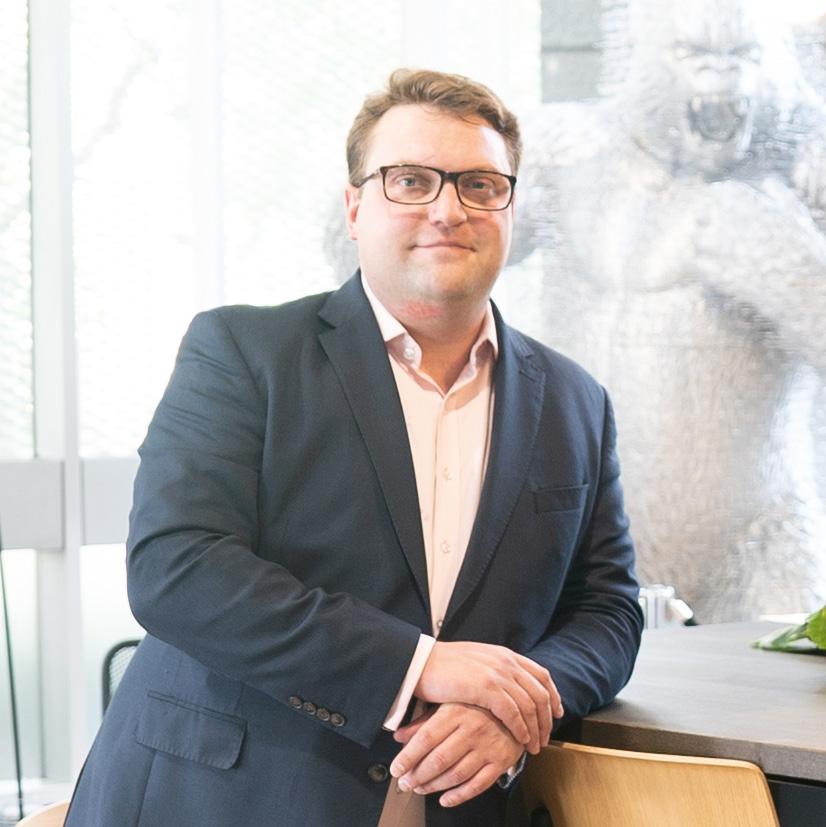
Having started his career in a variety of commercial and operational roles in the aviation and professional services industries, Philip is currently the Head of Sourcing & Sustainability for Wyndham Hotels & Resorts EMEA. In this role, Philip is responsible for the design and delivery of the Wyndham Hotels & Resorts’ divisional sustainability strategy, including oversight of the implementation and growth of the Wyndham Green Programme. Philip is also responsible for the company’s divisional sourcing team, ensuring that it delivers a cost effective, sustainable and ethical supplier network across the EMEA portfolio.


“I talk about sustainability every day, but I need to be aware that for others, it might not be an everyday conversation”
PHILIP HALANEN HEAD OF SOURCING AND SUSTAINABILITY EMEA, WYNDHAM HOTELS & RESORTS
The programme to which Halanen is referring is ‘Wyndham Green’, part of the group’s global social responsibility strategy. It comprises five key pillars: Climate Change, Energy Efficiency & Renewable Energy, Water Conservation, Waste Diversion and Biodiversity.
The Wyndham Green programme has been rolled out across the globe. It has the capacity to take a hotel from doing little on sustainability, through to making all aspects of its operations and extended supply chain sustainable, including in the way it procures goods and services.

Halanen reminds us there is a commercial point to sustainability, not just an environmental one: “It should be an important selling point for hotels, as consumers are really interested in staying in sustainable accommodation. For example, making small investments in energy efficient light bulbs can not only improve your bottom line by reducing power consumption, but it can also go some way to improving the sustainability characteristics of your hotel.”
A key focal point of Wyndham Green is “making sure our hotels reduce the energy they consume, whether it be electricity, gas or oil that a hotel is using”.
Halanen adds: “It's critical to track consumption utilities on a monthly basis, baselining it, and understanding how operational changes can be made to help properties reduce emissions.”
Measuring a hotel’s impact is pivotal to Wyndham Green: “If you don't know what your impact is now, you can’t credibly set a target for carbon reduction.
“The simplest way for a hotel to baseline their energy consumption is to do it on a month-by-month basis. This will show how much energy they’re using to operate the hotel, and will then baseline this over six months and see what it's telling them.”
Halanen points out that this is why Wyndham is encouraging its properties to start that measuring process as soon as possible – because “the more data they have, the better able they are to baseline what they’re using and then set strategies in place to reduce consumption”.
Once a hotel has a picture of its energy consumption, the next step is to reduce energy use, such as by making sure energy efficient light bulbs are used throughout a property, where possible.
“For such a relatively small change, this will have a big impact on the amount of energy a hotel will consume,” Halanen says. “And then there’s the use of renewable energy. Hotels can install solar power, or buy electricity from green sources.”
Water conservation is also another crucial sustainability area in many areas across the EMEA region, where water stress is not uncommon. Halanen says water use in bathrooms, public areas, laundries and kitchens must be monitored and regulated. Waste recycling is a further plank of
Wyndham Green, as Halanen and his team help hotels recycle, reducing what is sent to landfill.
“It’s about ensuring we continue eliminating items such as single-use plastics, and that we make sure that – when scarce items are used – they are recycled at property level,” he says.
Recycling programme a challenge in some EMEA regions One challenge when engaging hotels to participate in recycling programmes is the lack of recycling facilities available in certain countries. “Governments really should enable basic recycling for any hospitality business,” comments Halanen. “But if, like us, you’re a hotel company with five or six properties within a given city, you can bring people together and create the demand locally for recycling, speaking to the local government authorities or waste businesses to try to create such a service in that area. This way, it’s possible to unlock the benefits of having good sustainability schemes in place.”
“A simple way for a hotel to baseline energy consumption is to measure utility usage on a monthly basis”
PHILIP HALANEN
Video: Wyndham Hotels & Resorts in global sustainability drive

Then – on top of all these sustainability considerations – it’s important for hotels to consider the management of energy demands during seasonal peaks, such as summer and public holidays.
“Being in hospitality, you have to be aware of the impact of seasonality on your energy demand and ensure your operation is robust enough to minimise your use of utilities during these peaks.”
Ways to achieve this include strong in-house communications on the importance of sustainability initiatives, such as turning lights off or the installation of motion sensors to automate room power usage.
“When you’ve done one or more of these things, you will be able to look at the improvement on your consumption using the monthly consumption data,” Halanen stresses.

But, of course, Wyndham Green is not just about meeting internal ESG targets – it’s also about empowering guests to make sustainable choices.

“It’s important that hotels set an example,” says Halanen. “One of the things we’re looking at is the availability of EV charging points at our properties.
Many of our properties are in drive-to locations and the availability of EV charging is something we think is important to offer.
“Suppliers need the relevant documentation to show us they’re trading in a sustainable and ethical way”
It's about ensuring that we consider the choices travellers make when coming to one of our properties and that the necessary infrastructure or standard is in place to make a sustainable journey possible.

Wyndham’s stakeholders are many and varied, with customers being just one group. Another critical group of stakeholders are hotel franchisees, who are the owners, the operators and also the staff working at those hotels.
In terms of sourcing suppliers, Halanen explains that, when providing suppliers
for a property or a hotel, it's important to understand that each supplier – and the service or product they offer – will have a different stakeholder in the hotel operation.

“So, if we're talking about cleaning or linen categories, you have to consider the needs of the housekeeping team when selecting products,” he explains. “Similarly, if you’re sourcing software, you have to consider the IT managers and with food, it’s obviously the chefs you need to consider.”
He goes on “franchisees are always considering price, total cost of ownership and the cost of change when making purchasing decisions – as you would expect”.
“On the sustainability side, my stakeholders are very much our franchise partners, hotel staff, customers and internally my colleagues – as they are critical to championing the many benefits of the Wyndham Green programme.”
Halanen’s challenges are almost as complex as Wyndham’s stakeholders, and he concludes by pointing out that, to achieve success across sourcing and sustainability, “you need to ensure that people know why we're doing what we’re doing, and so communication is key”.
He finishes by summing up how the responsibilities of his role are woven throughout every aspect of his working day: “For me, it's my bread and butter; I talk about it every day. But for others, sustainability won’t be an everyday conversation. With the Wyndham Green Programme or our Preferred Supplier programme, it's really important that people not only understand what you need from them, but also what you're trying to achieve and the benefits that will bring them.”






